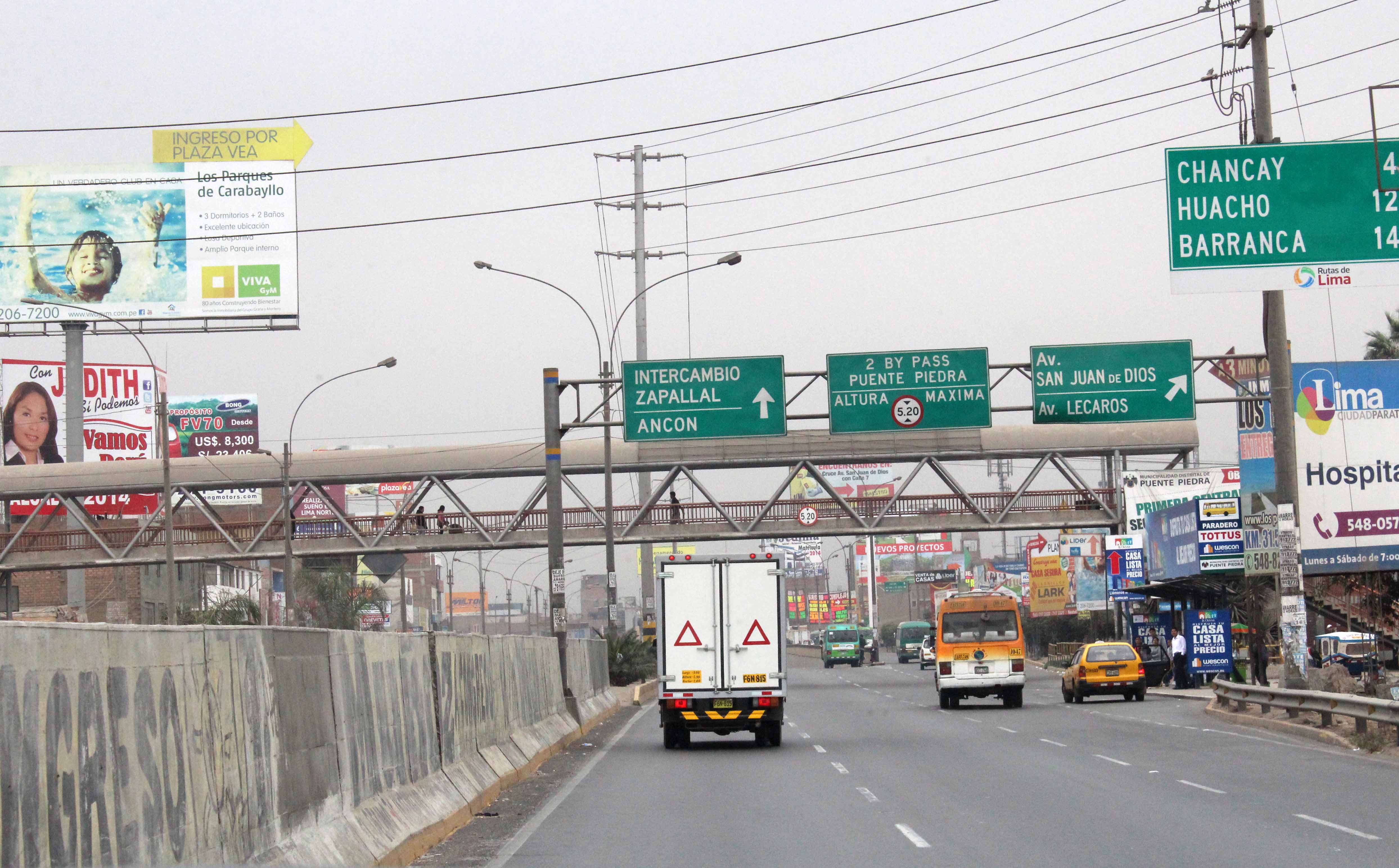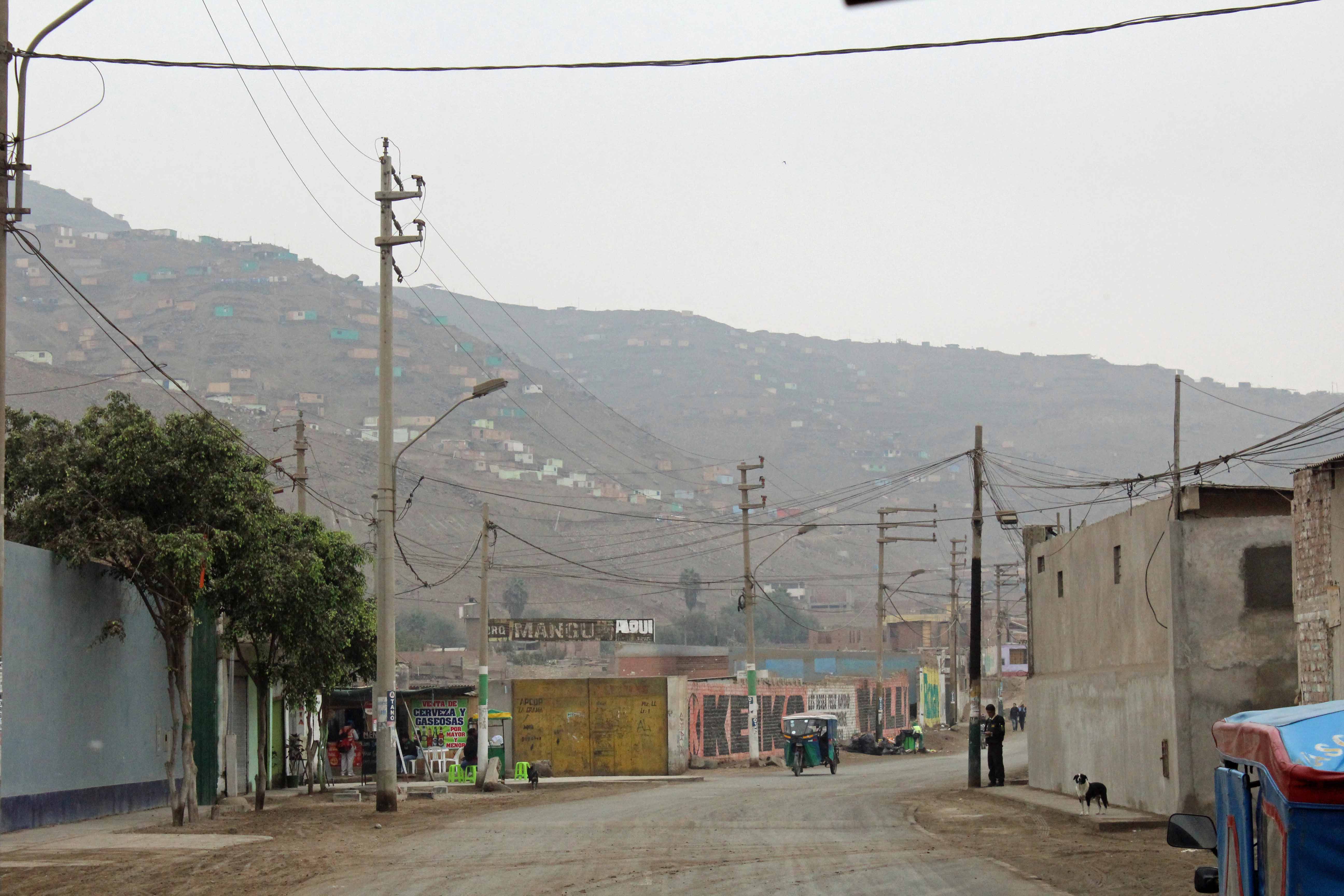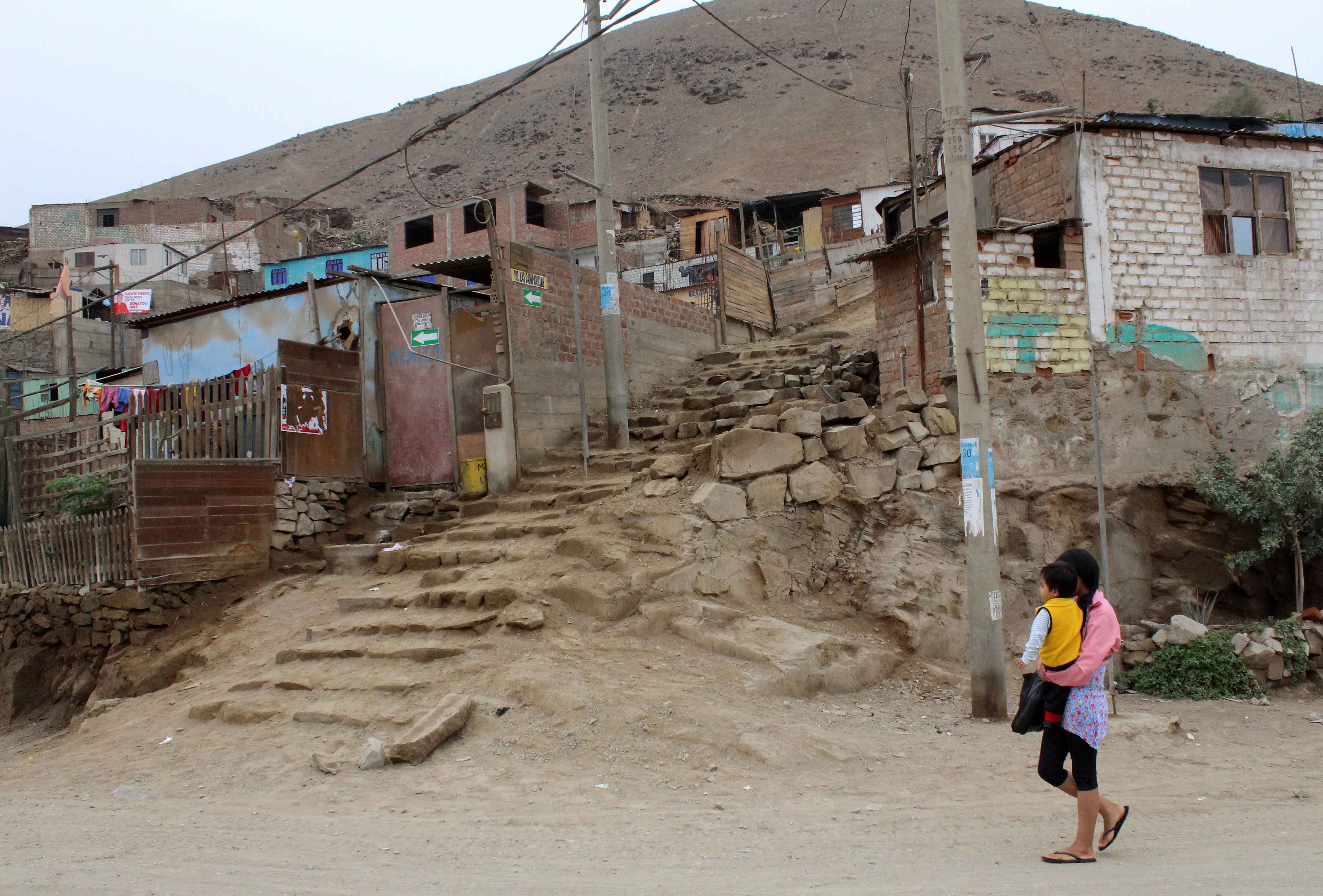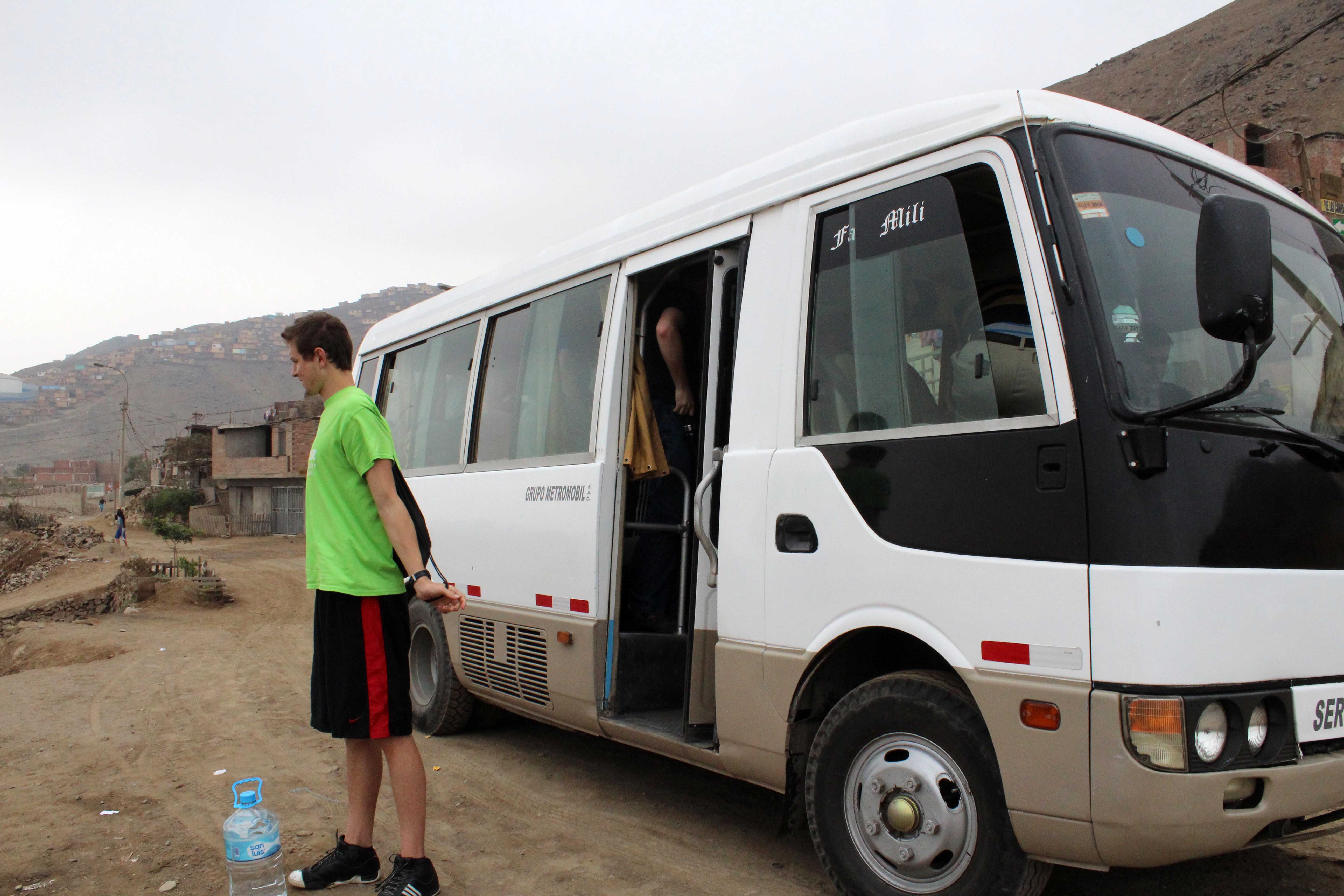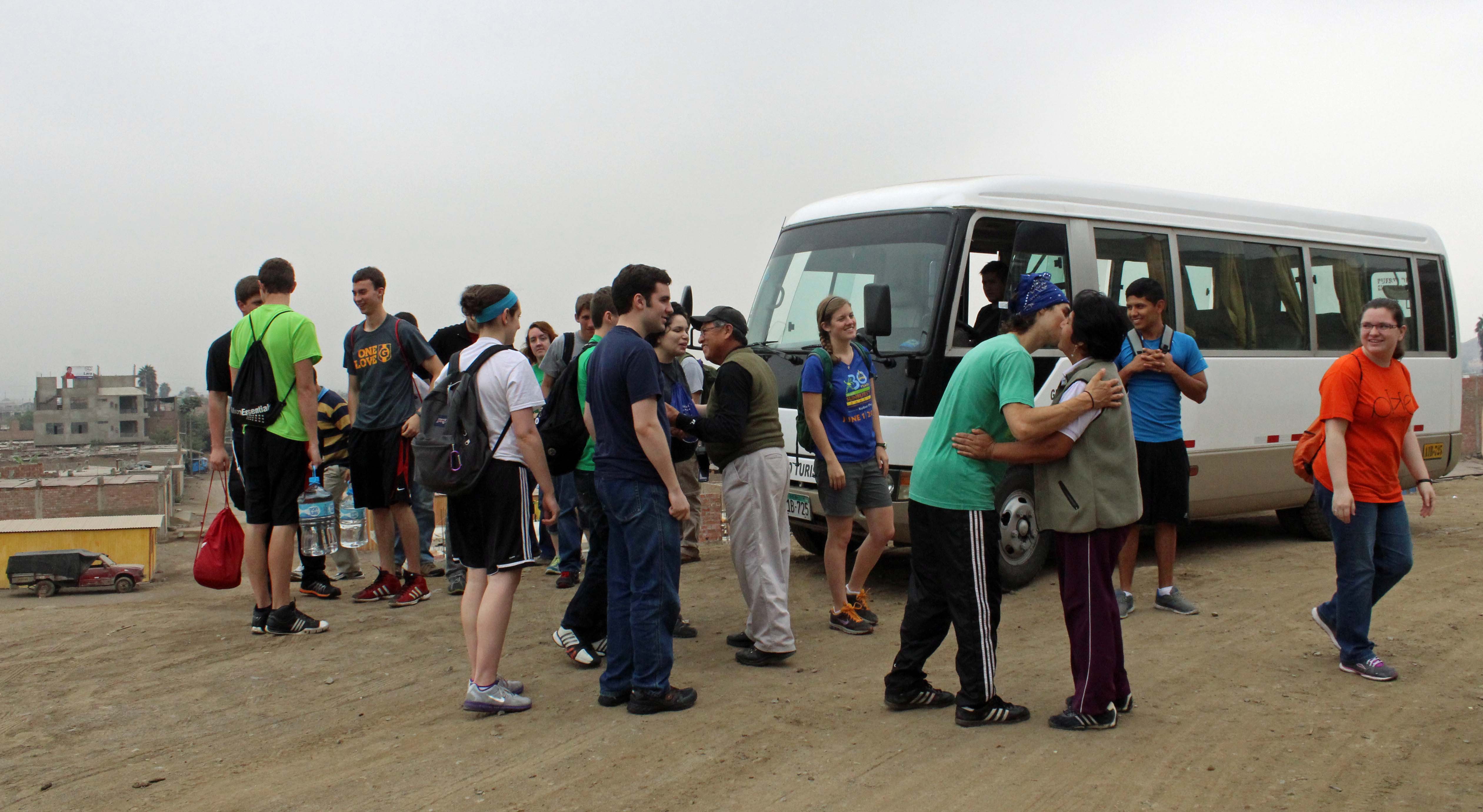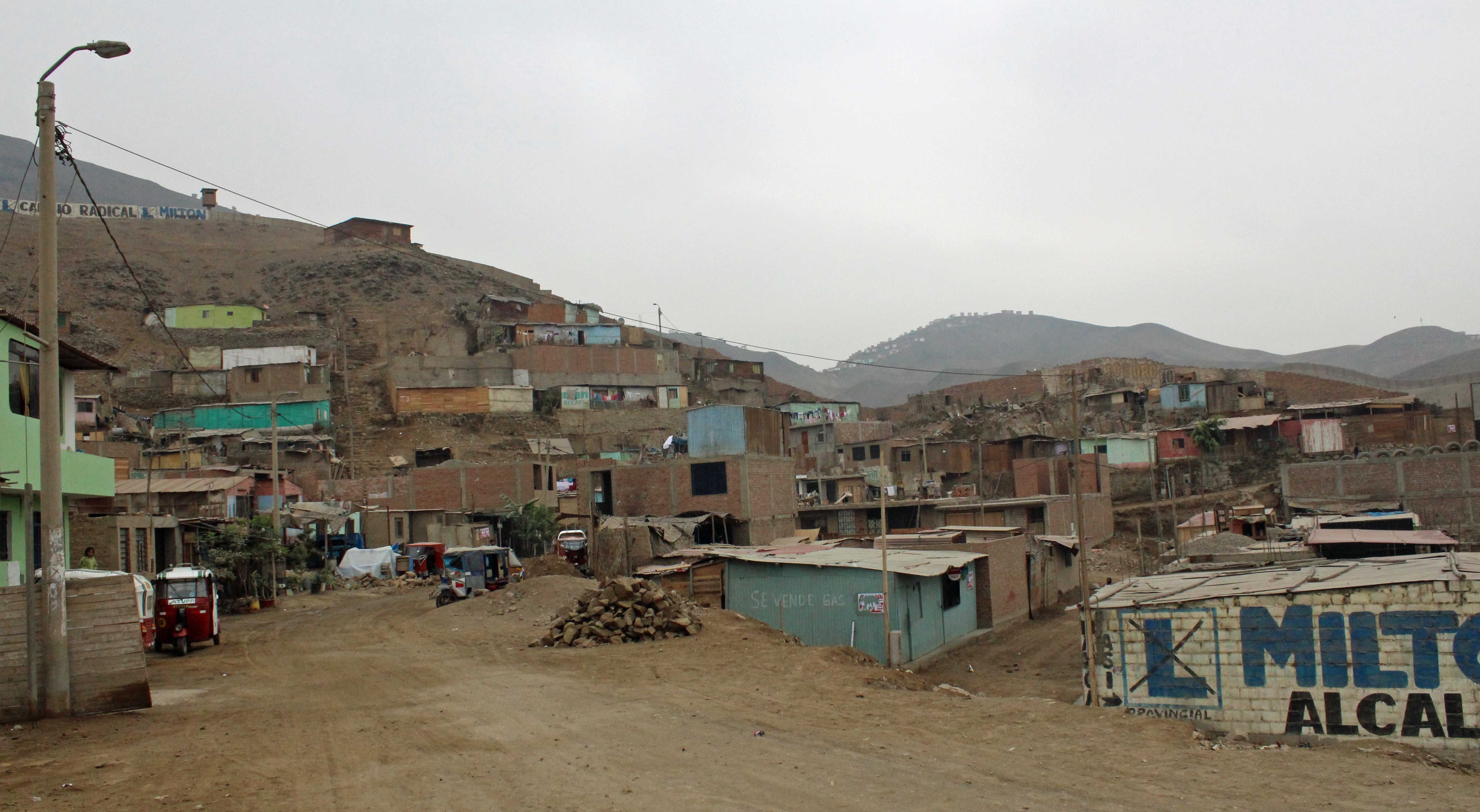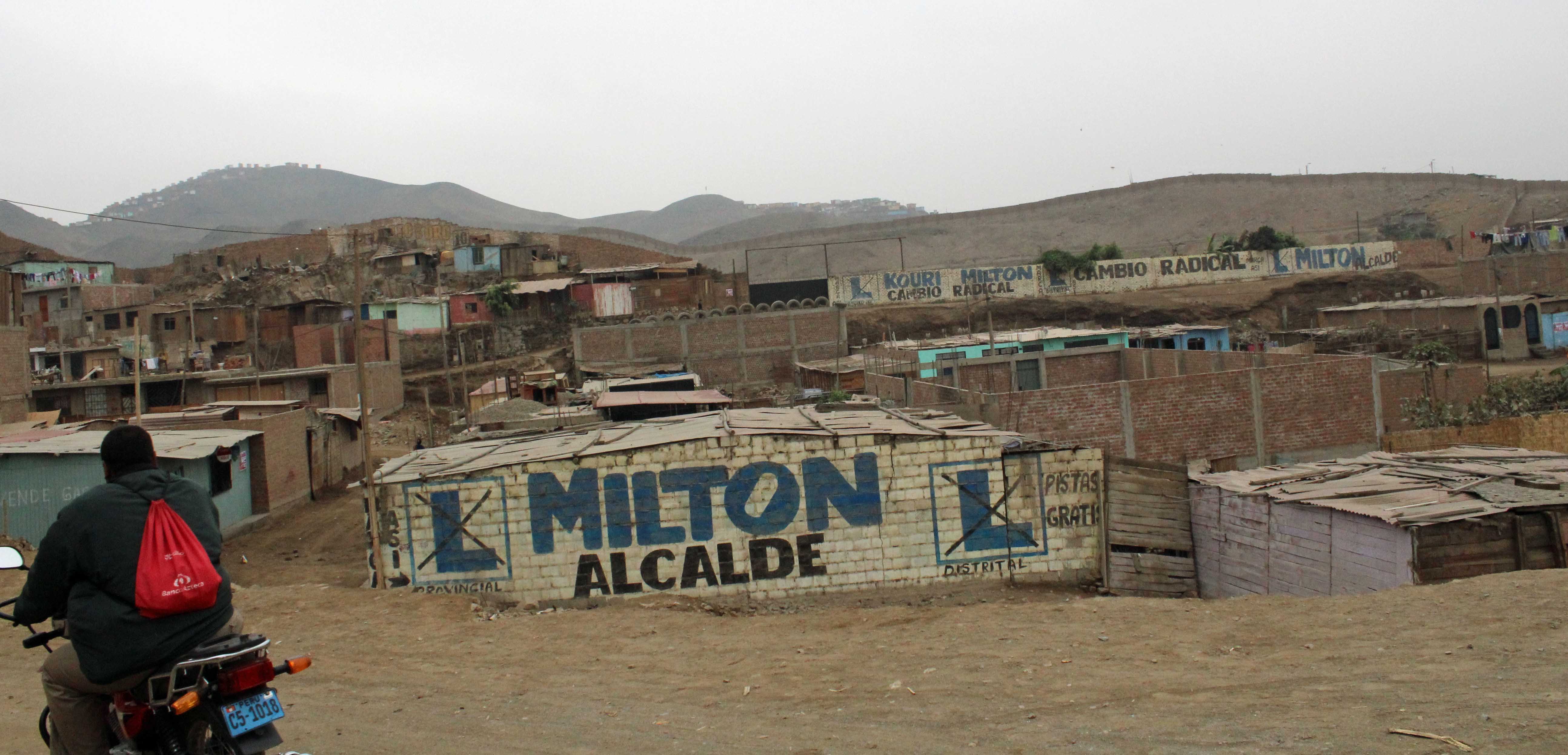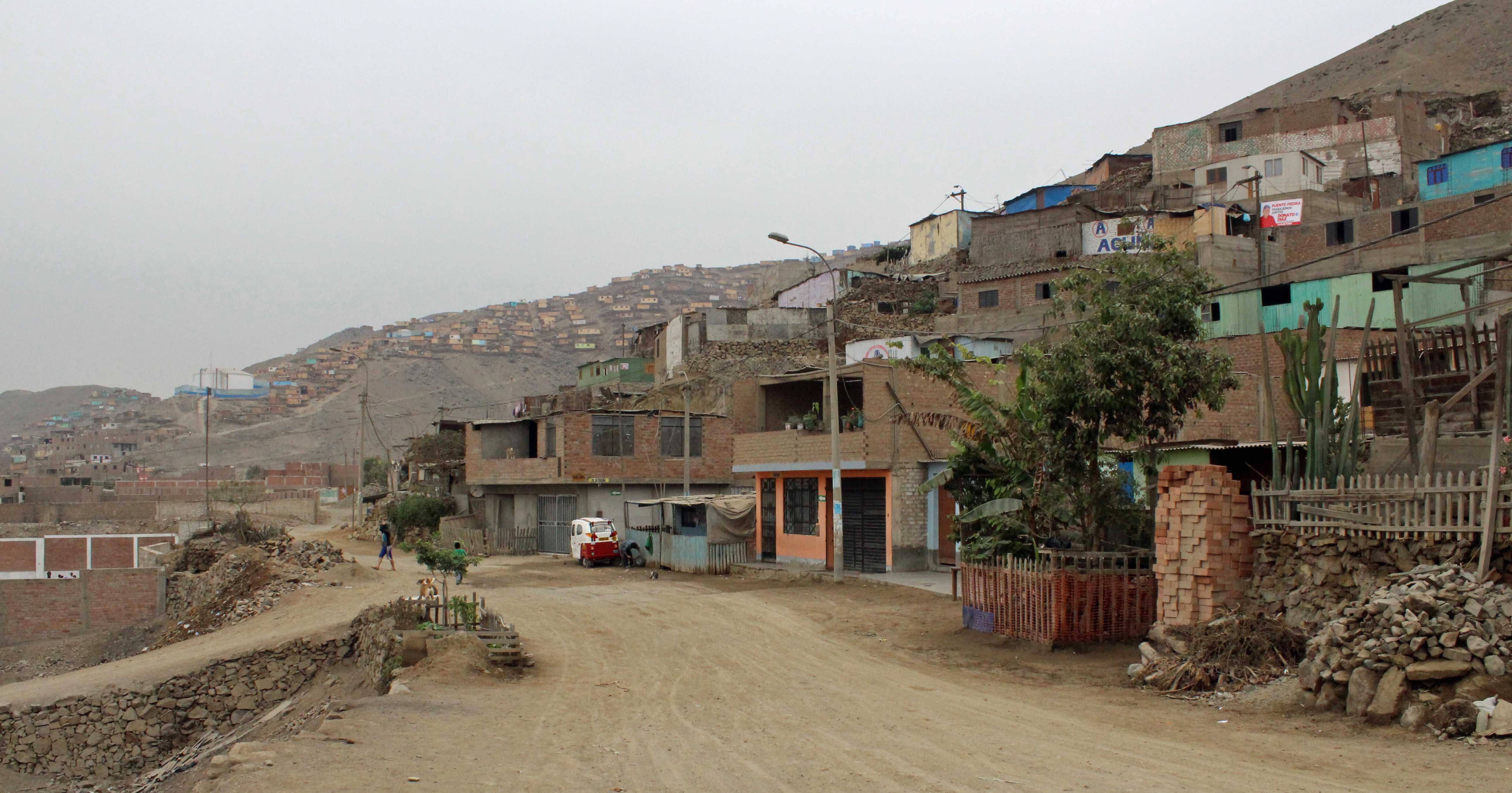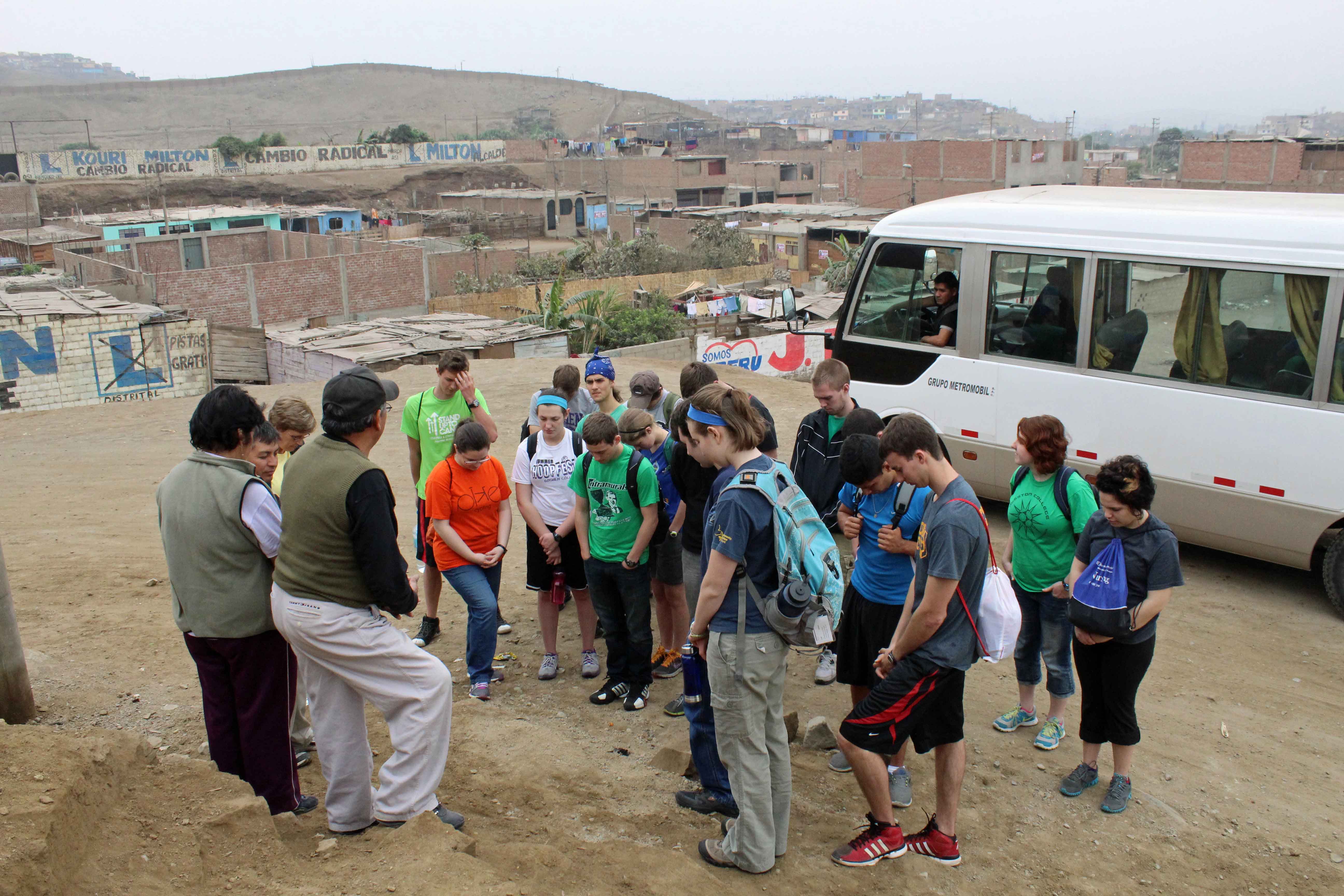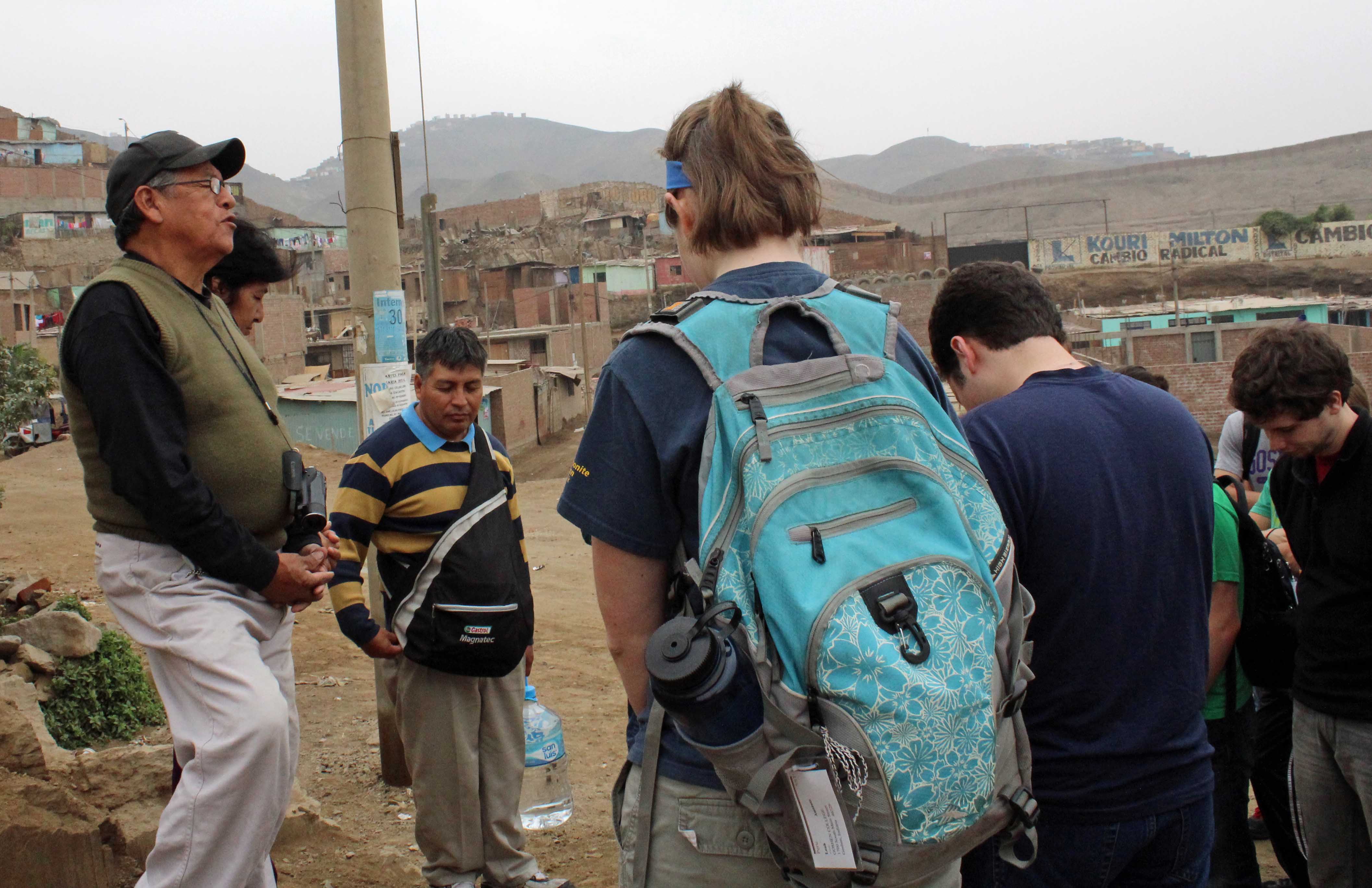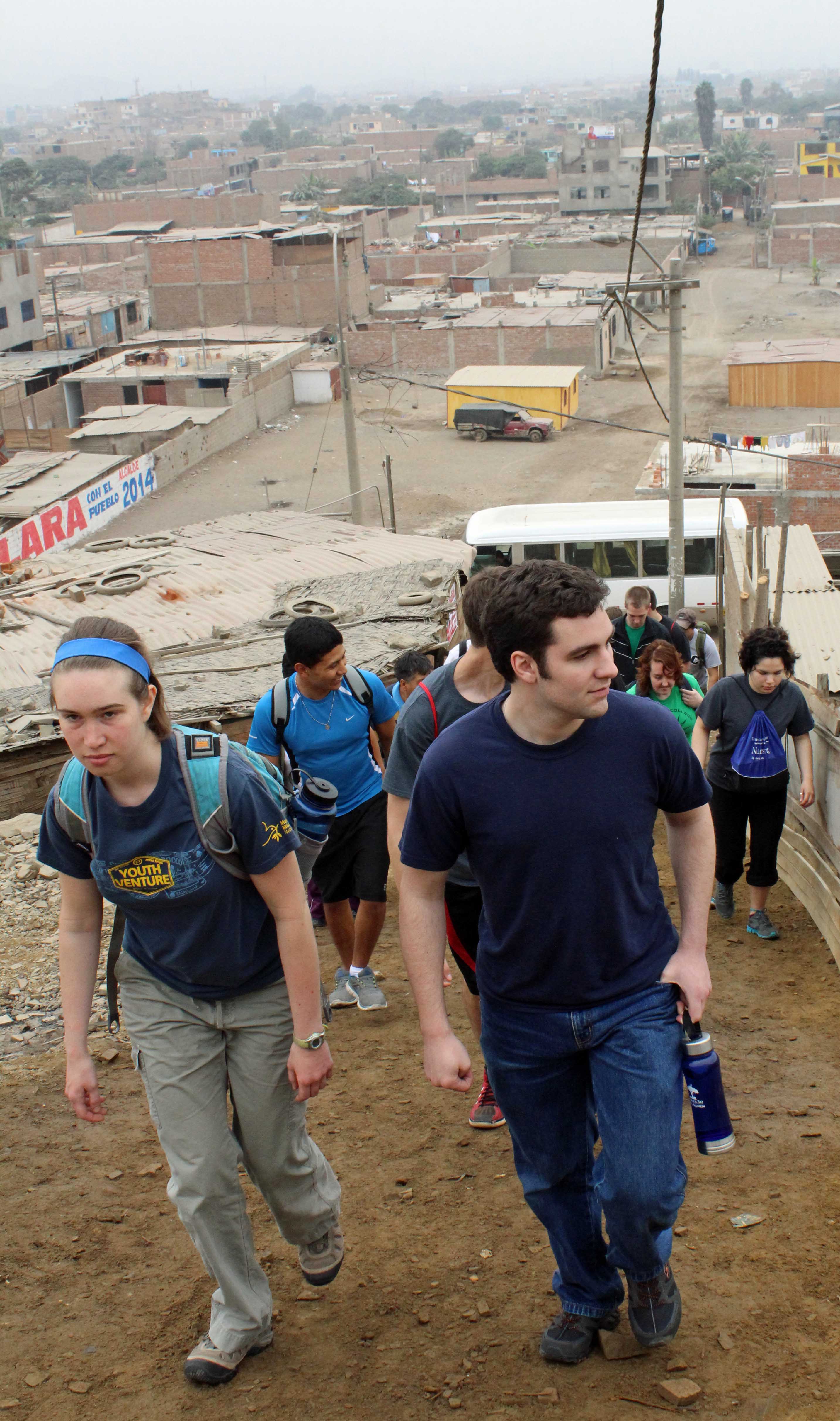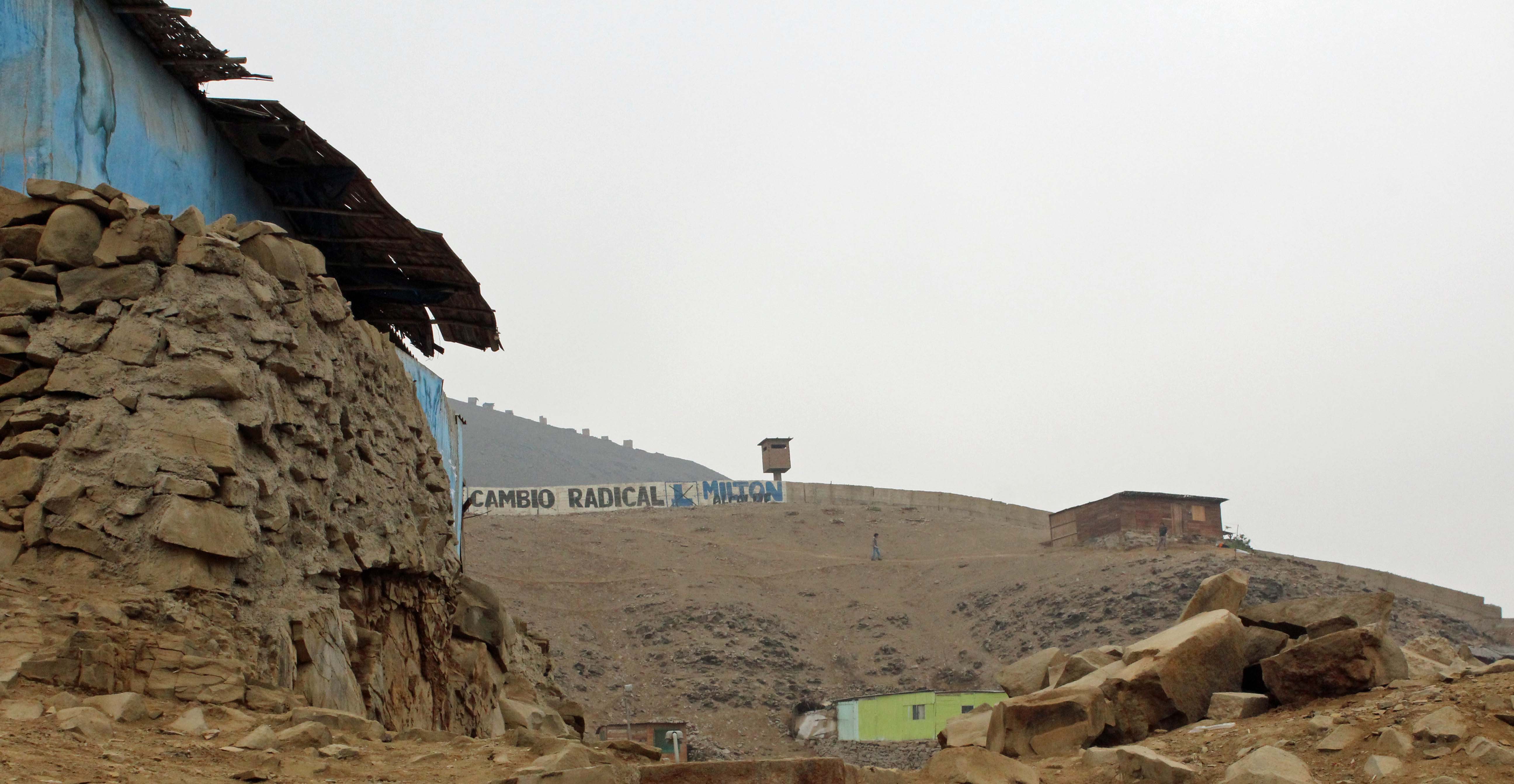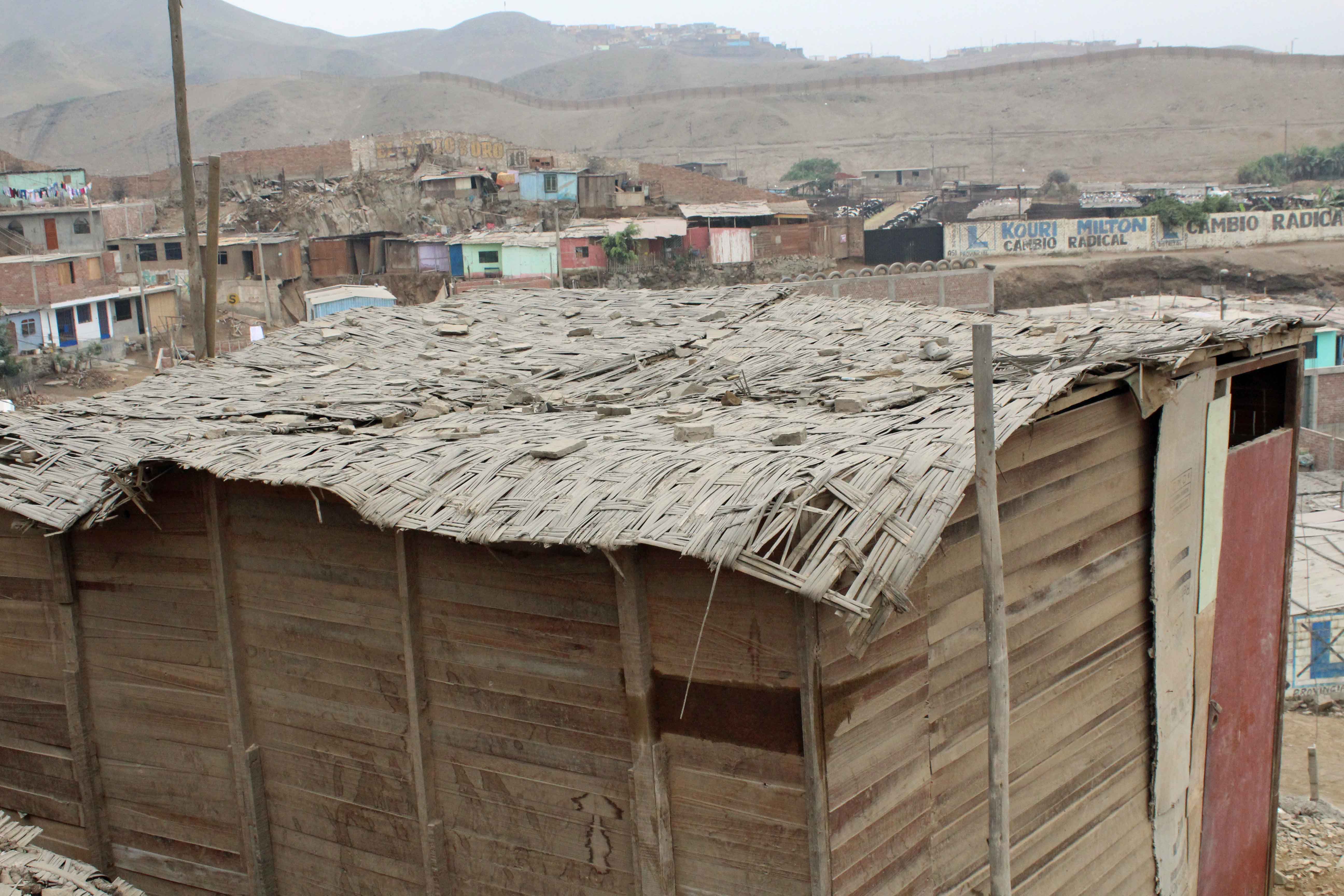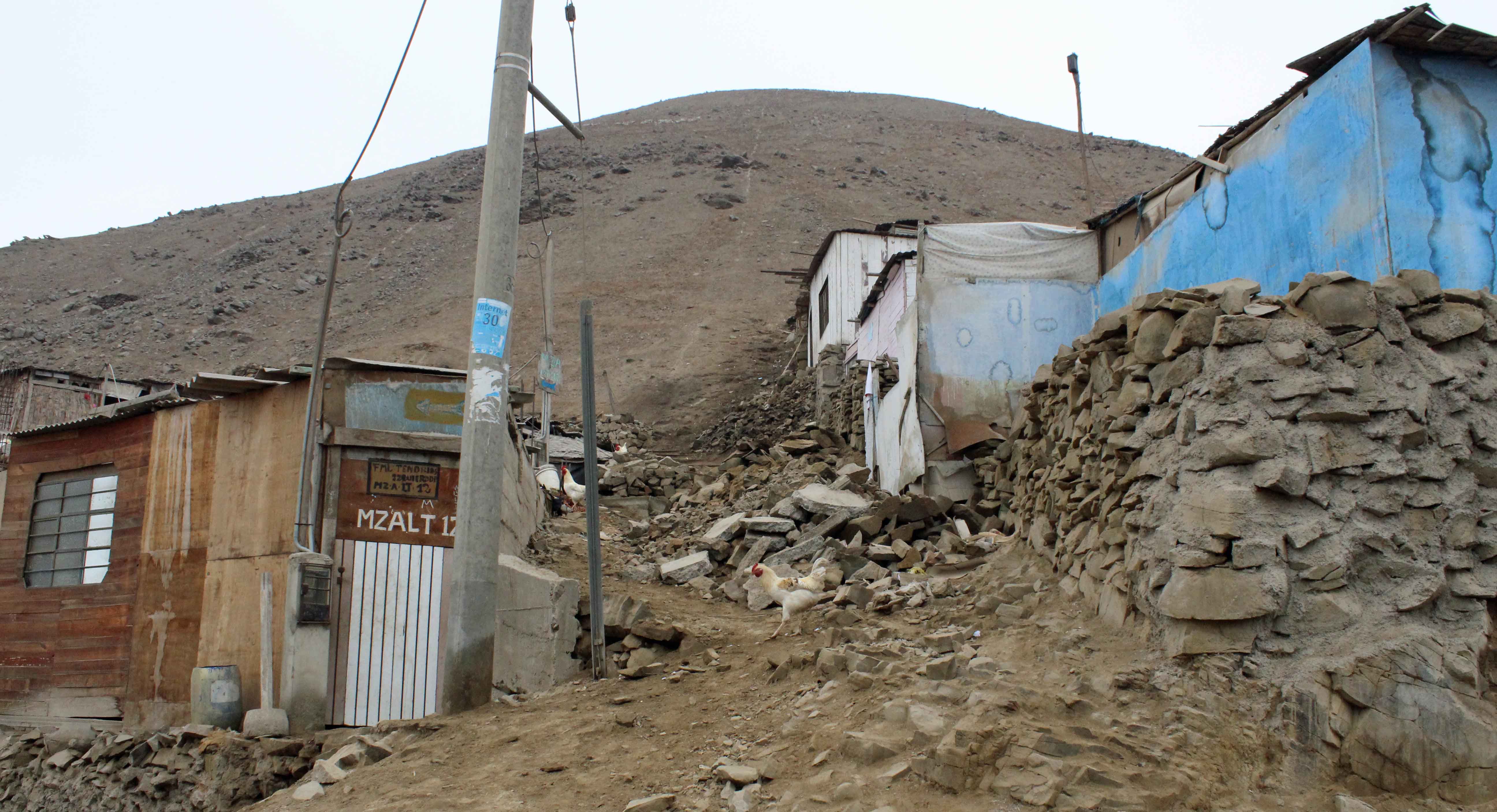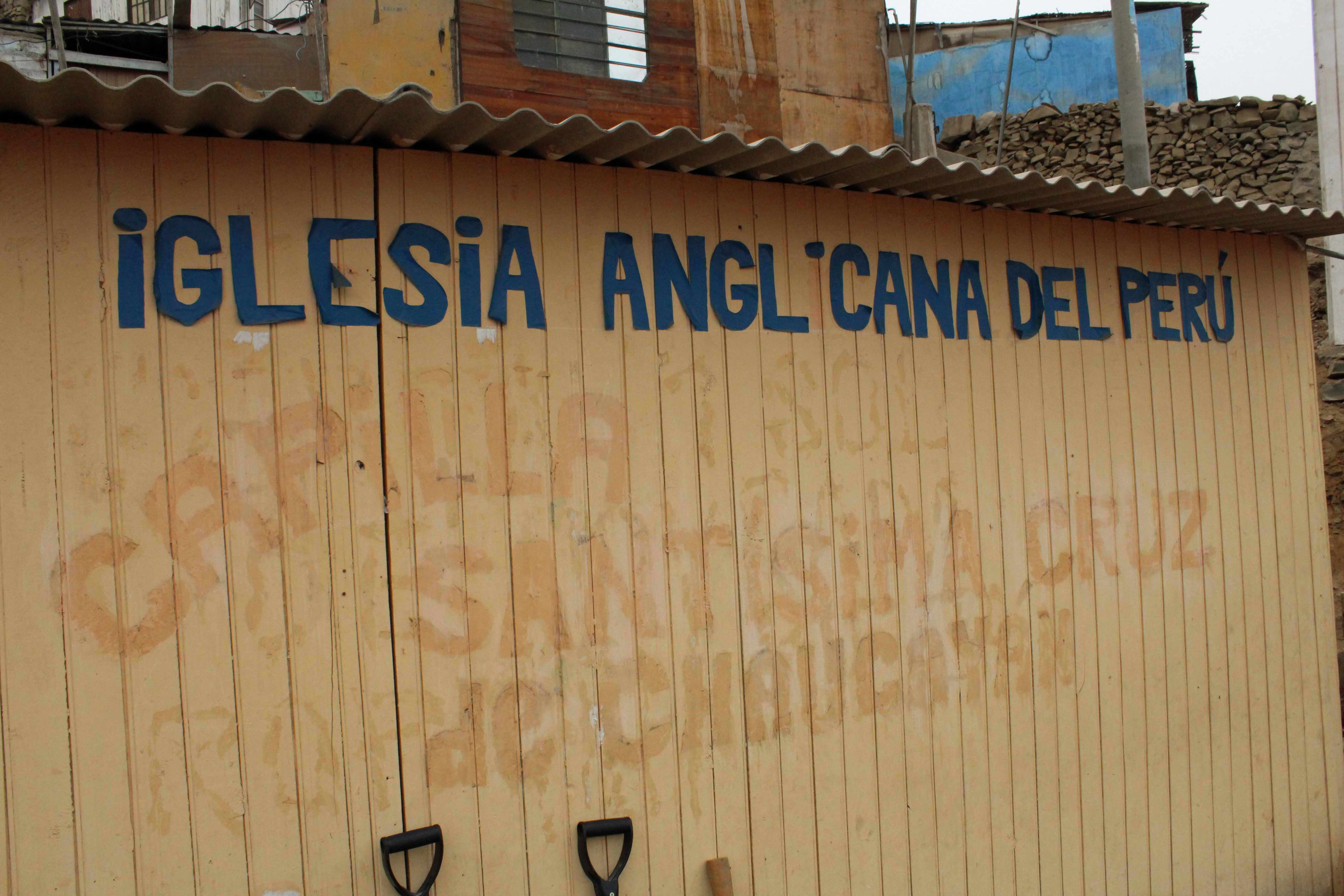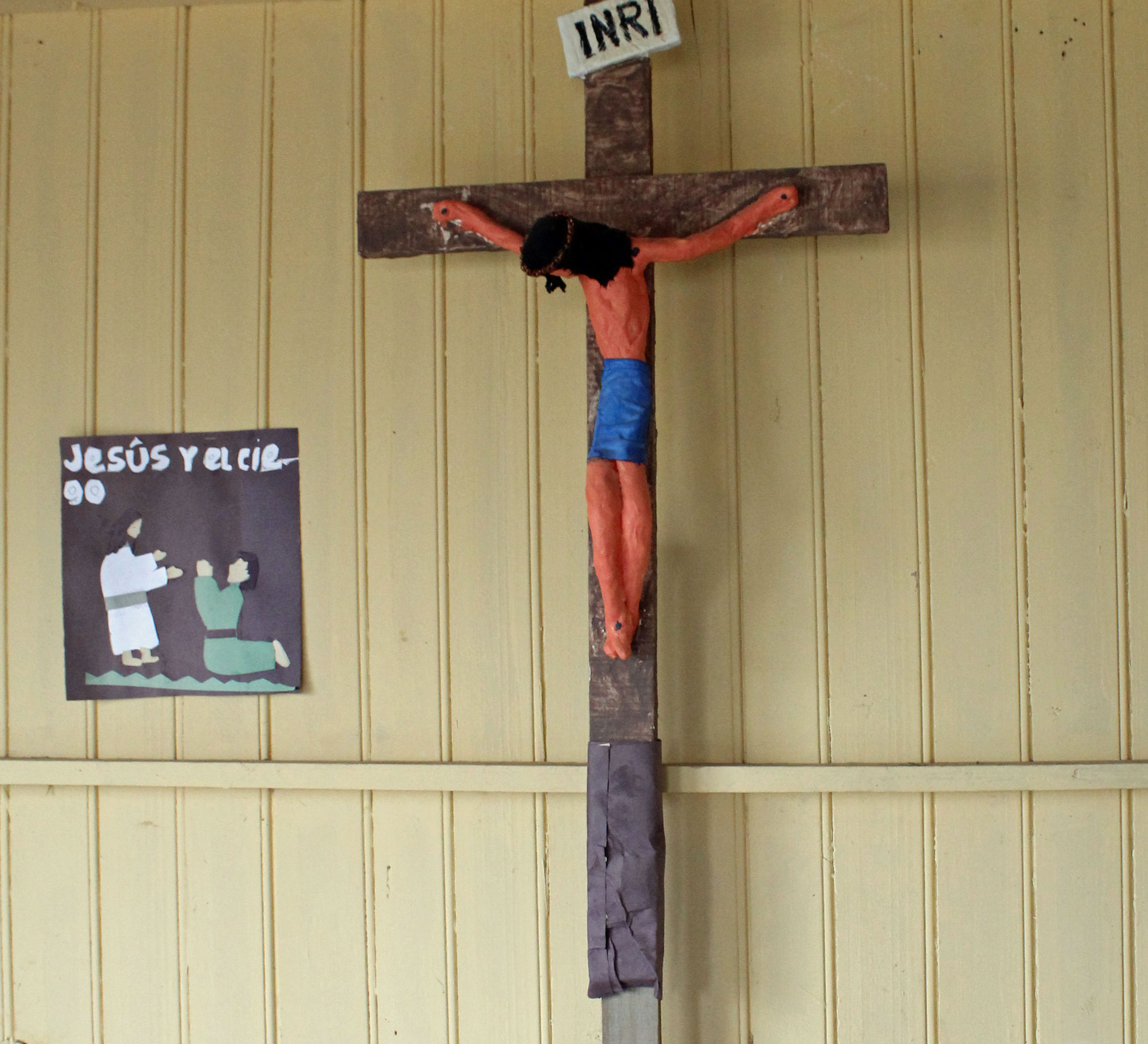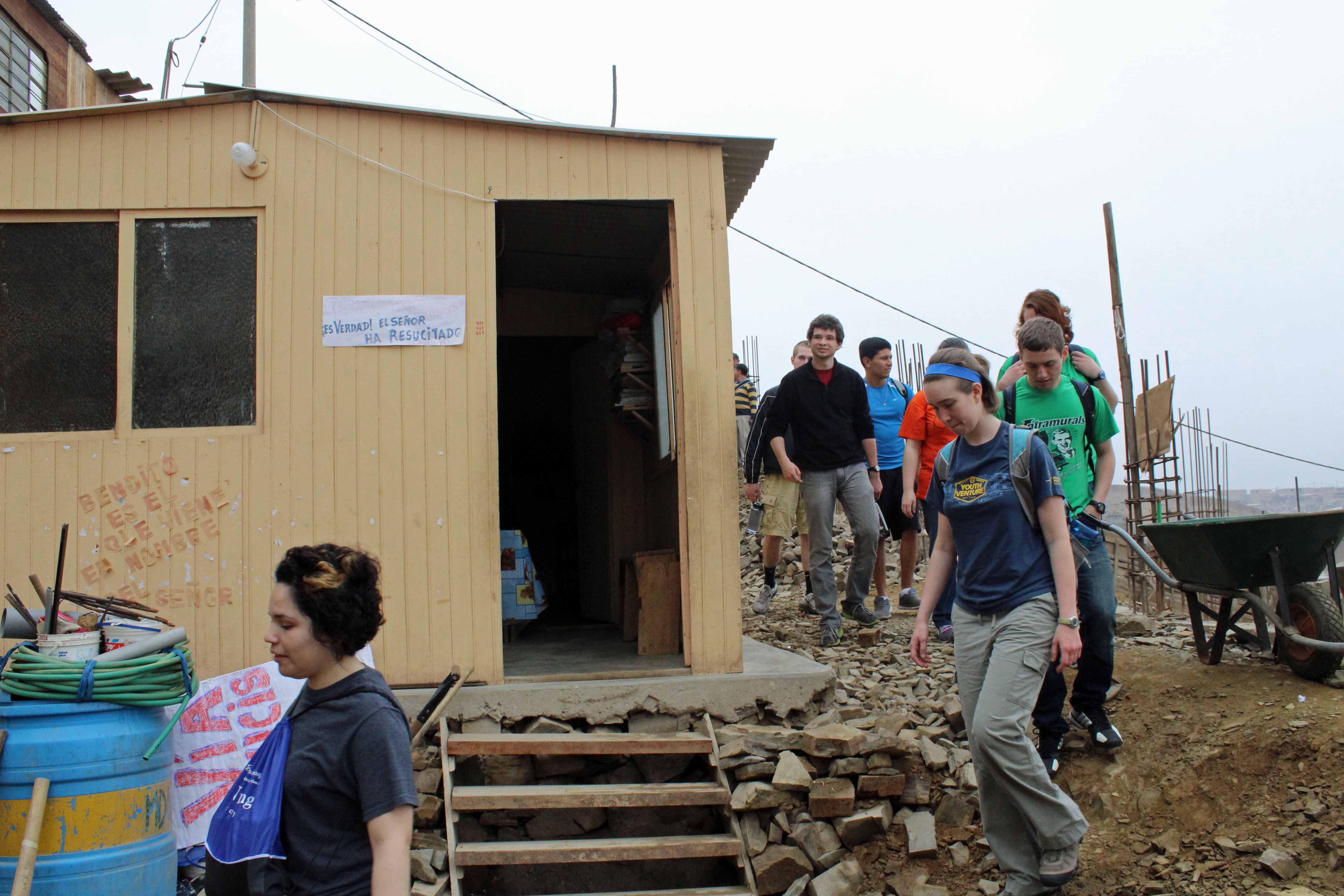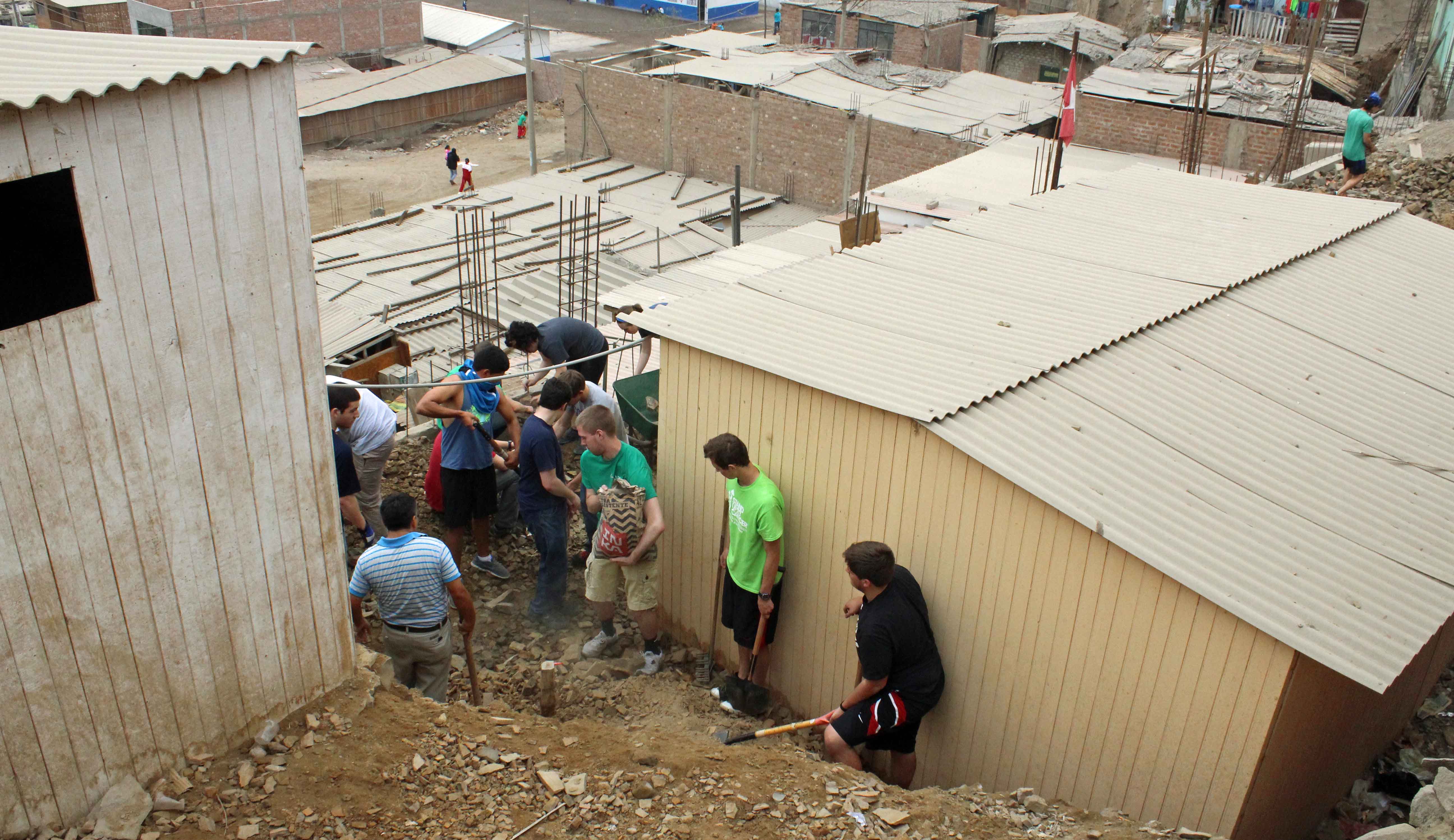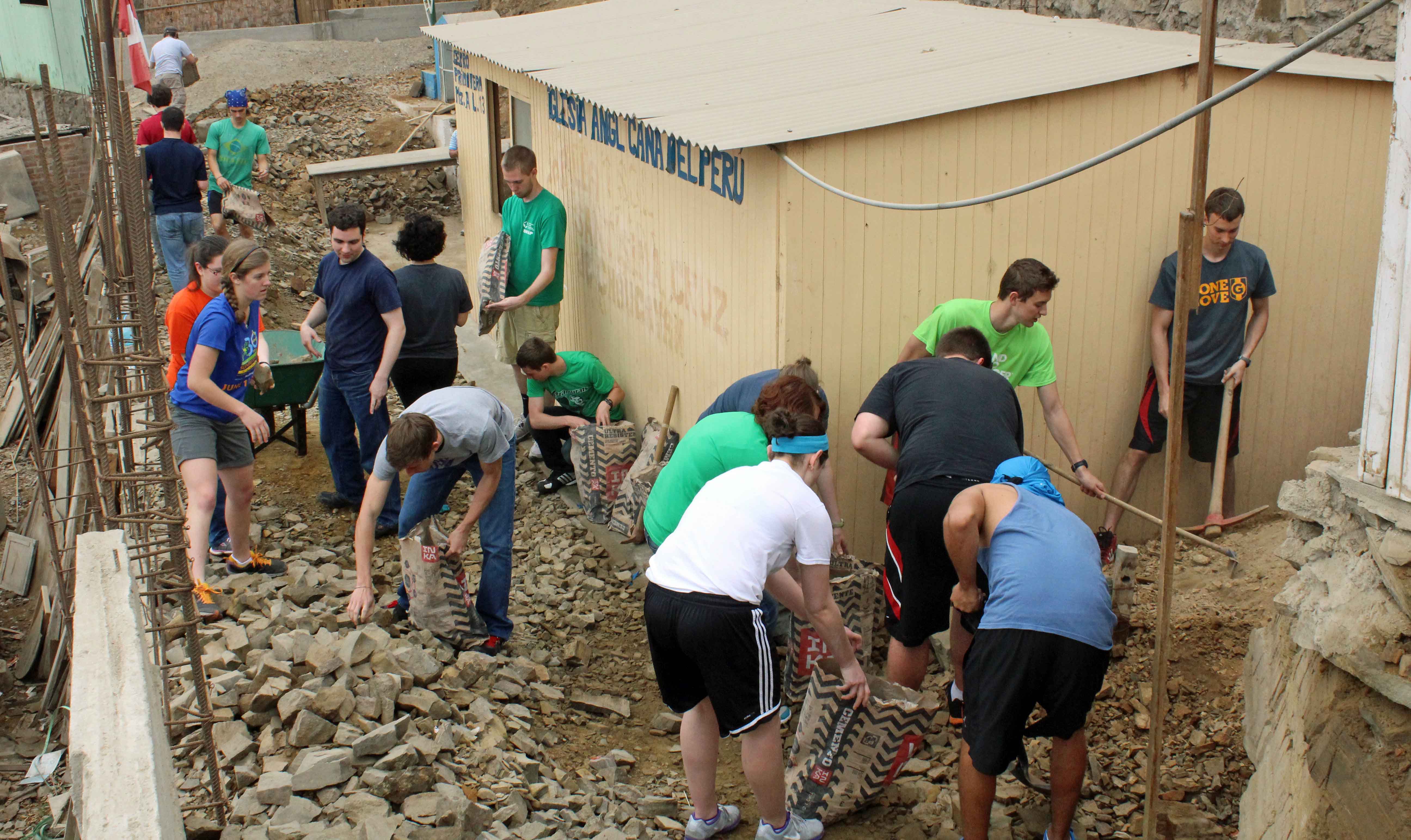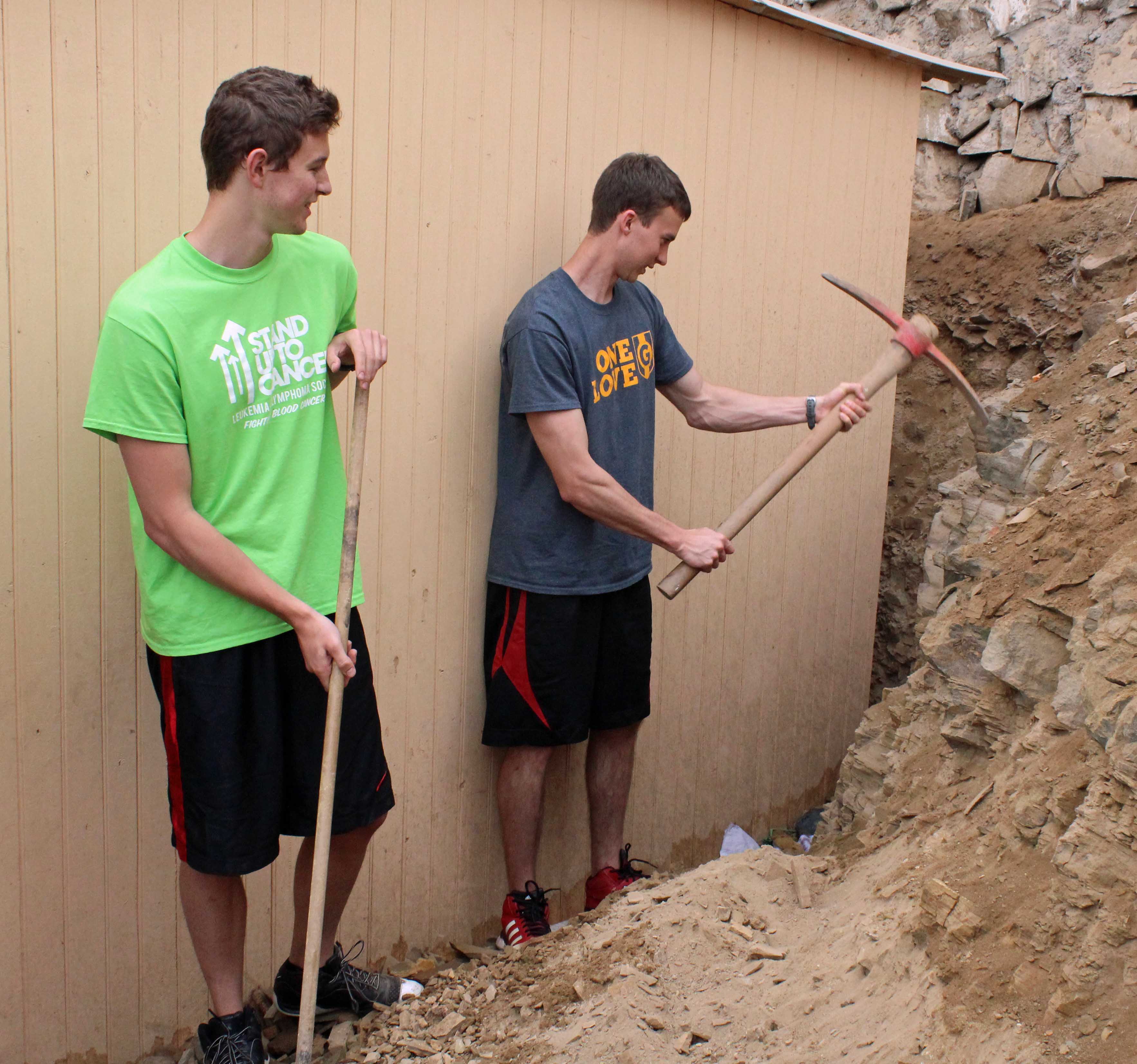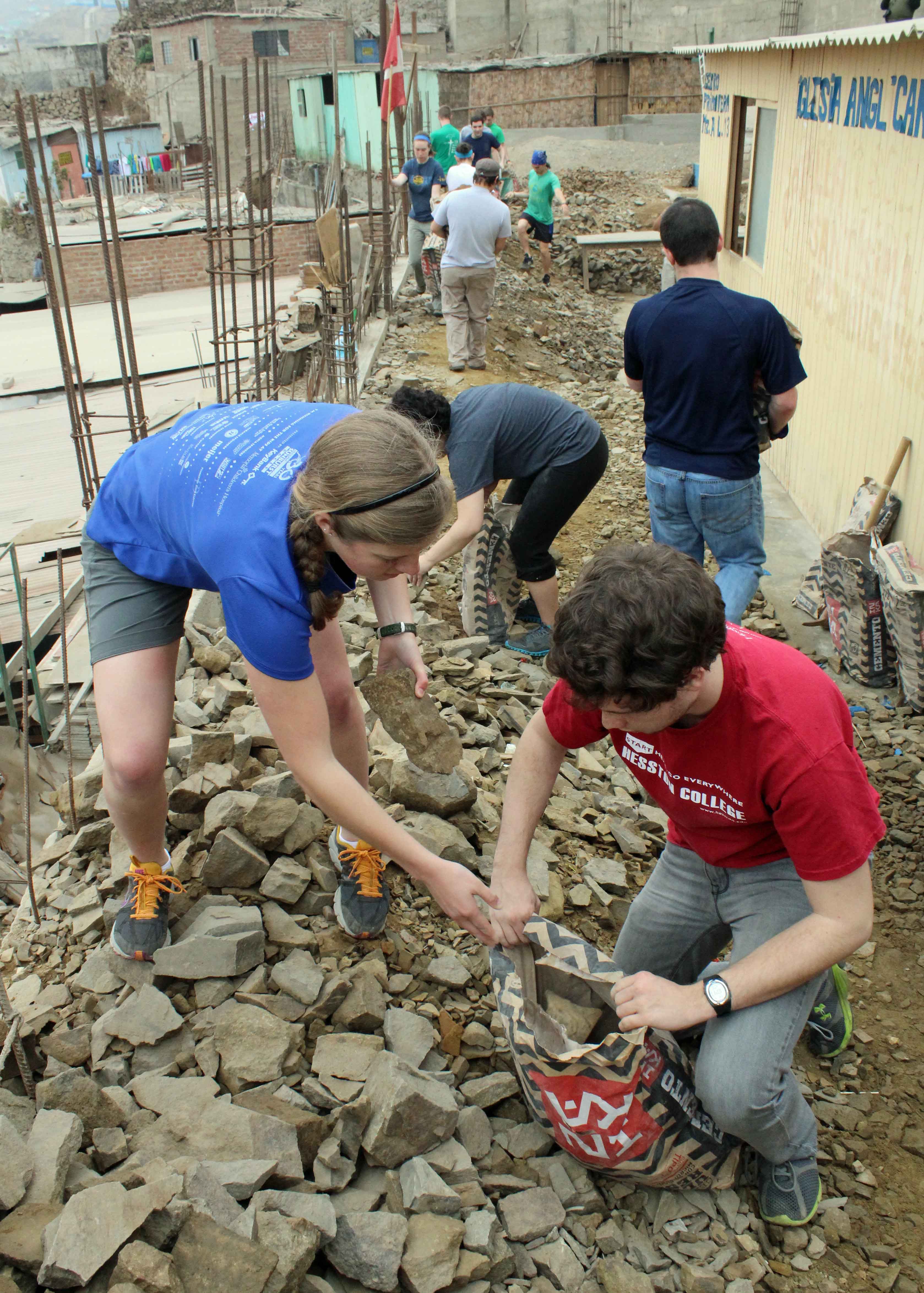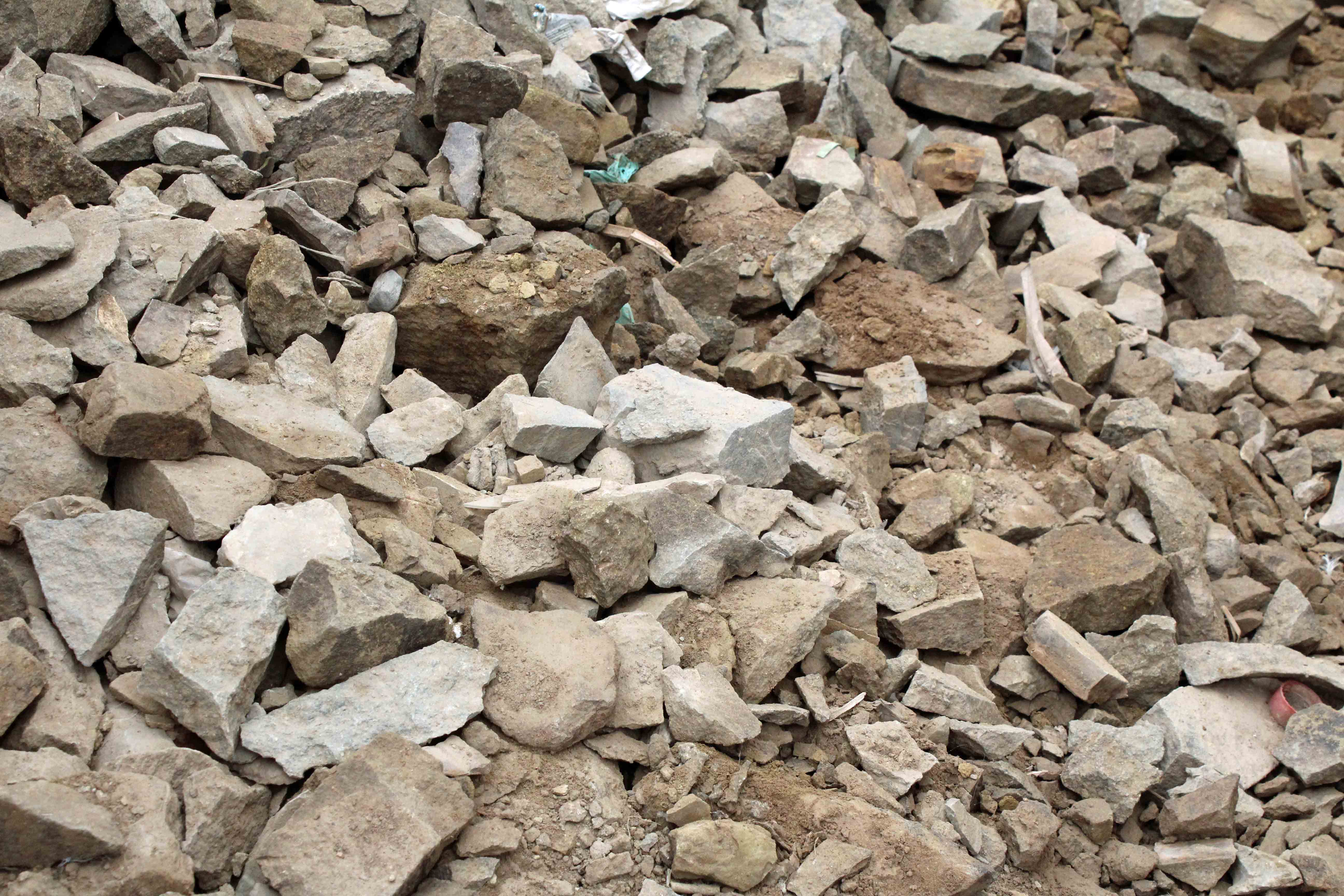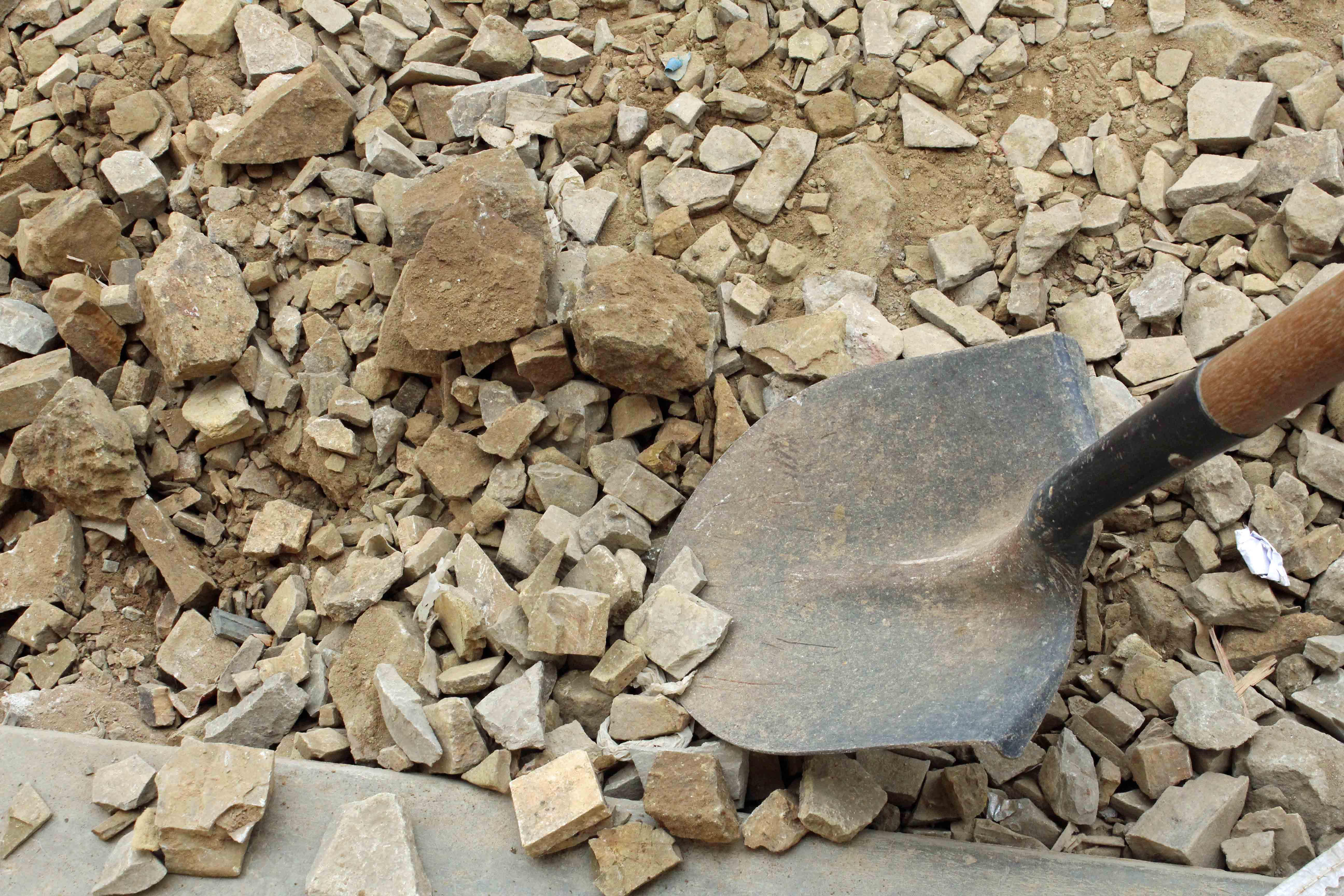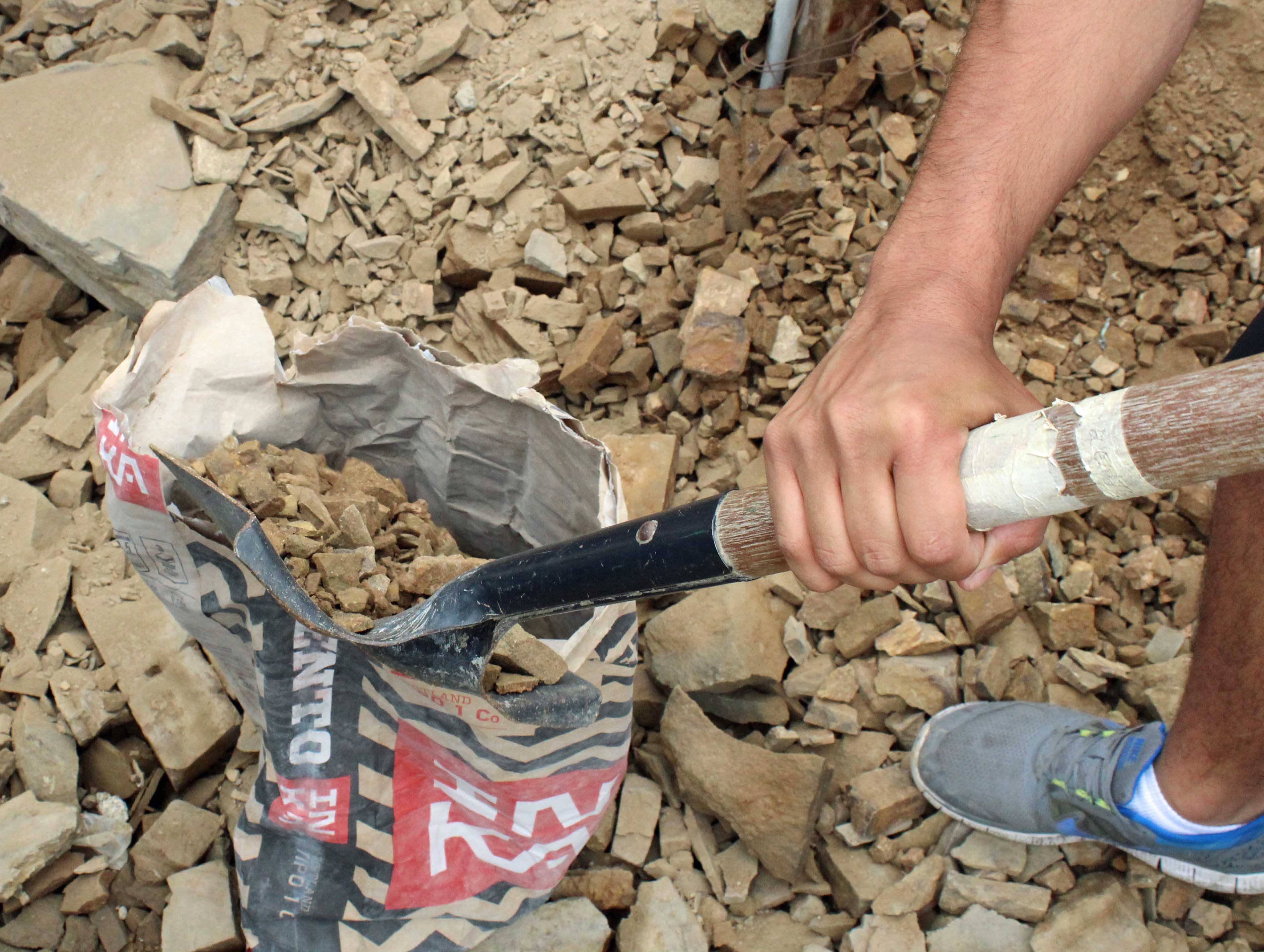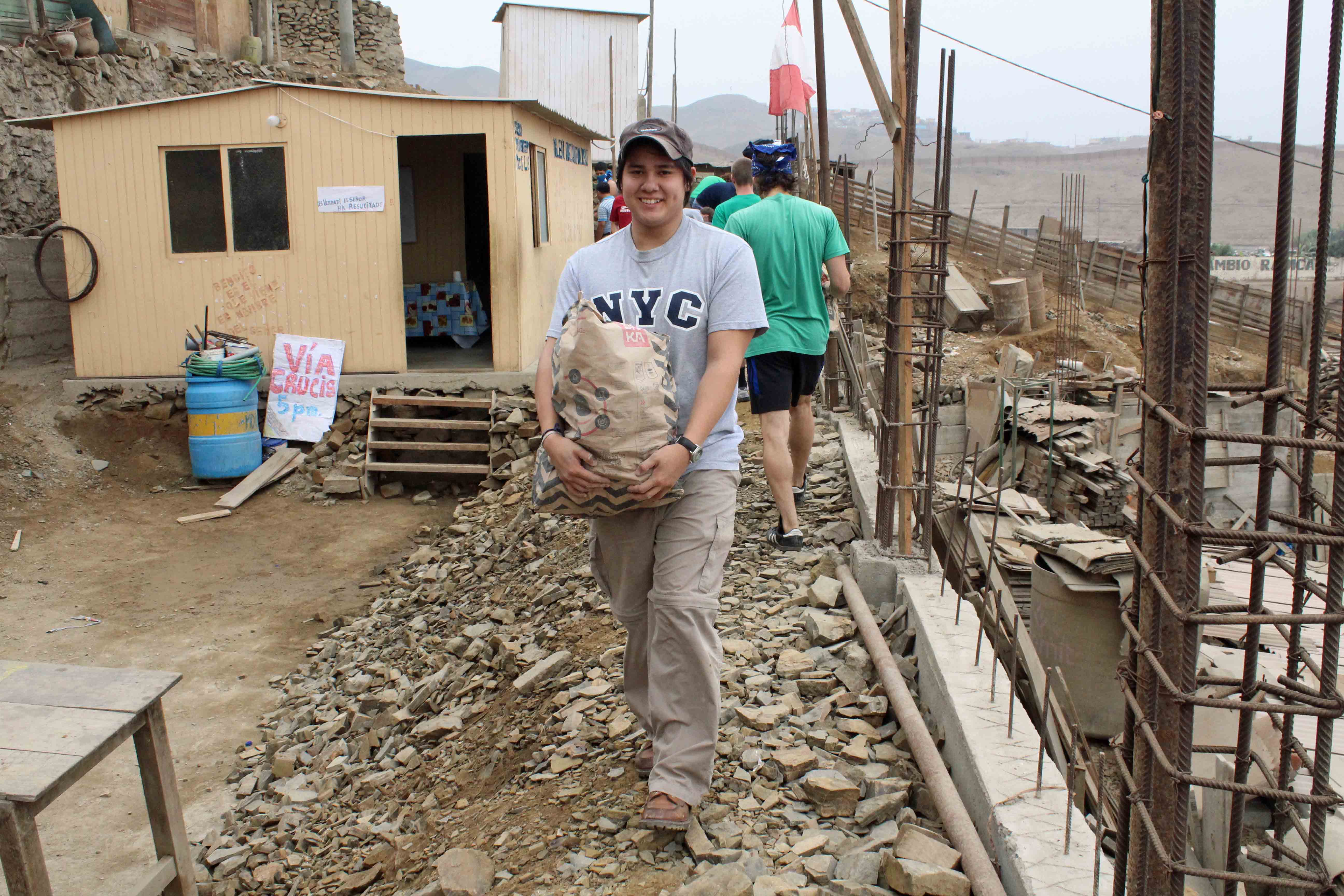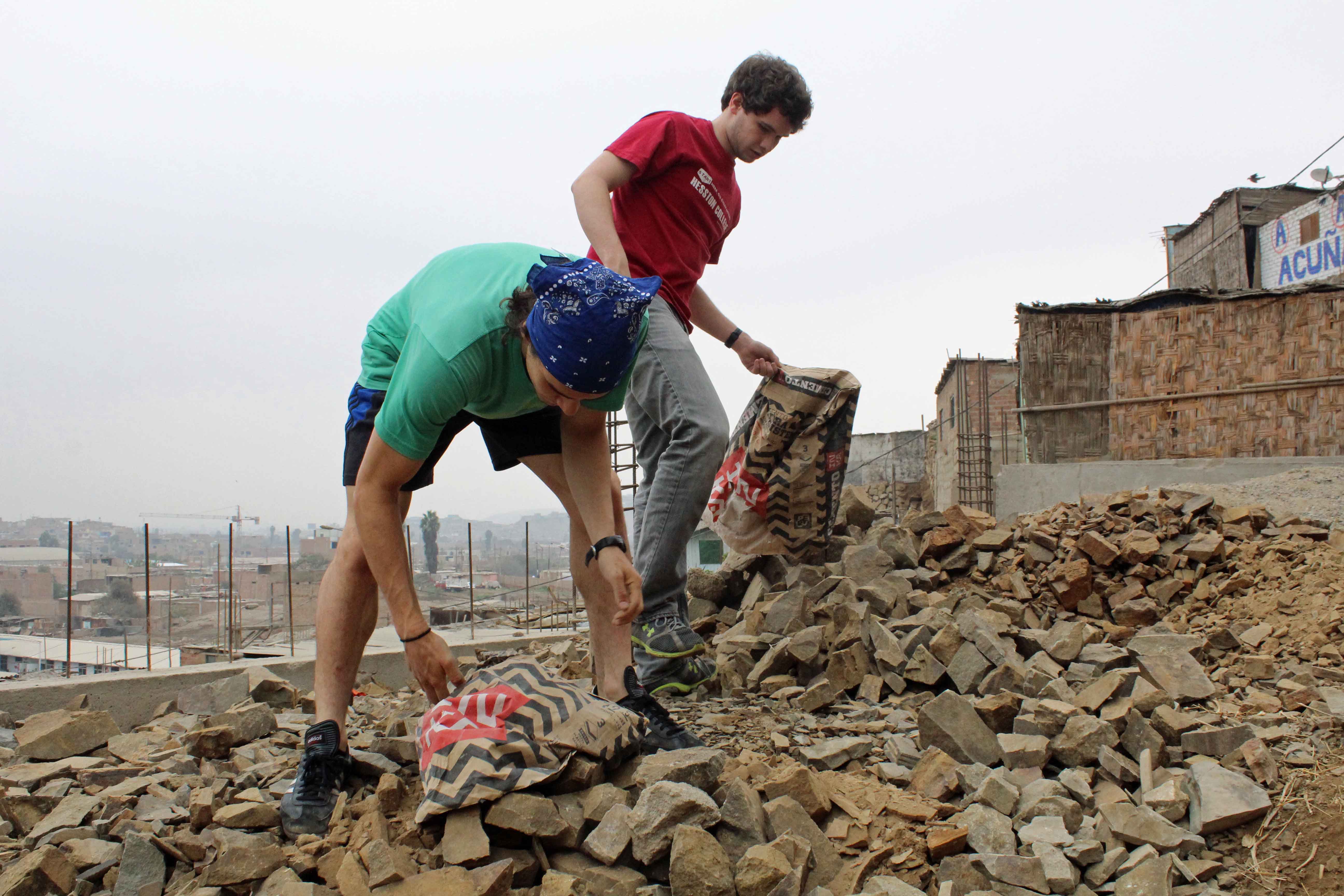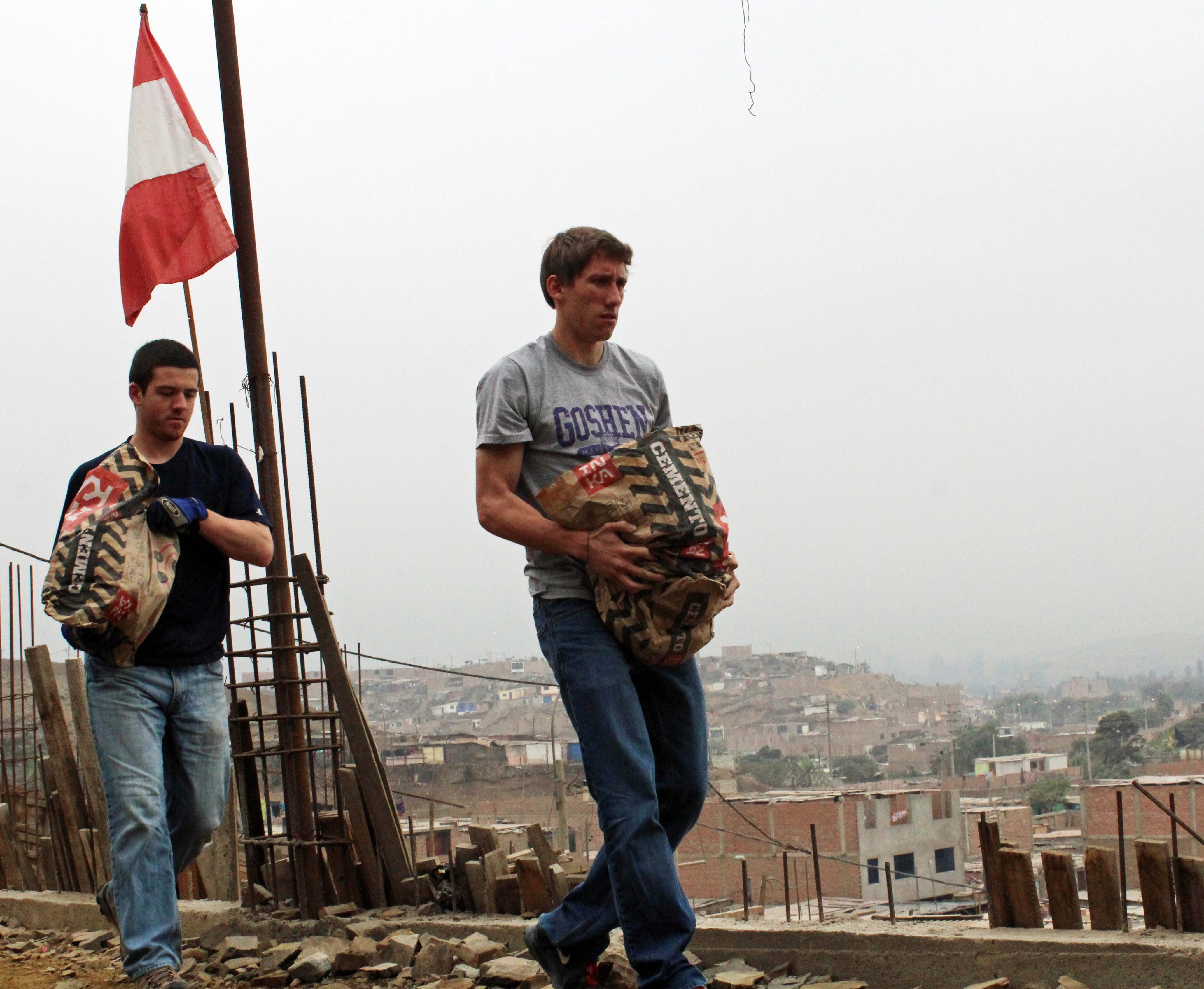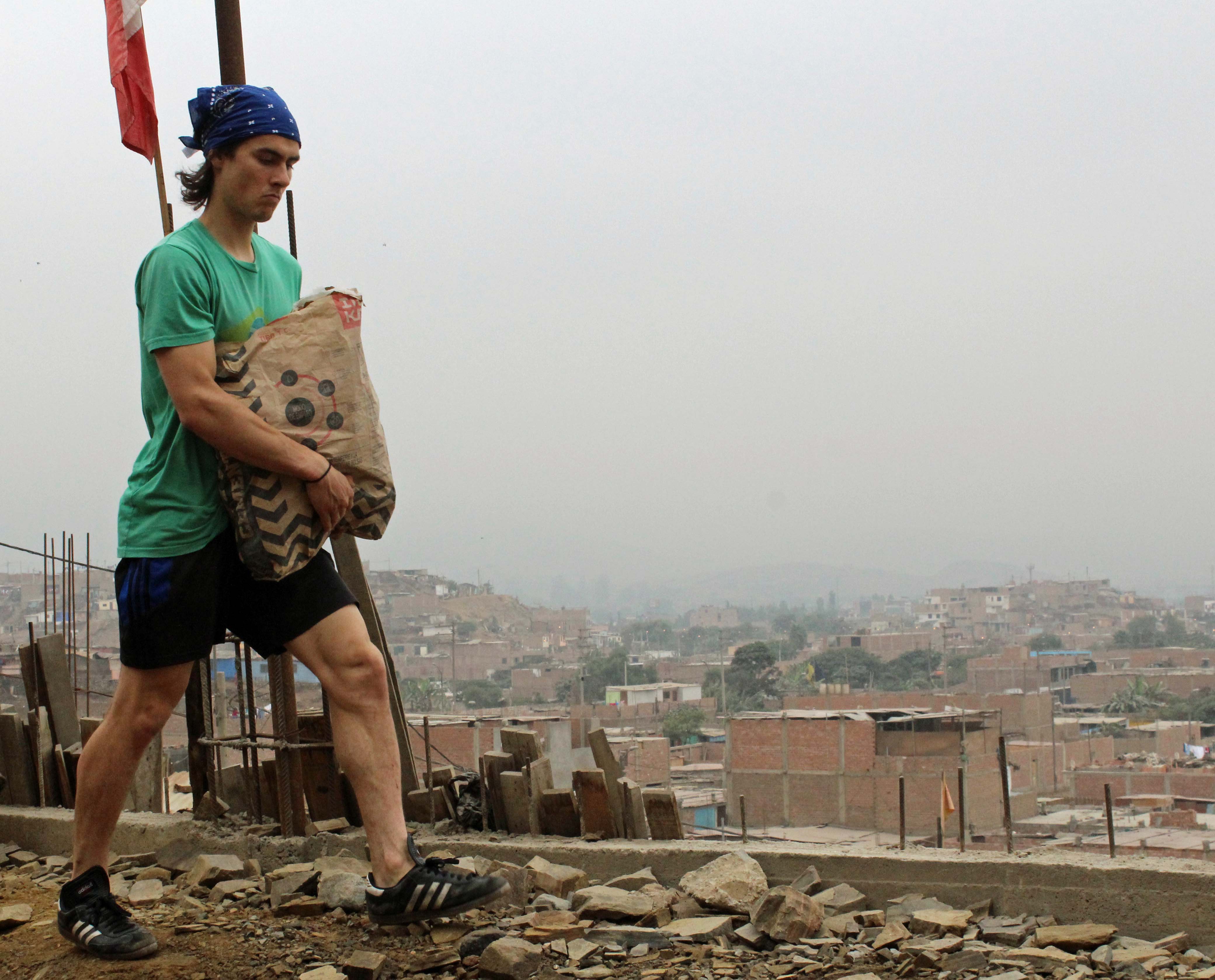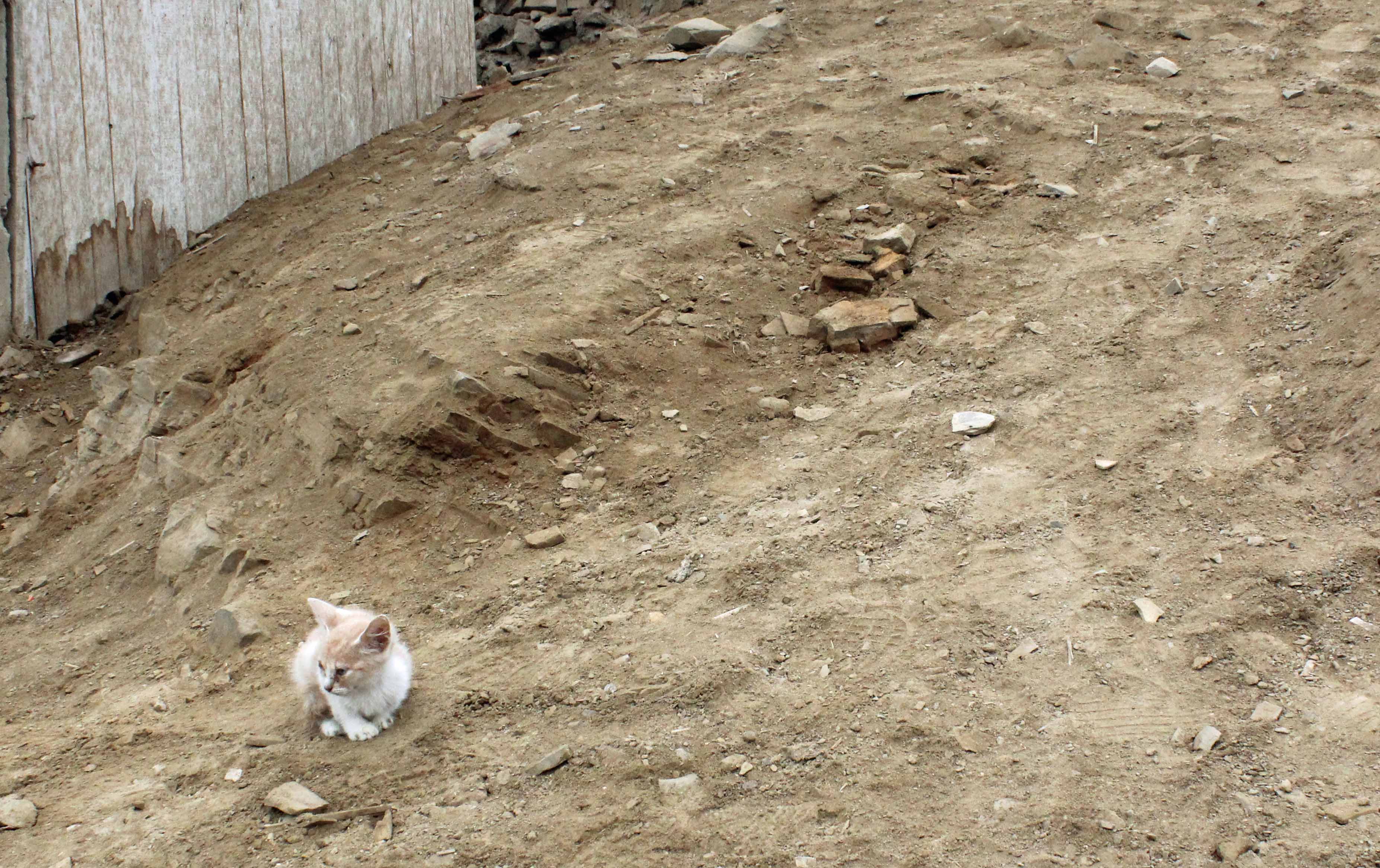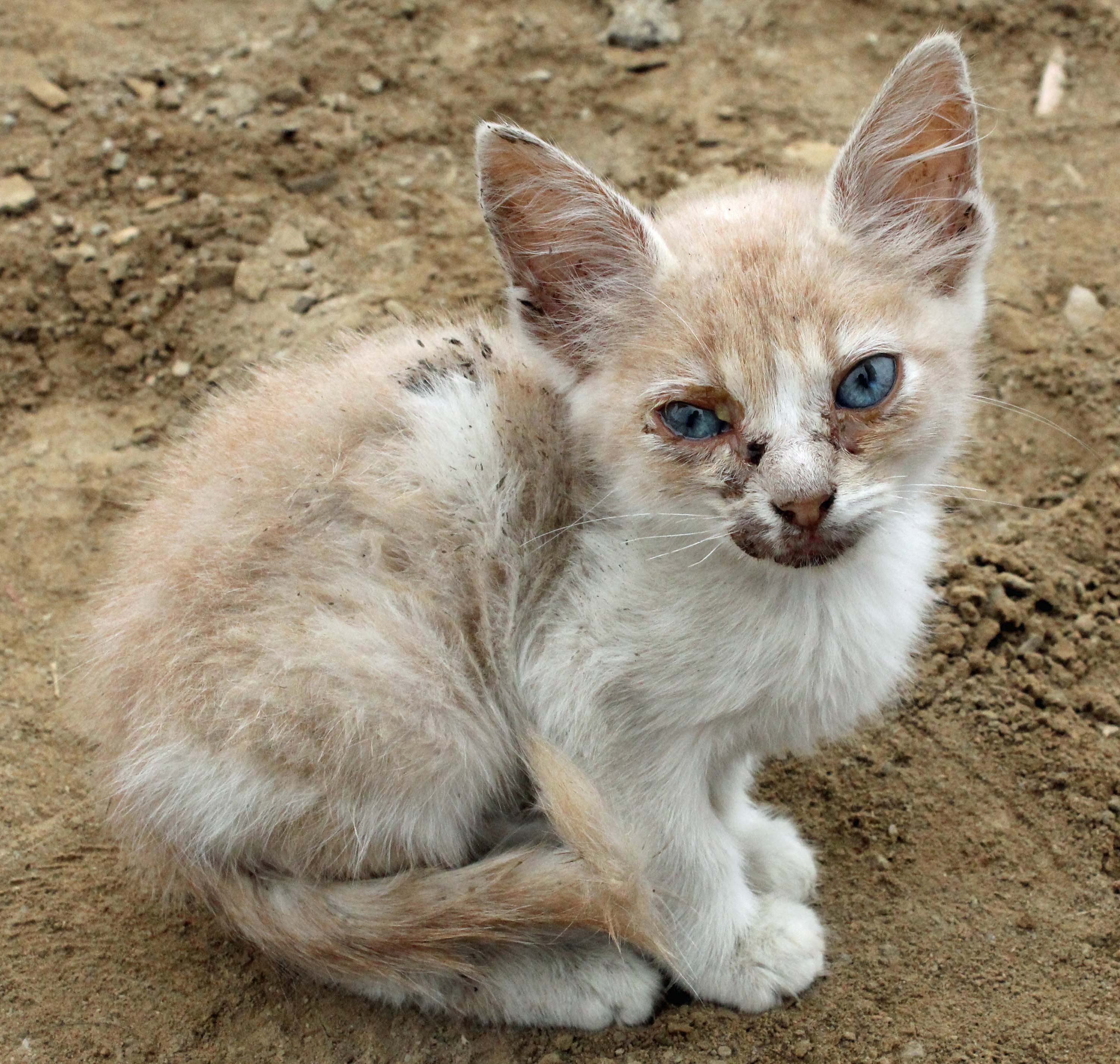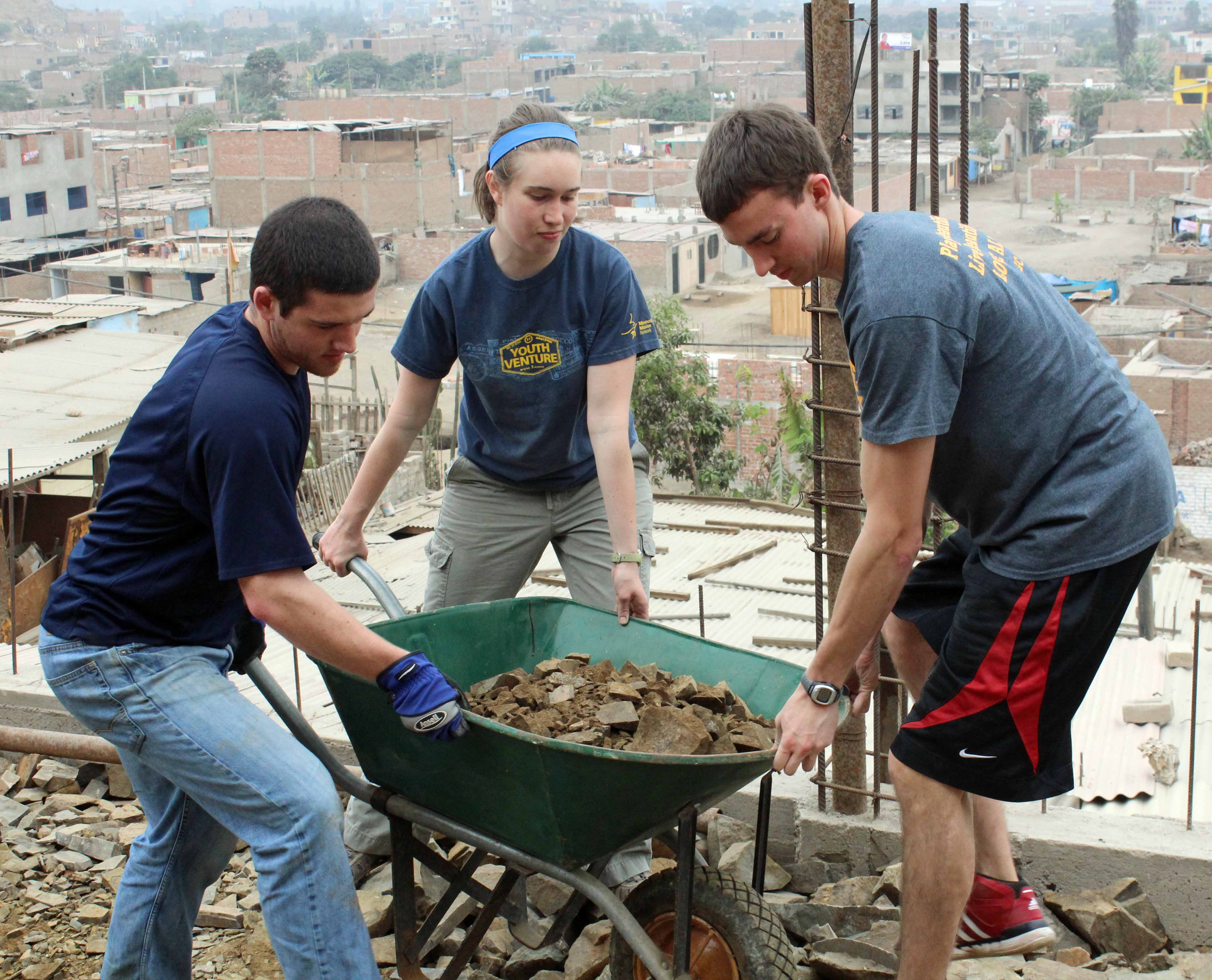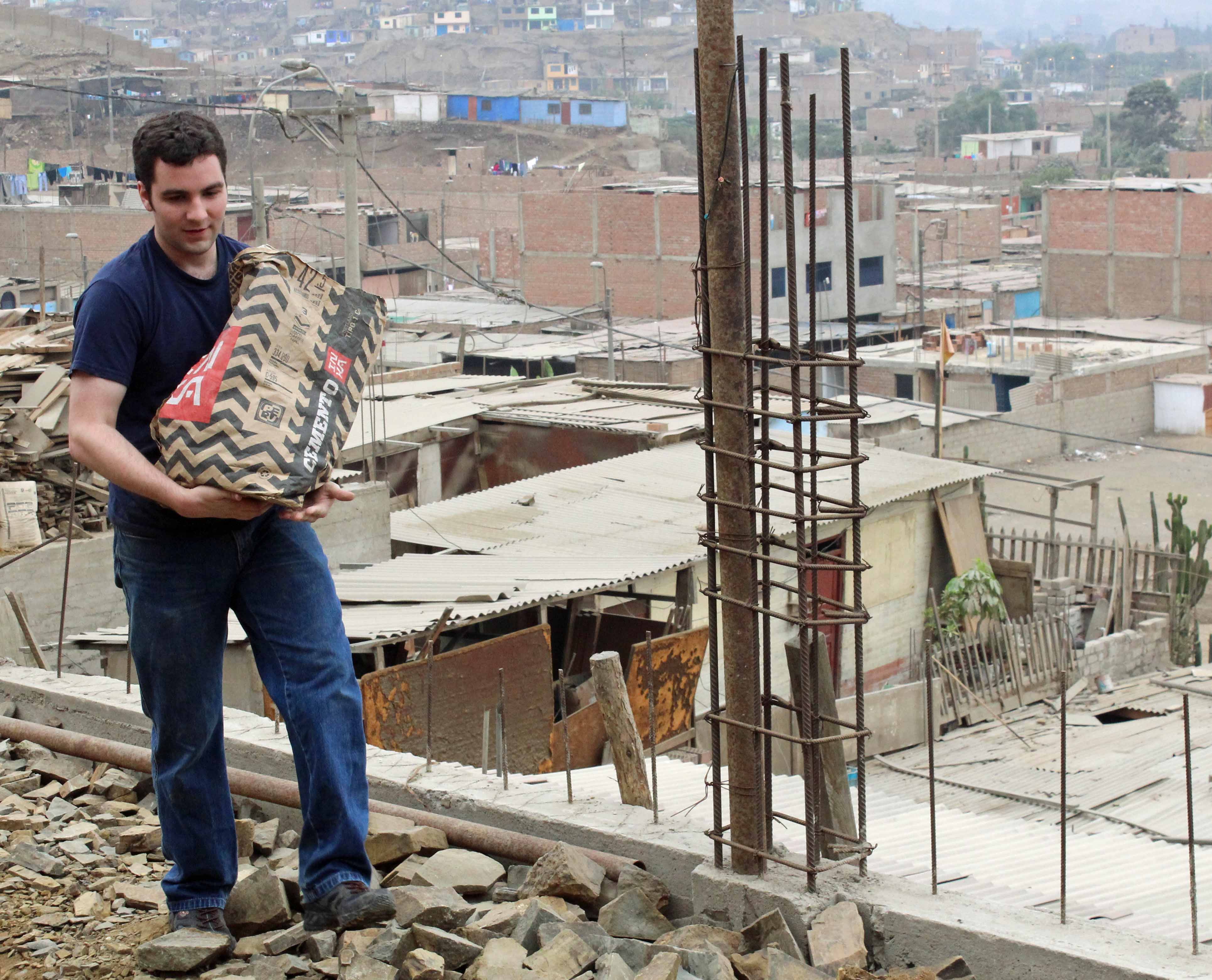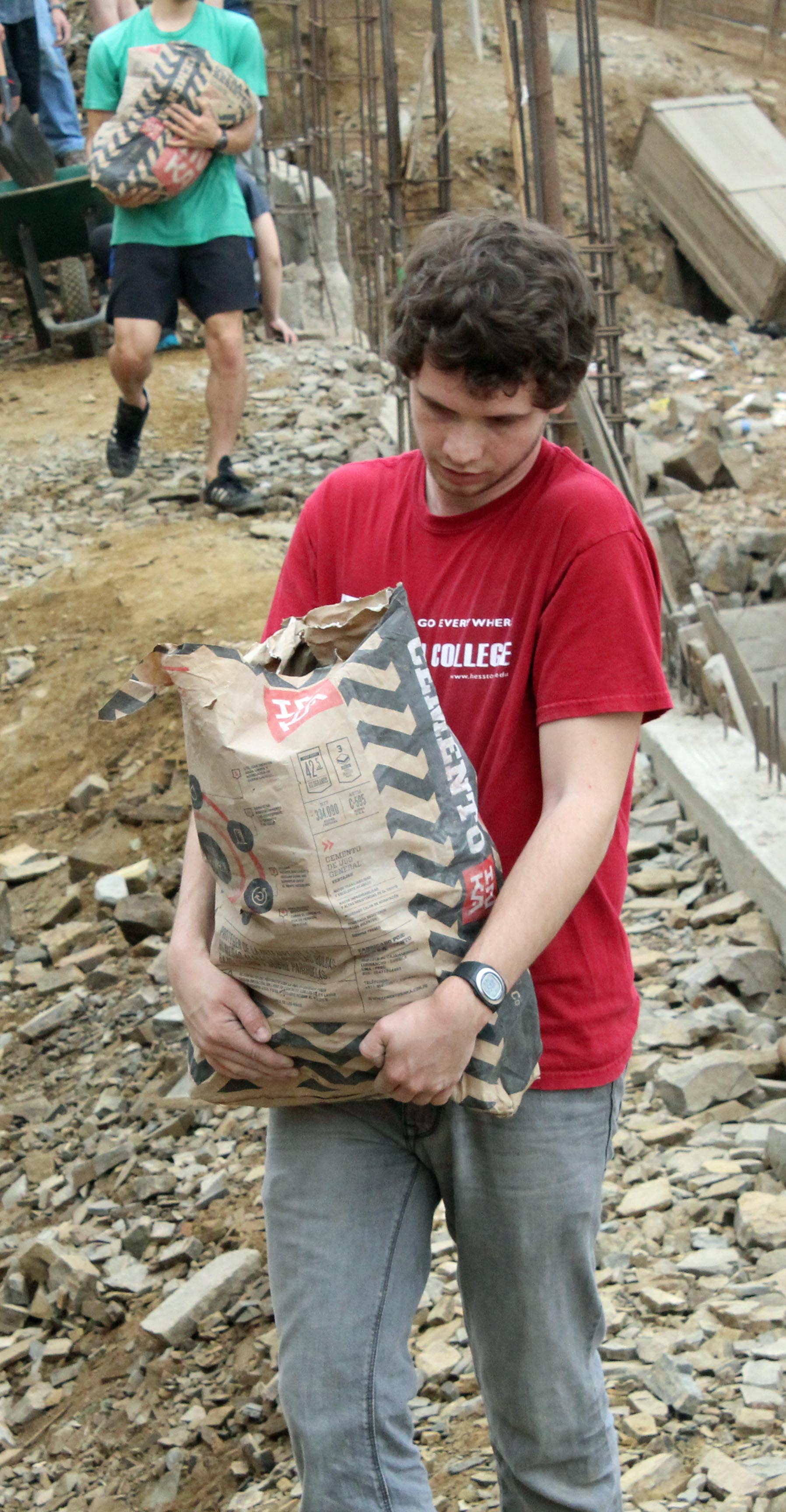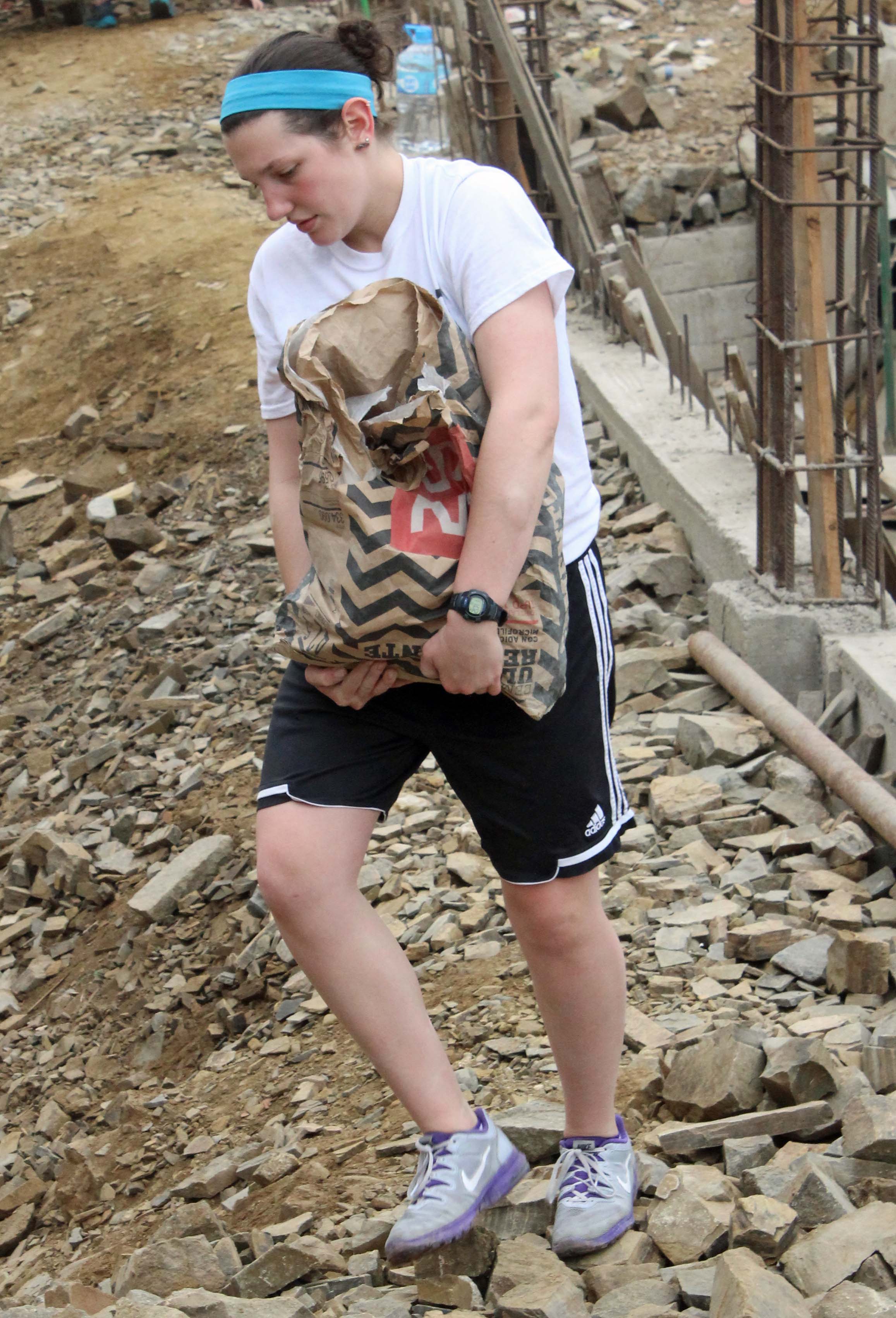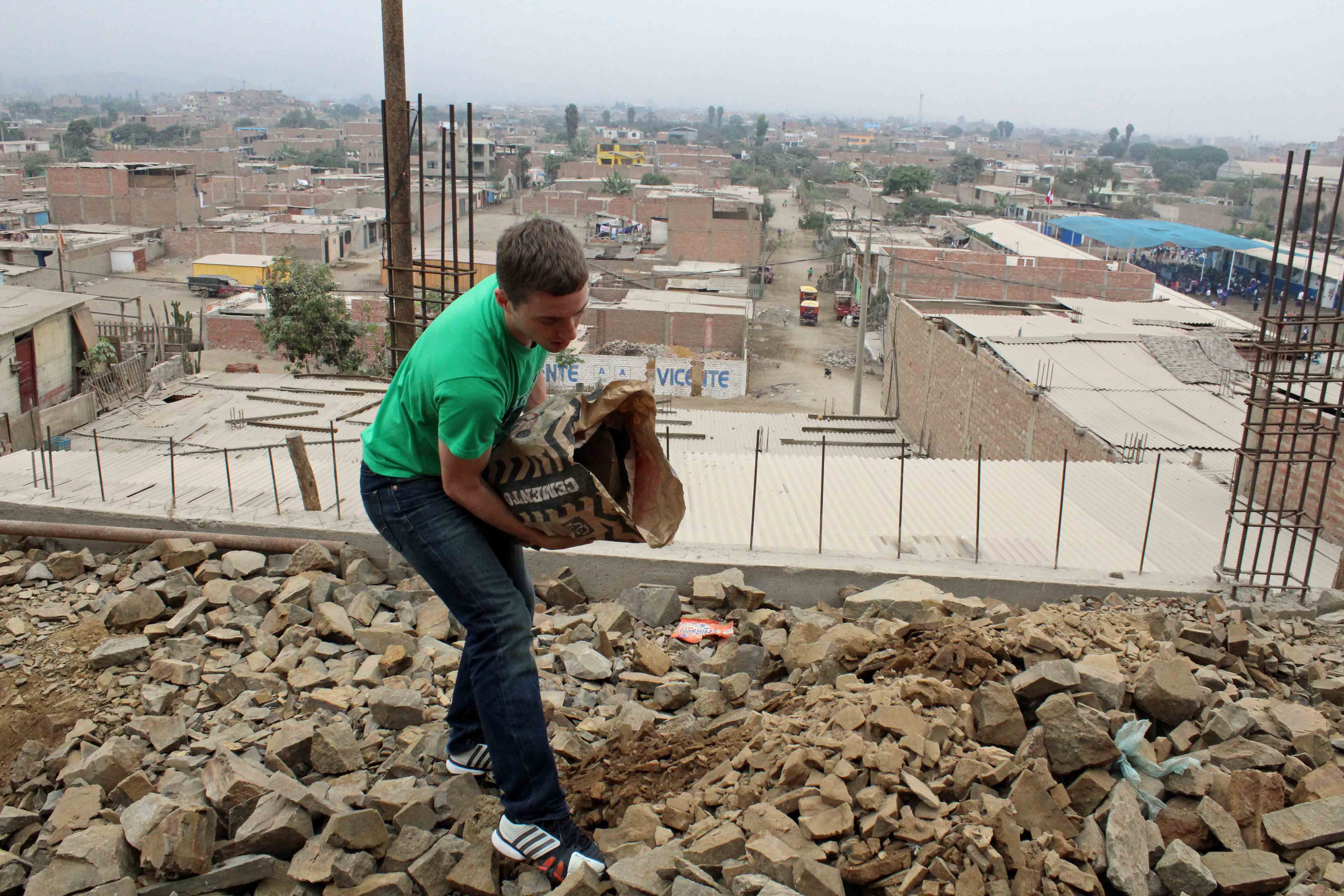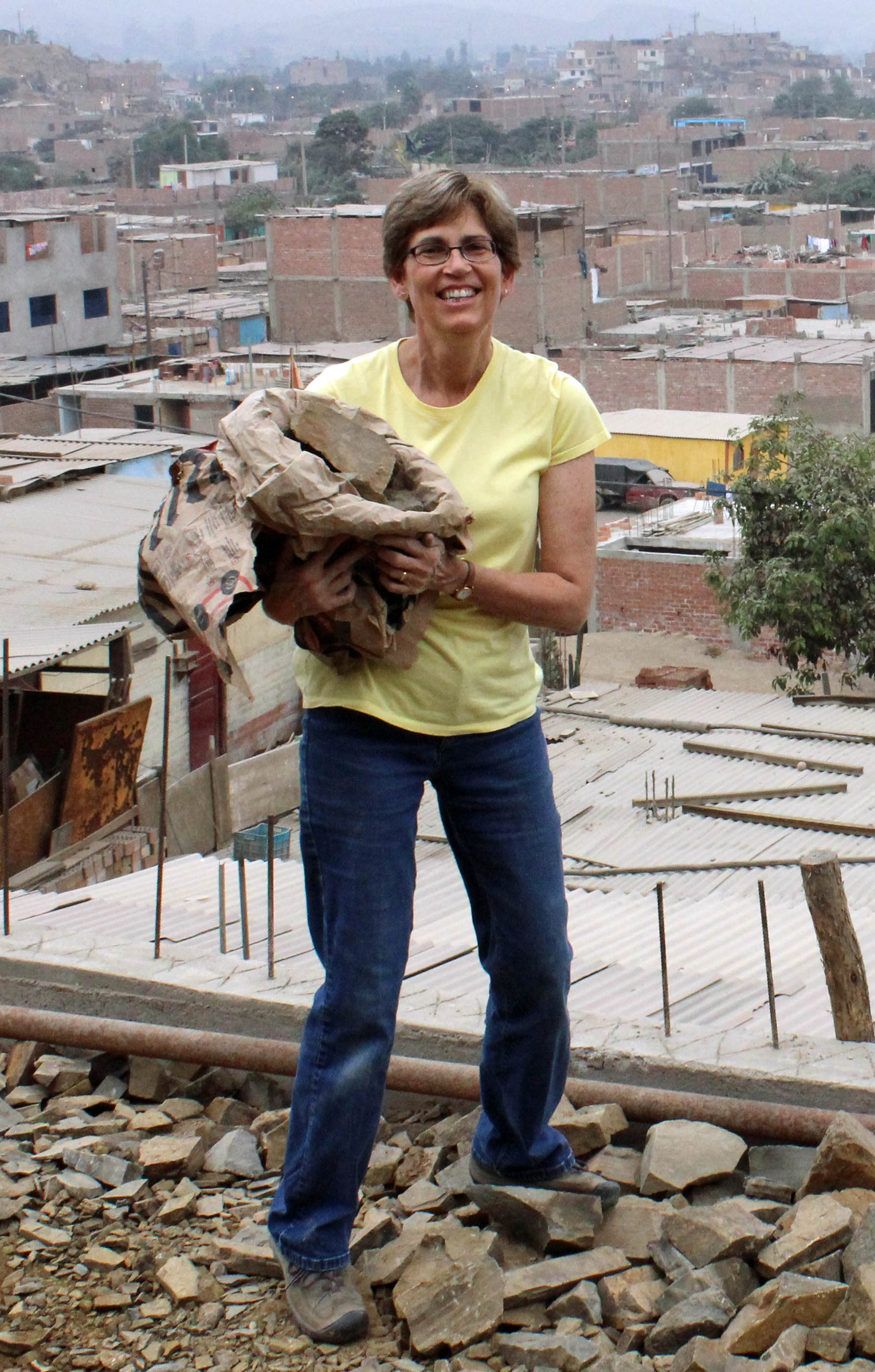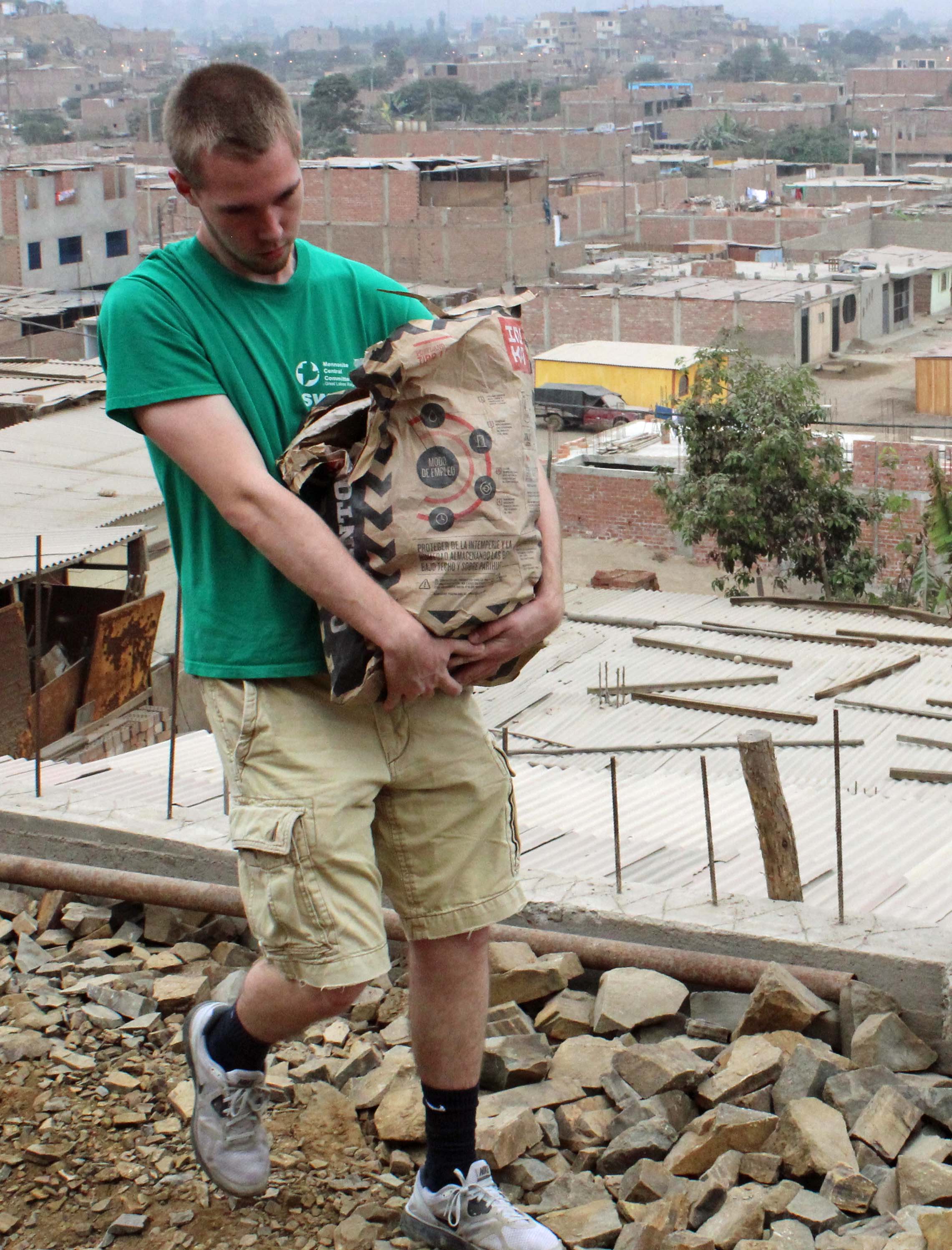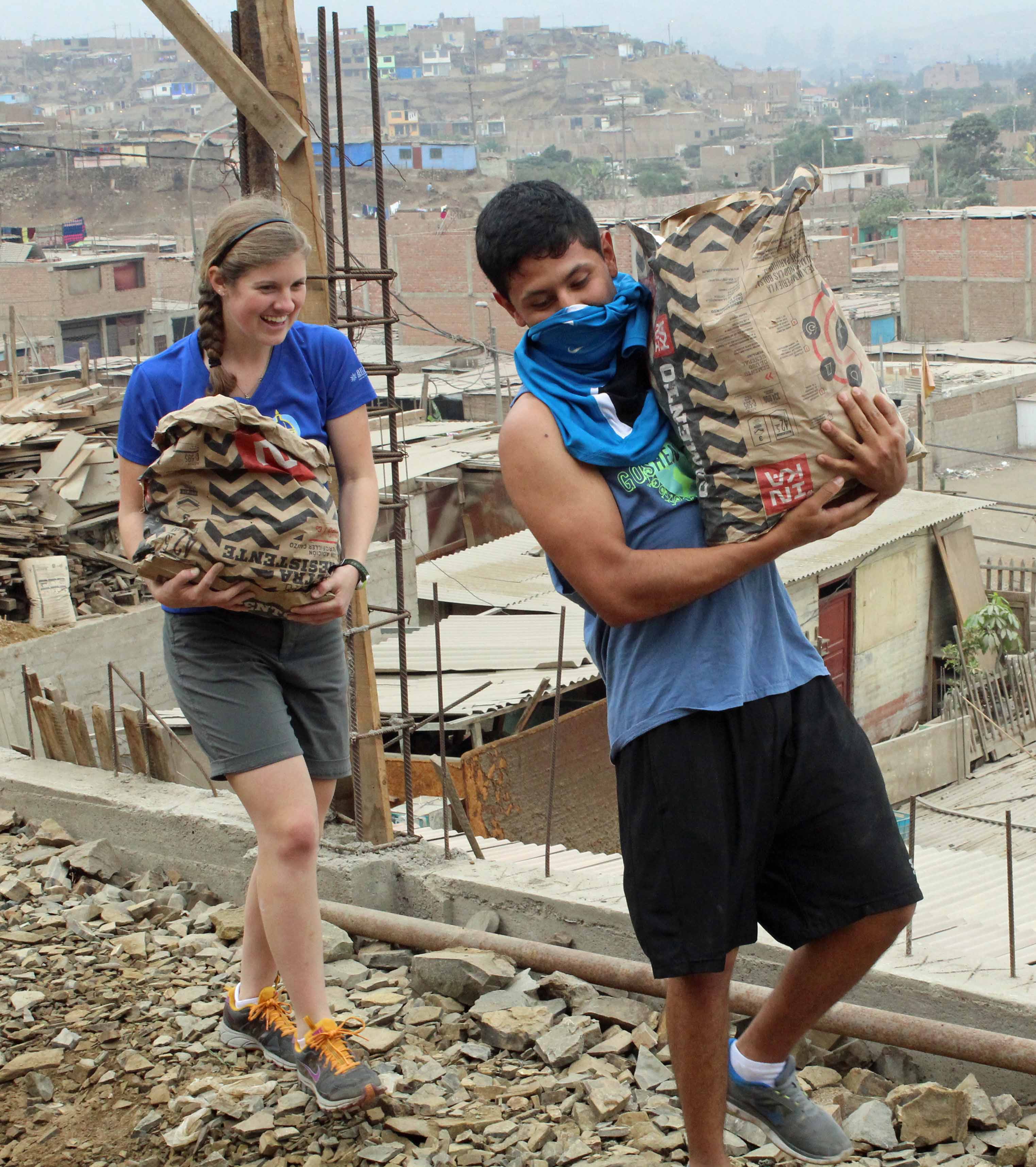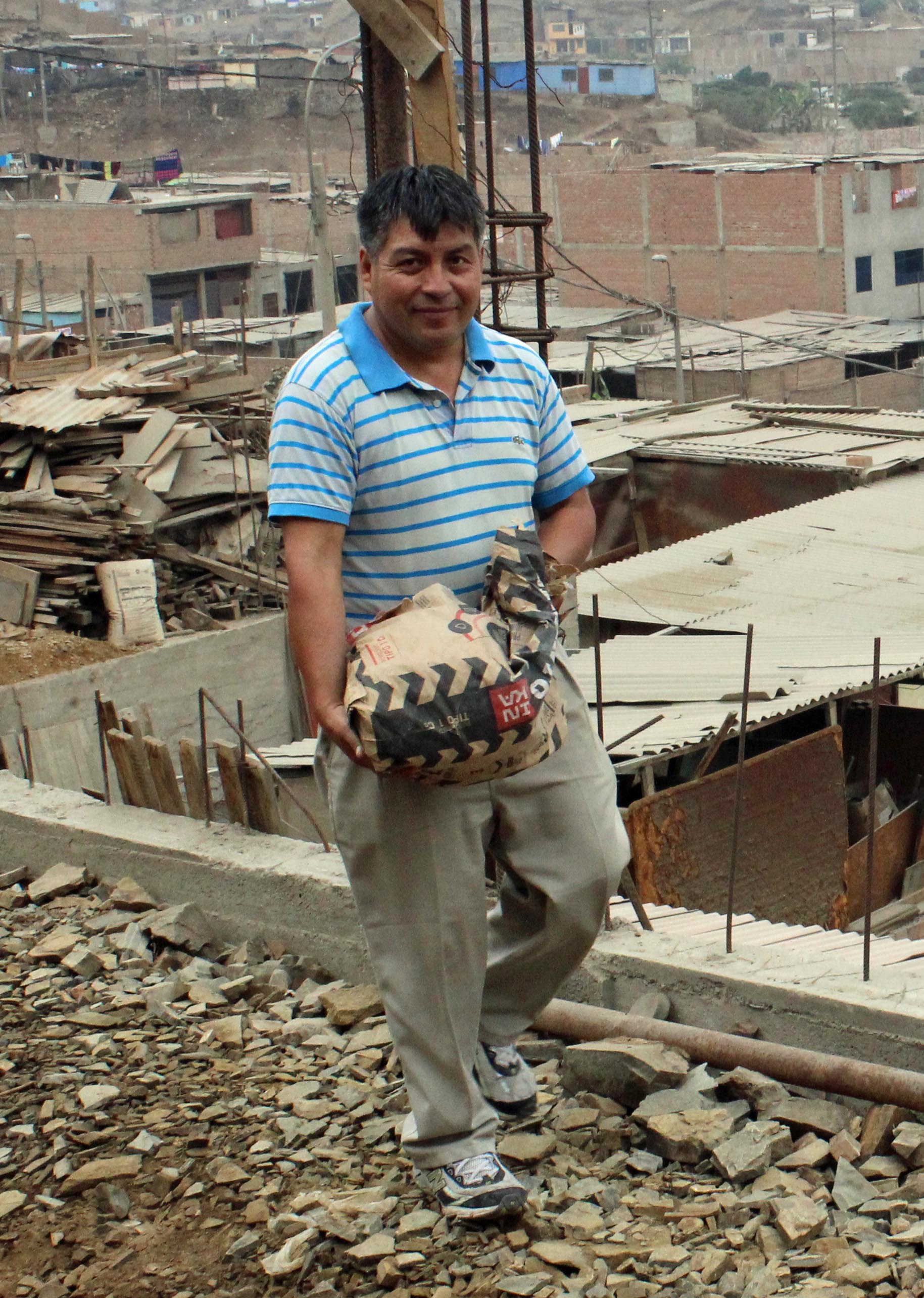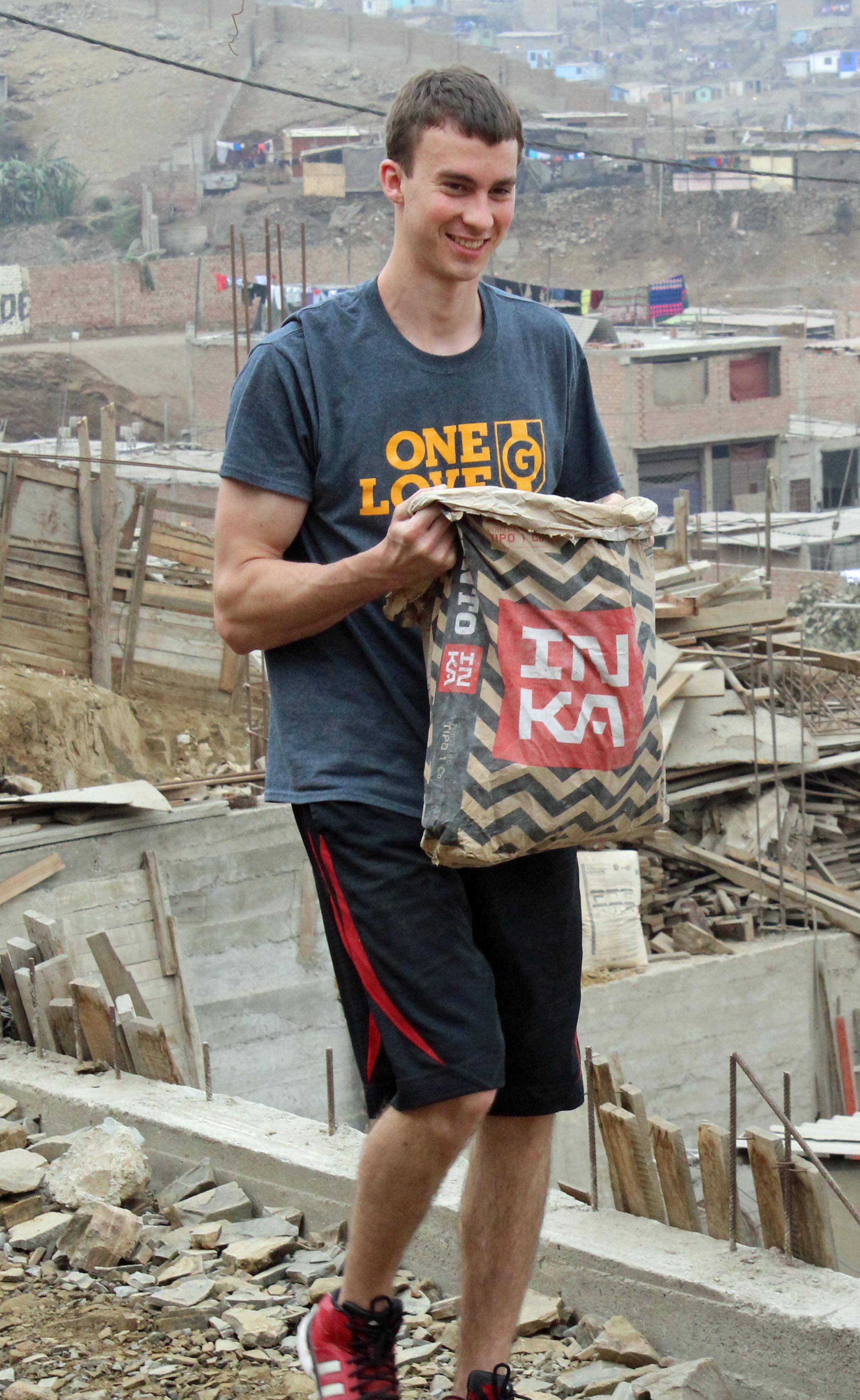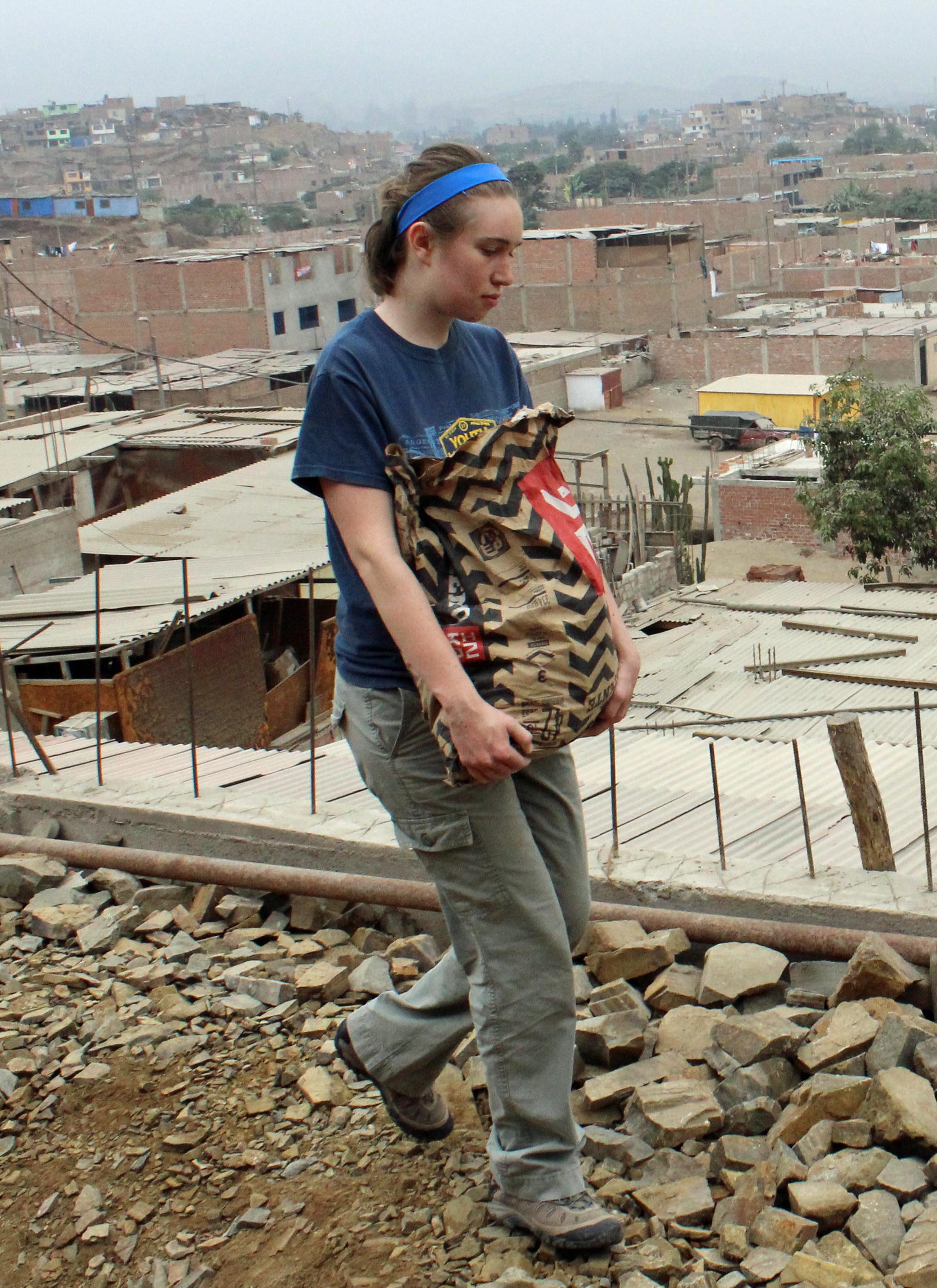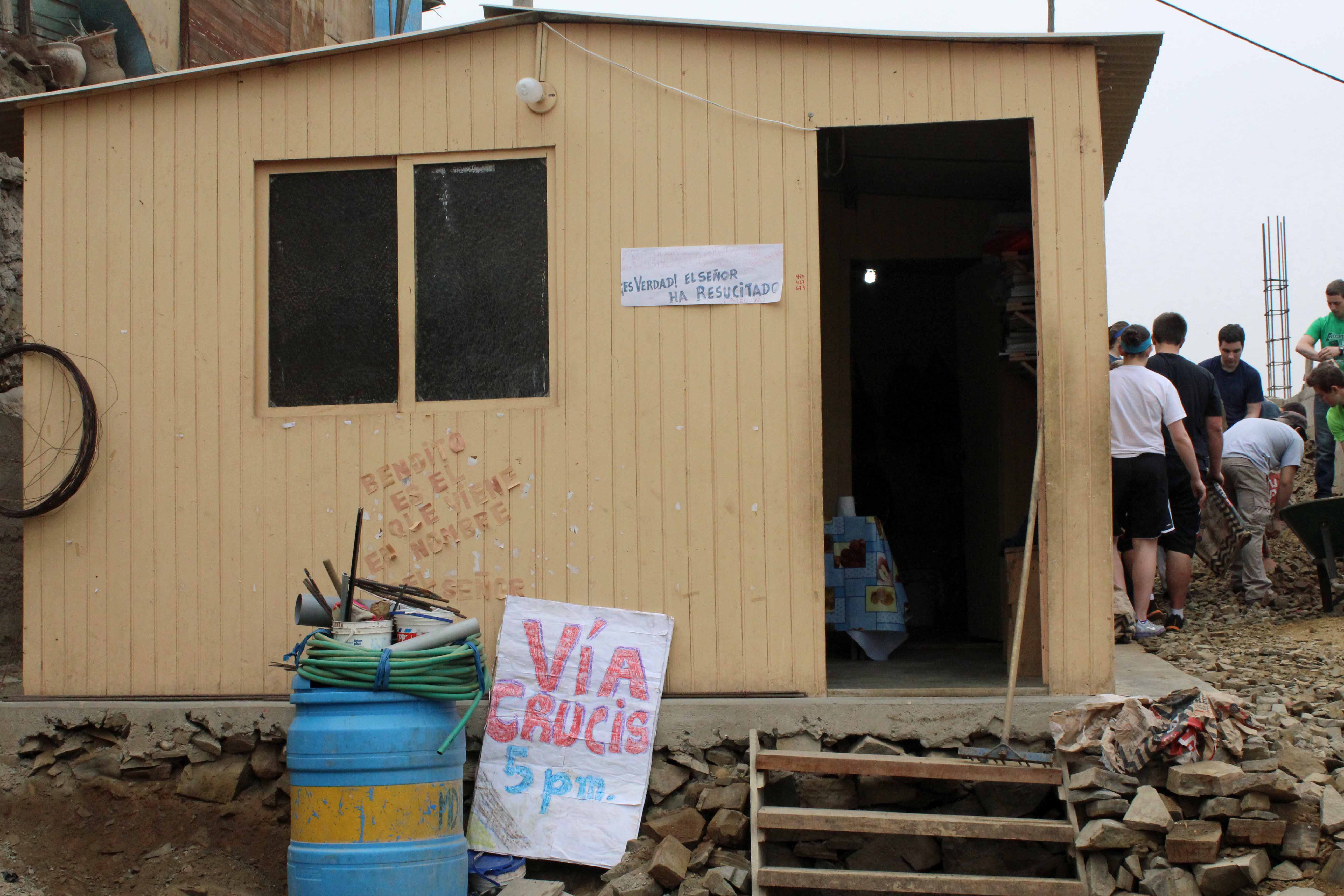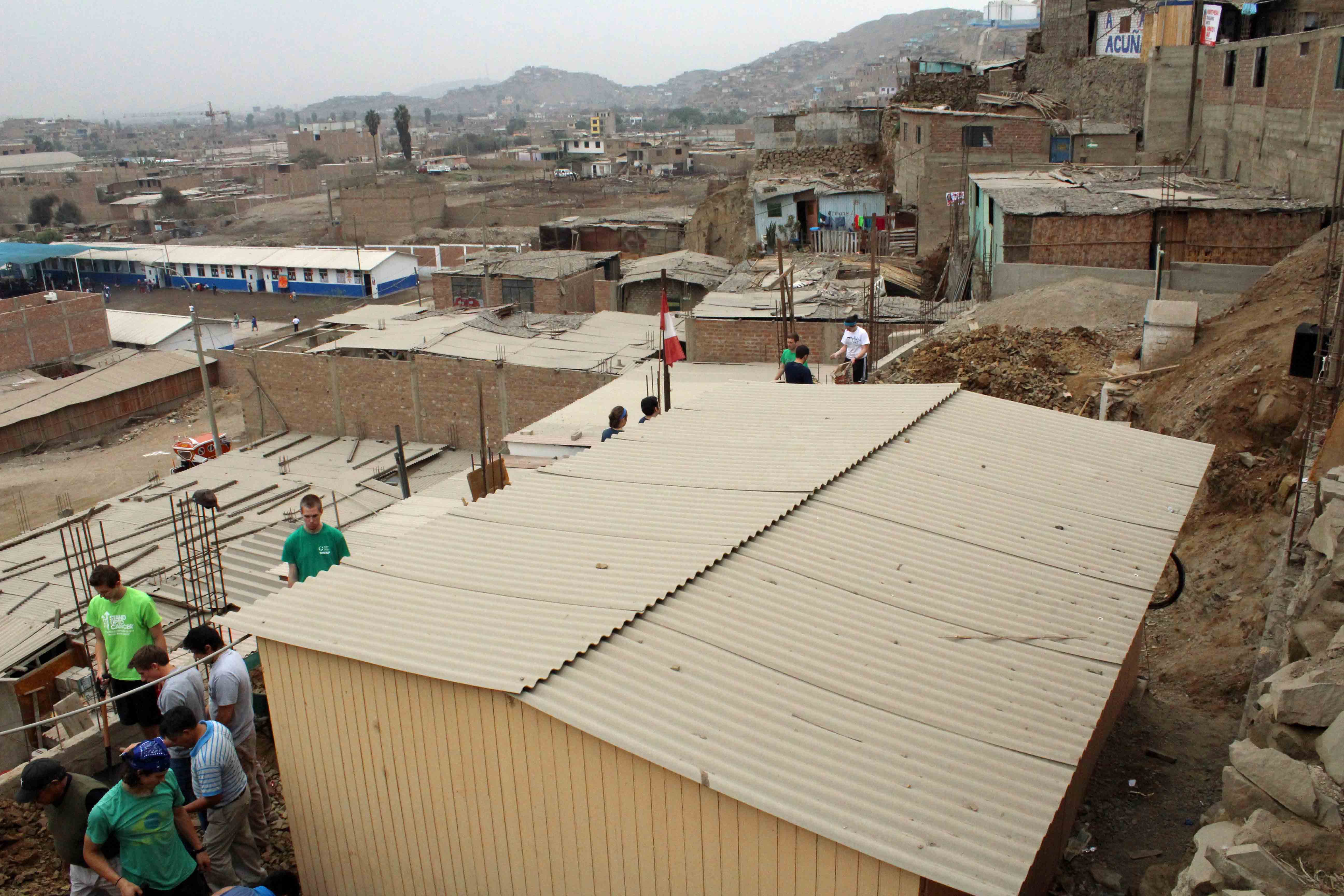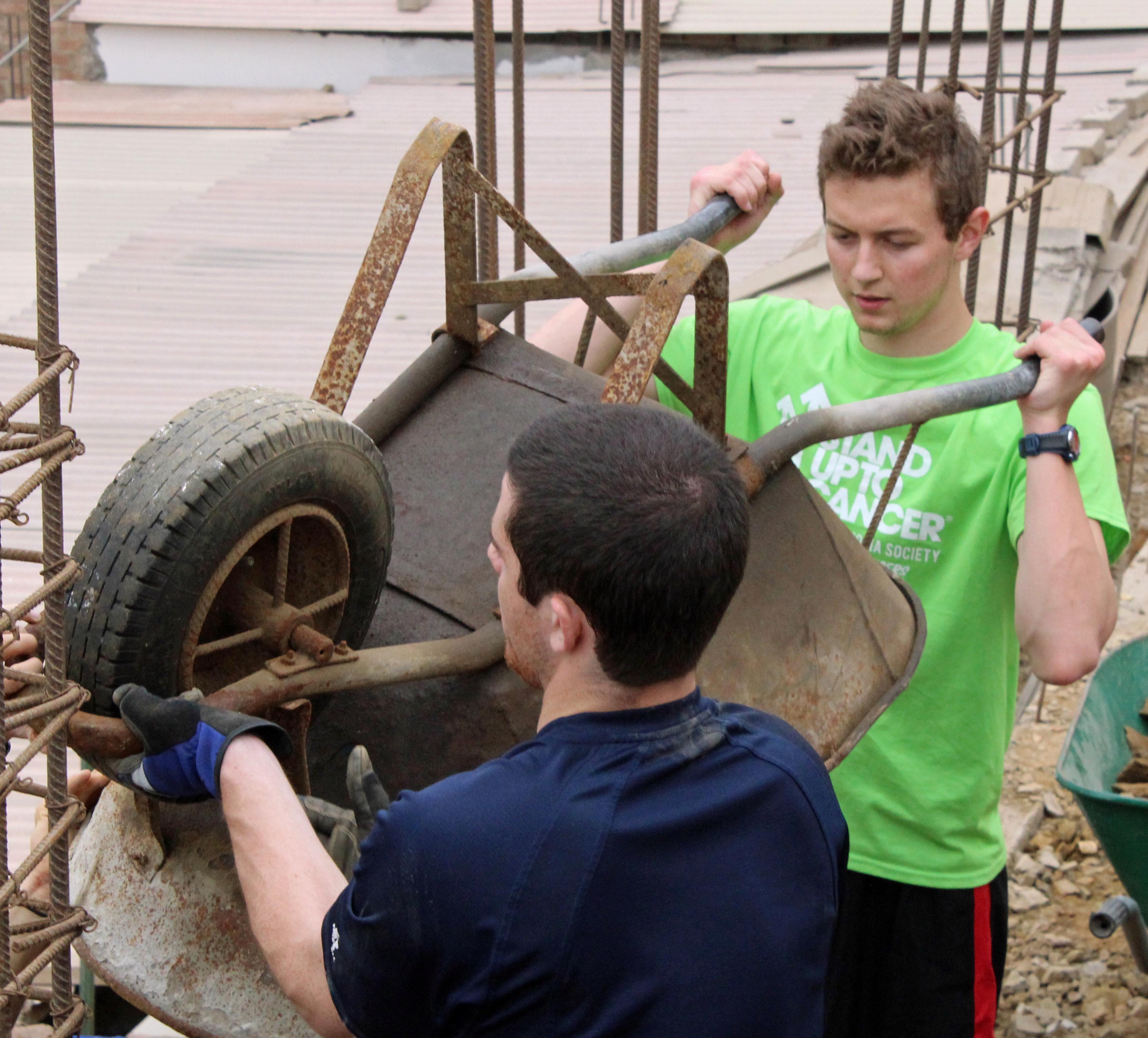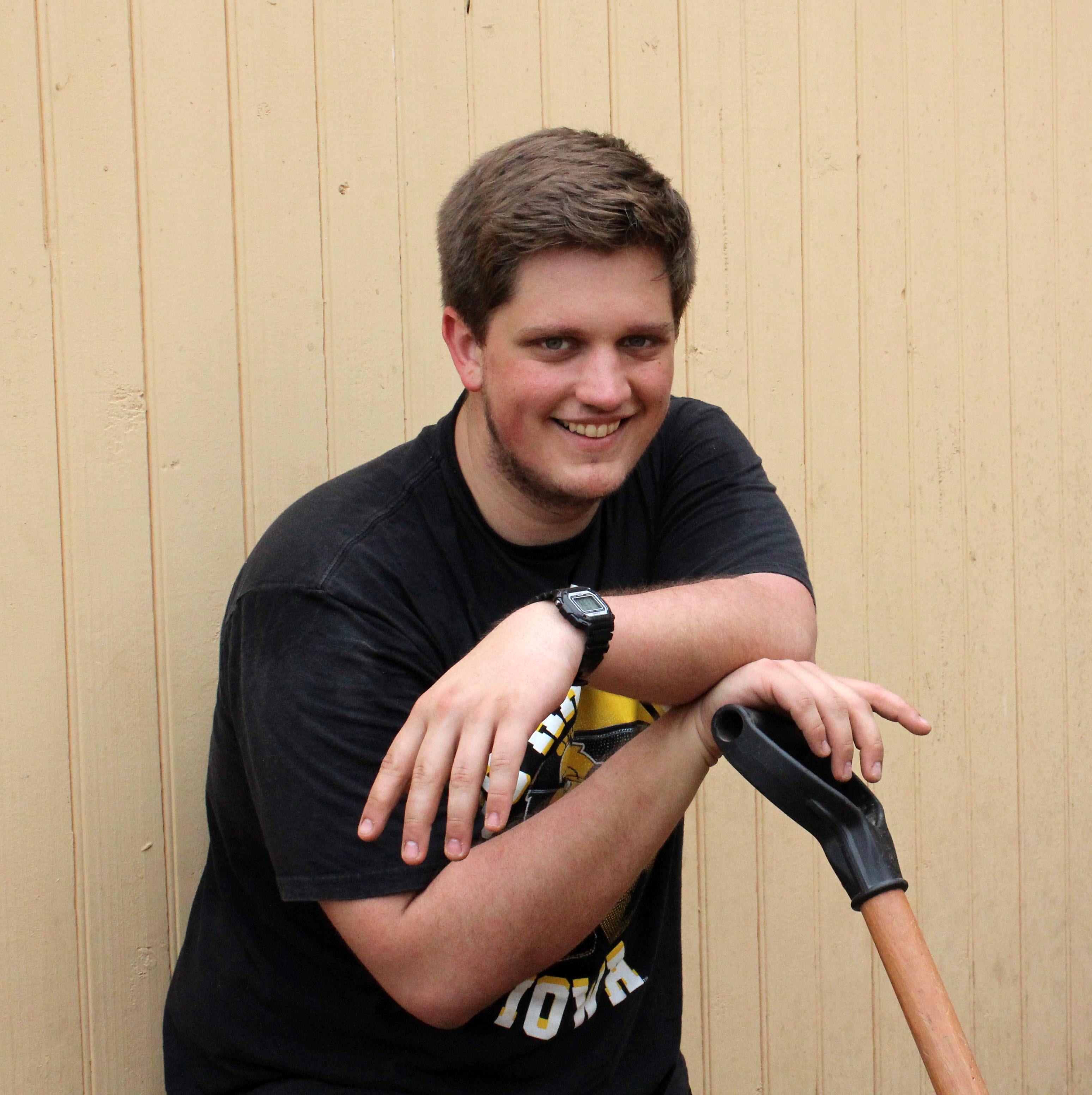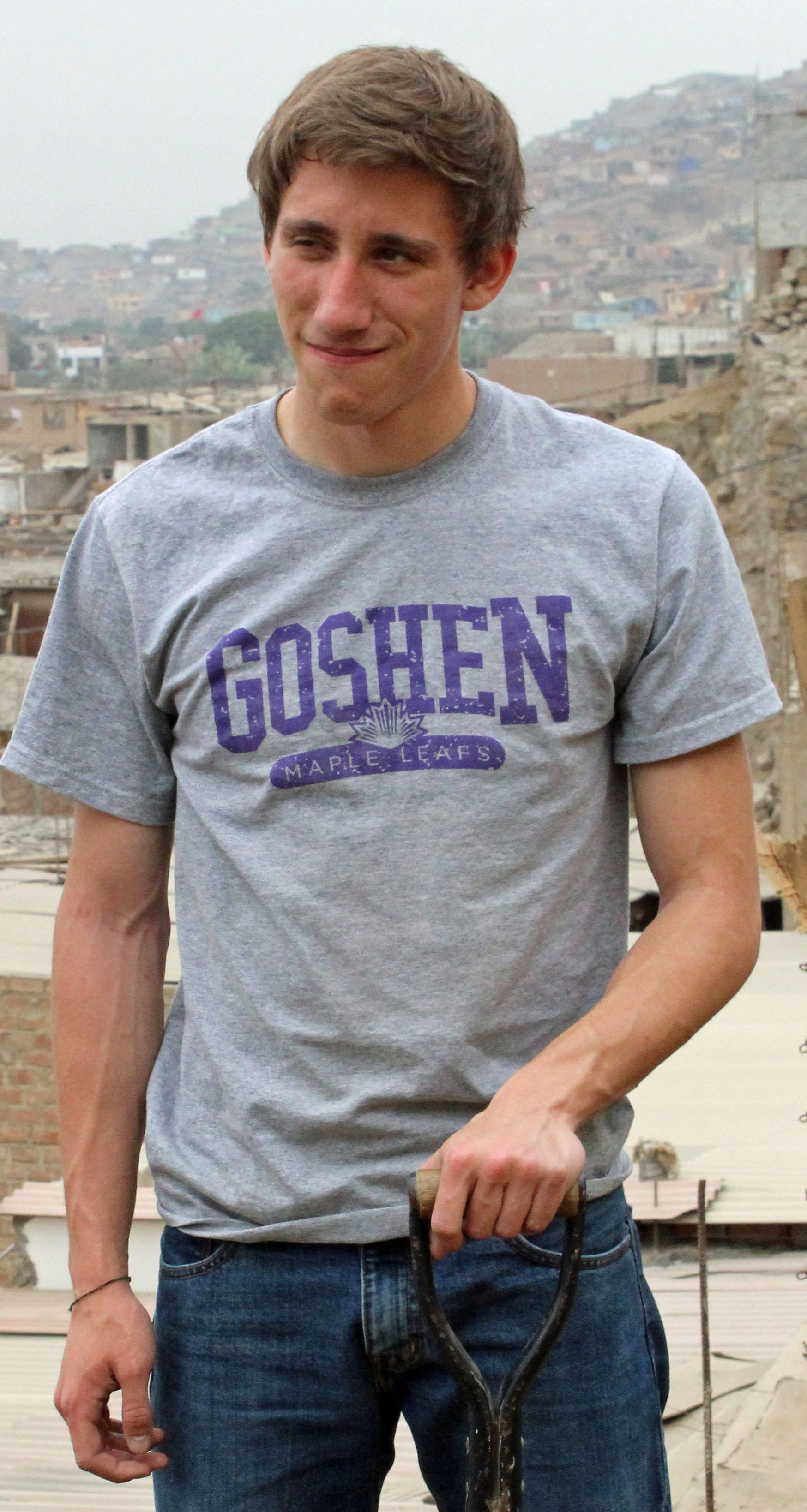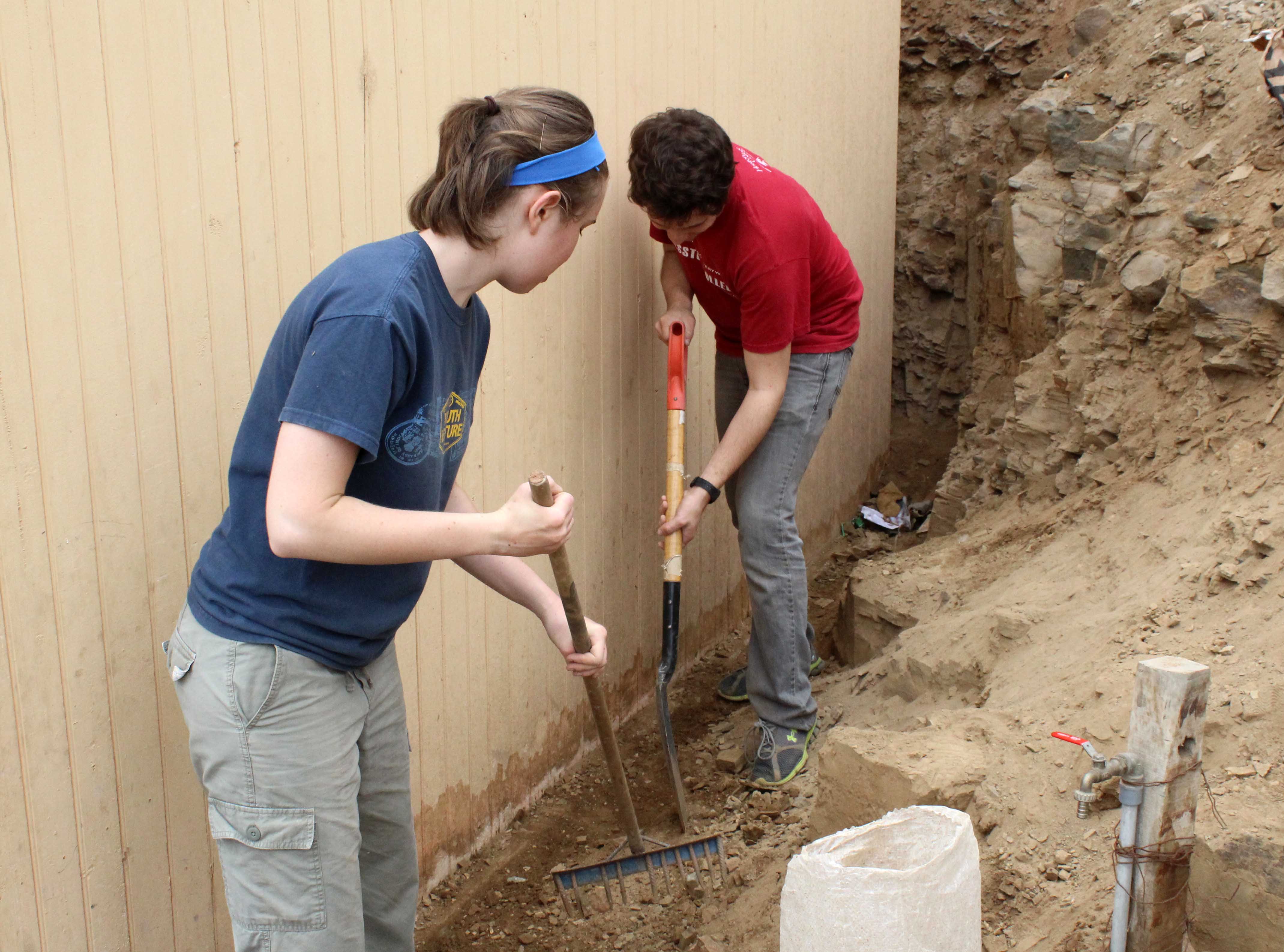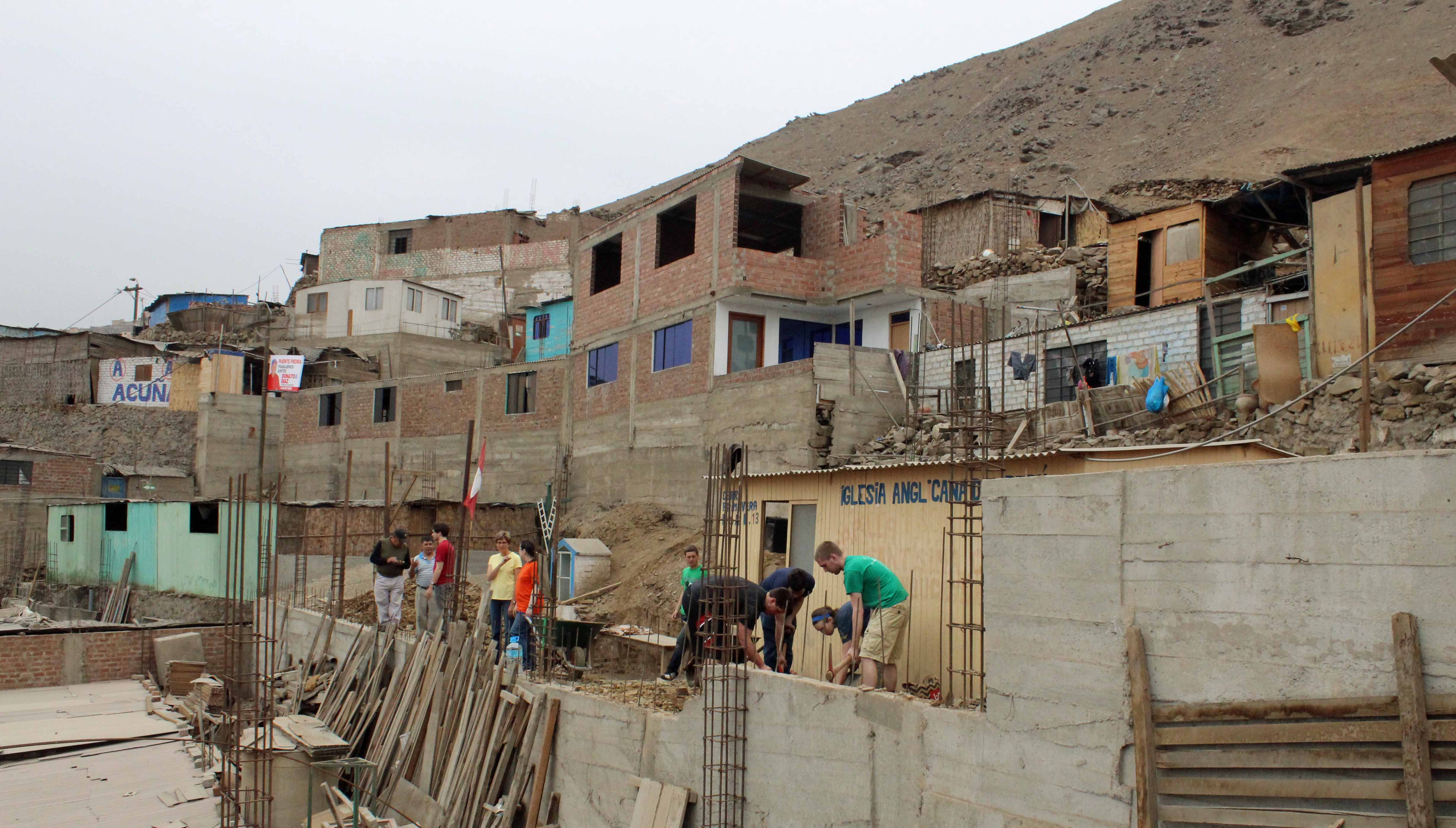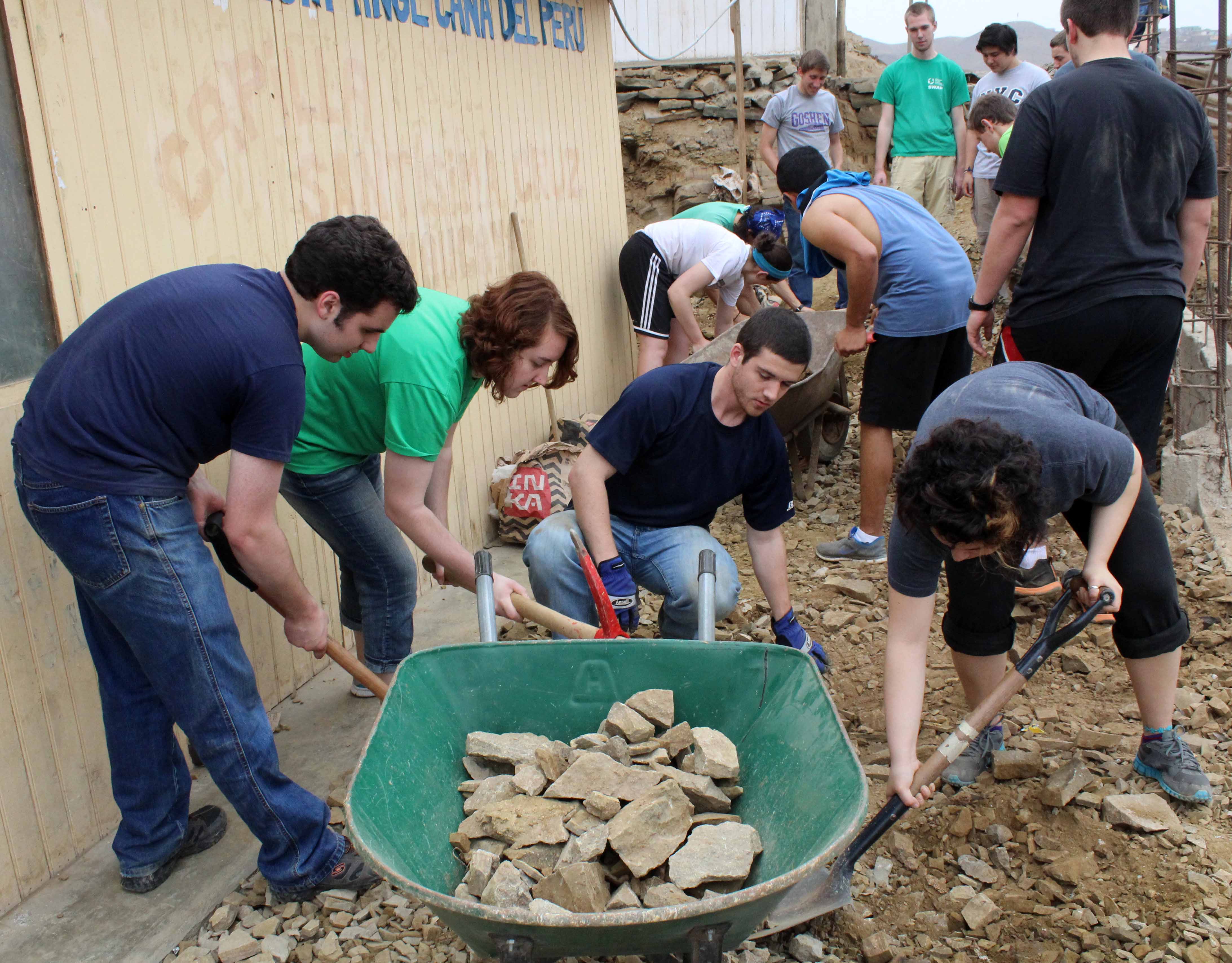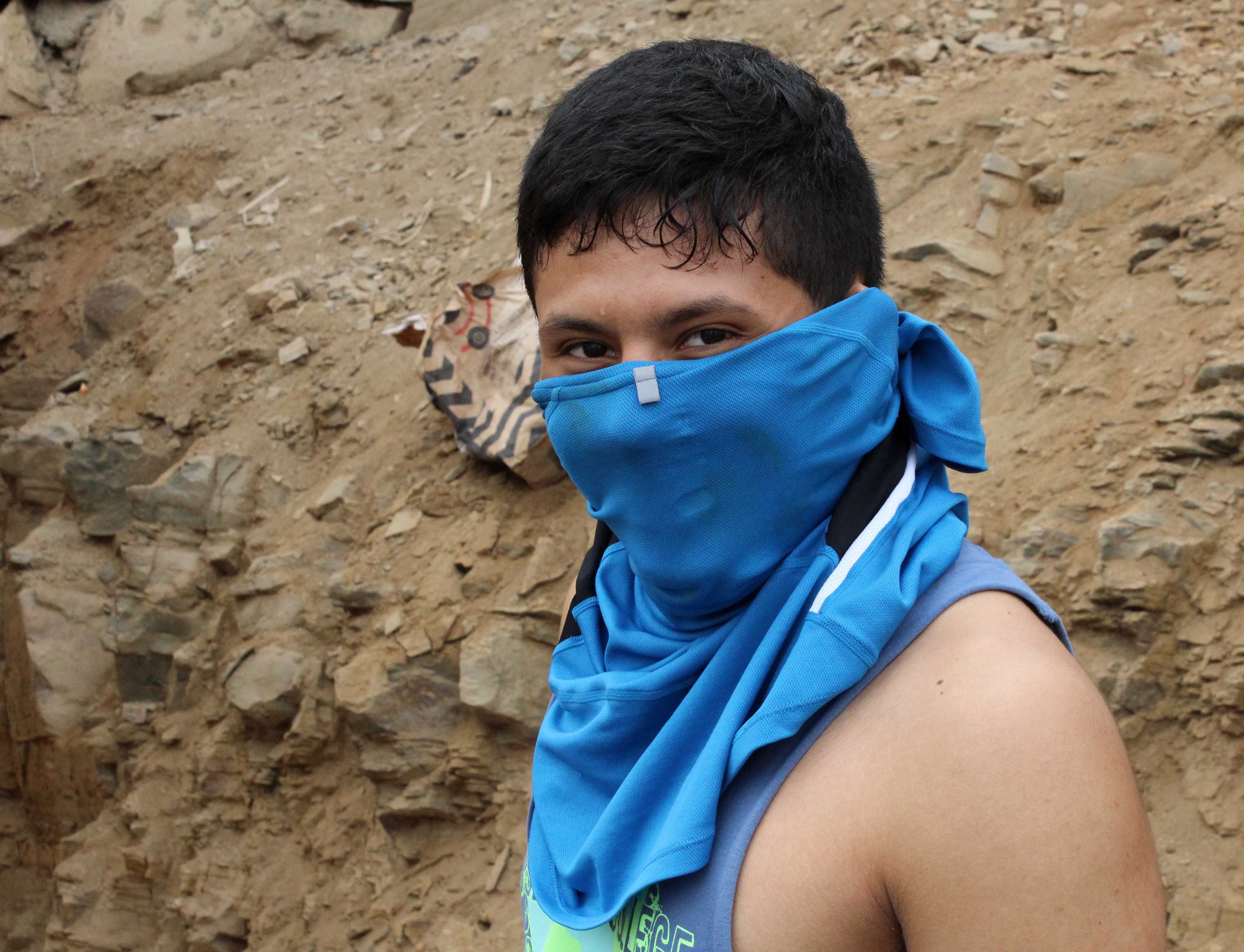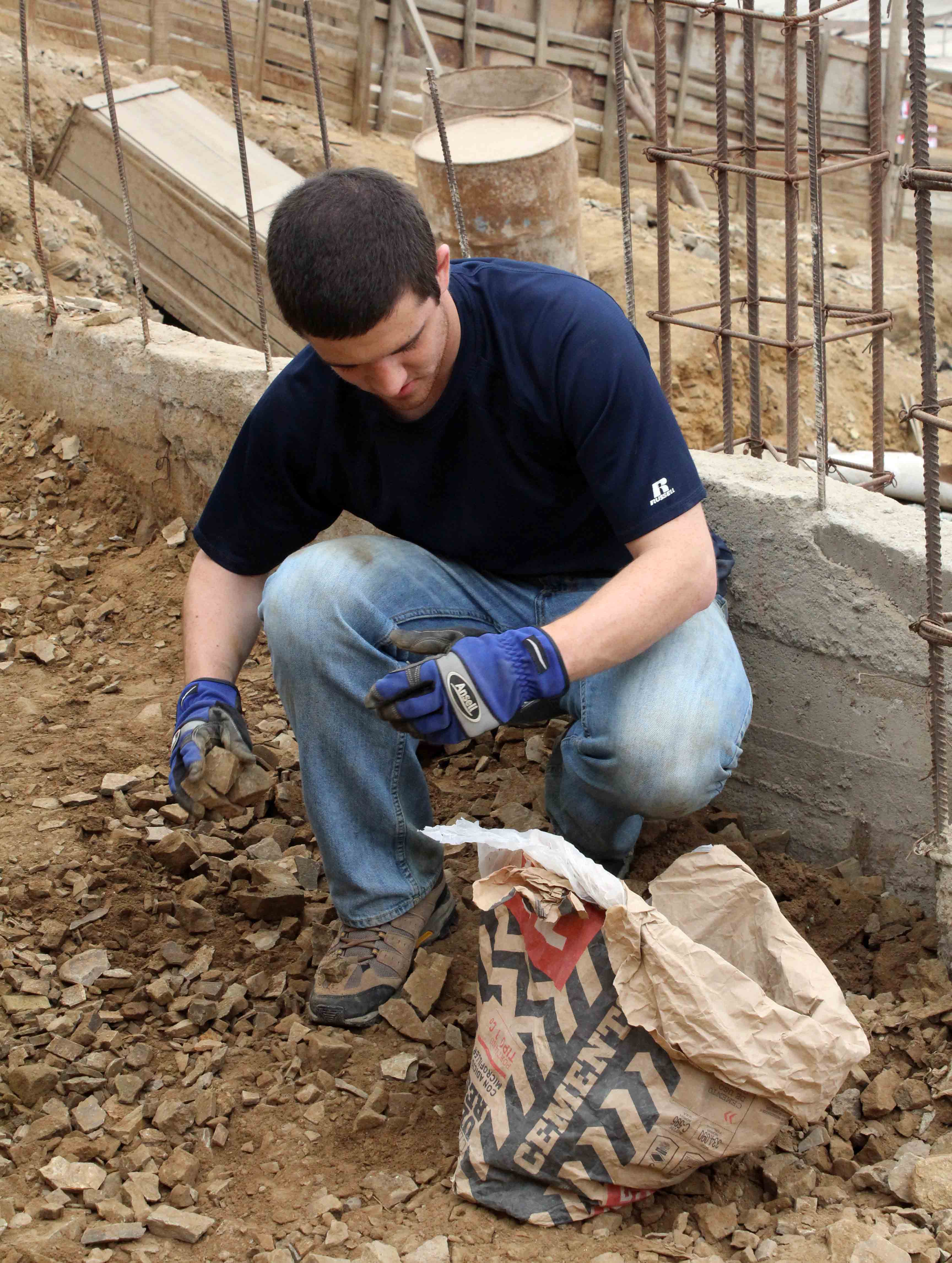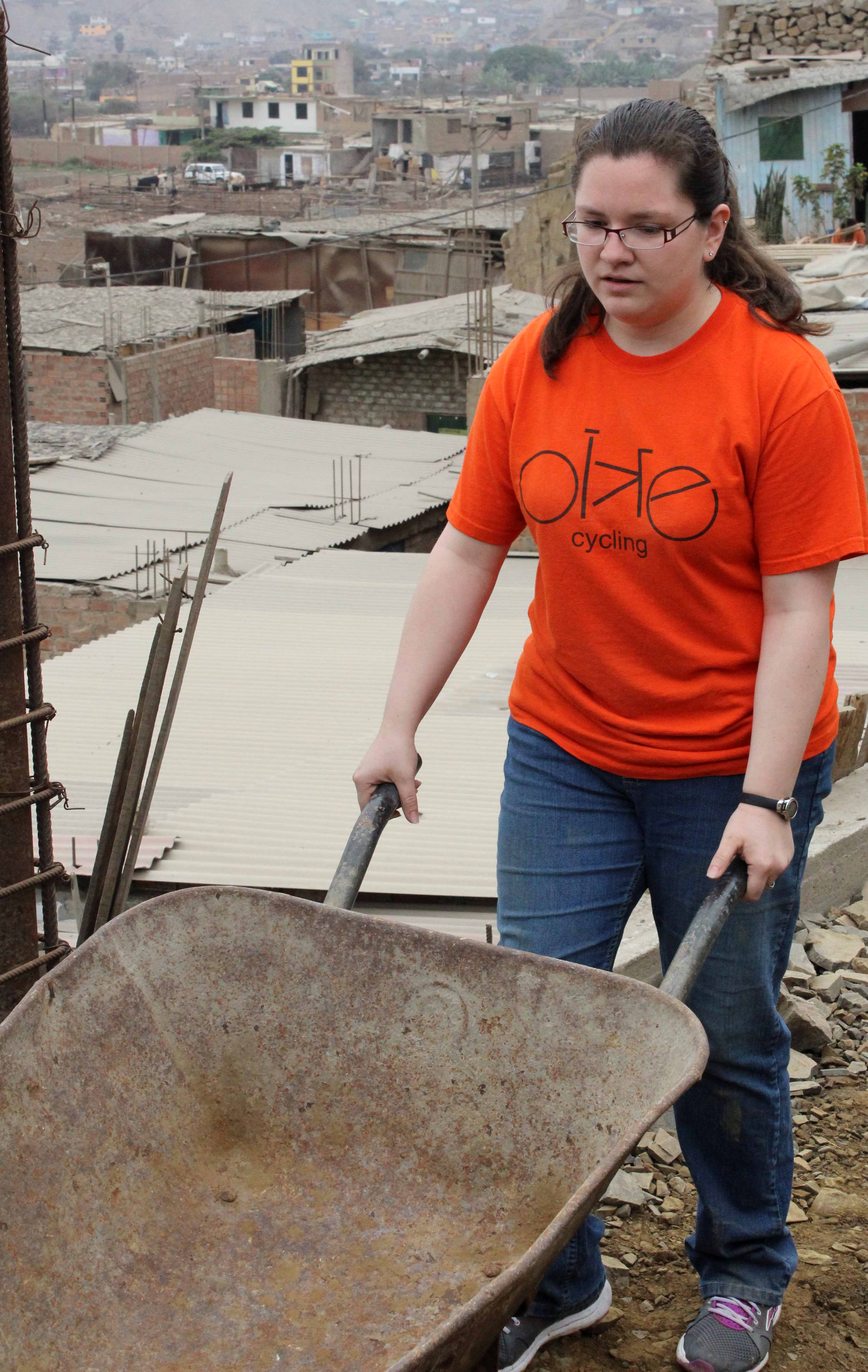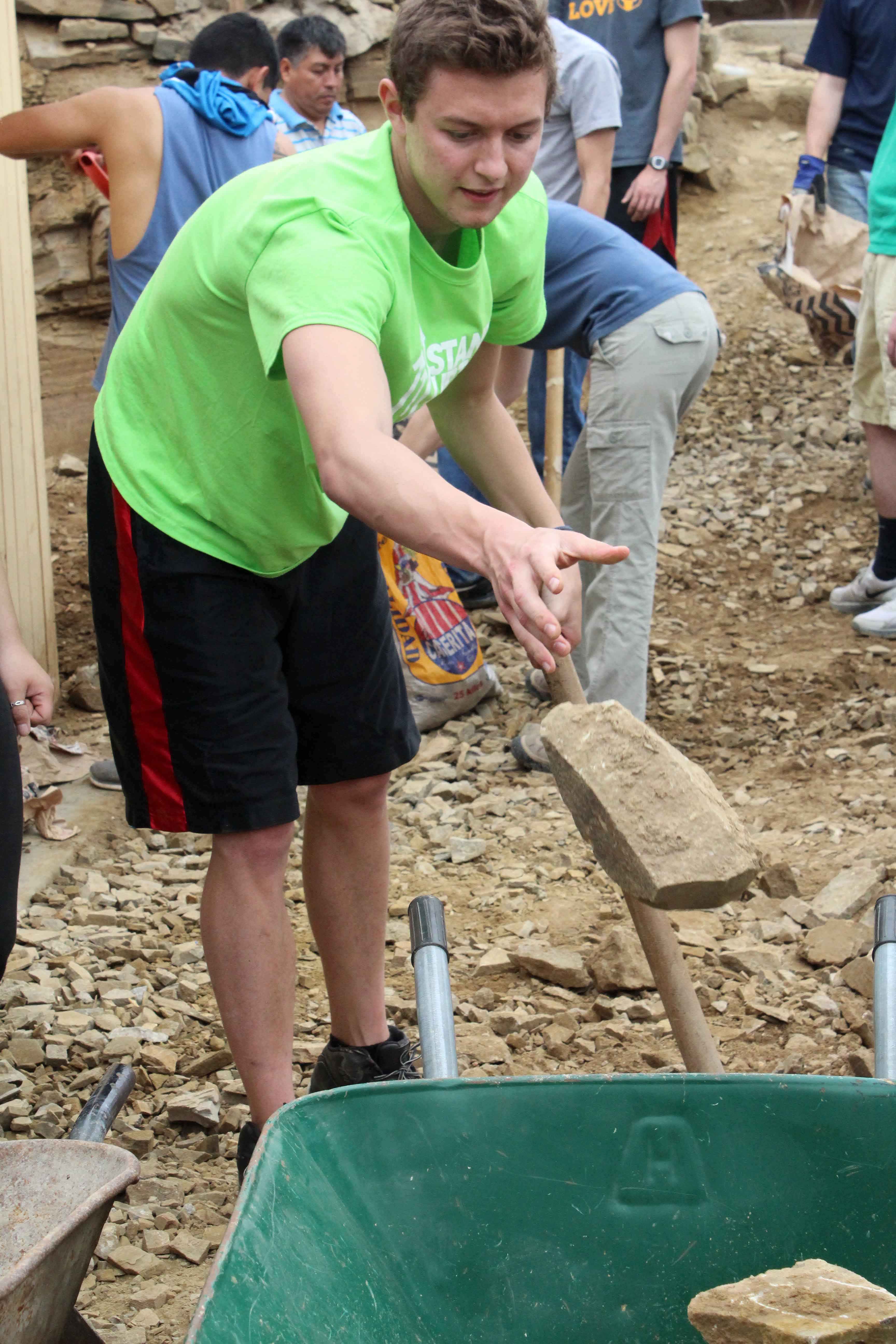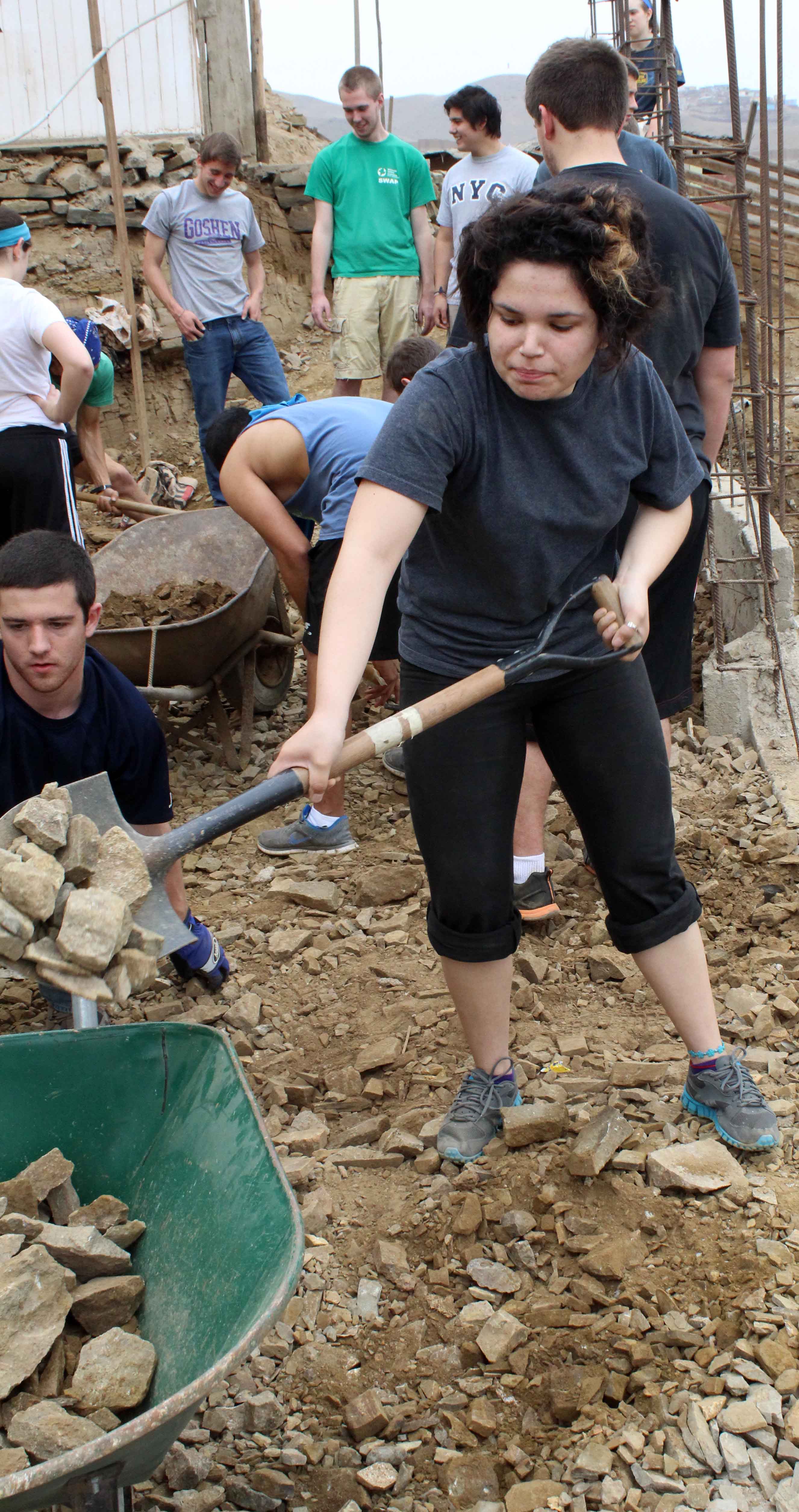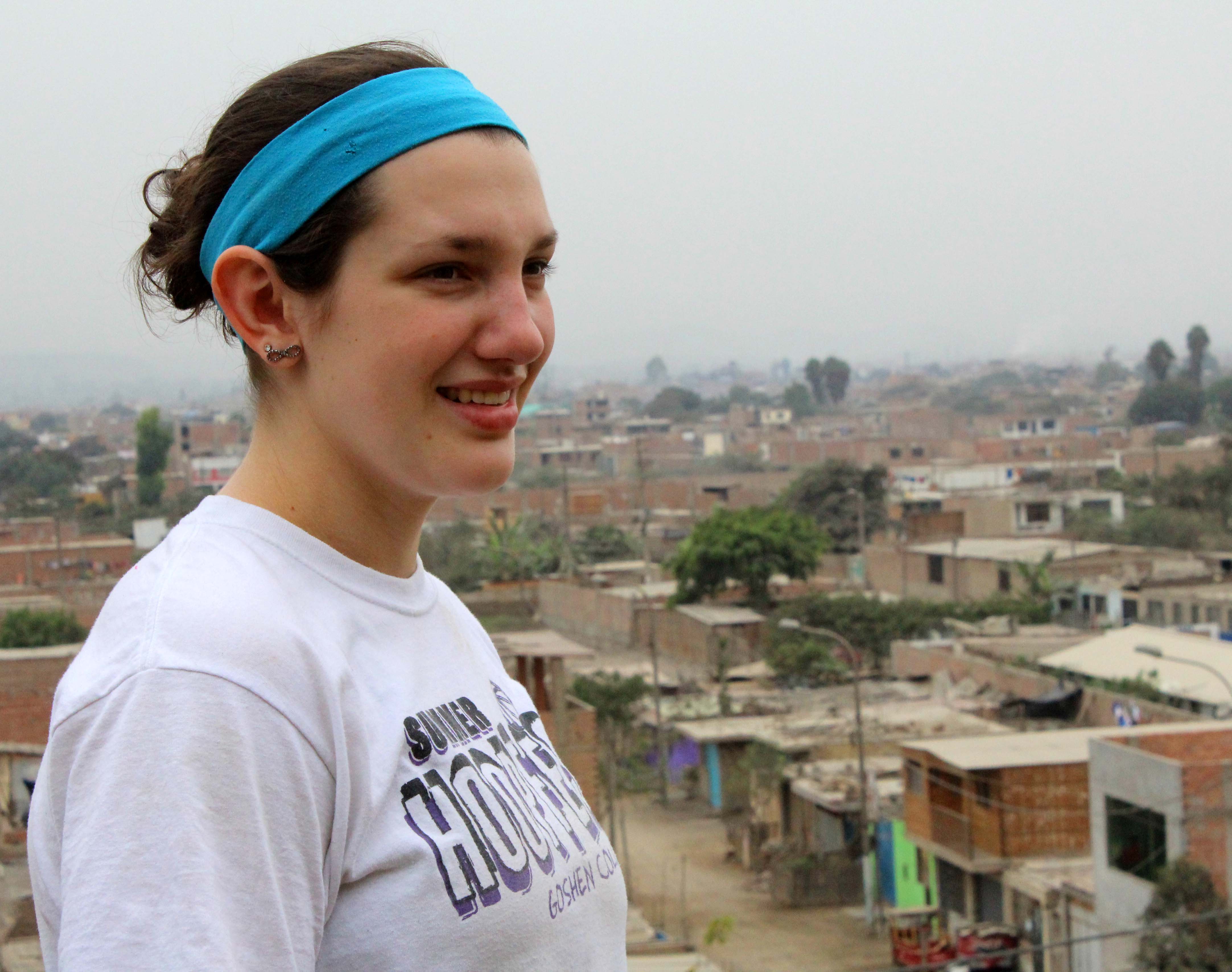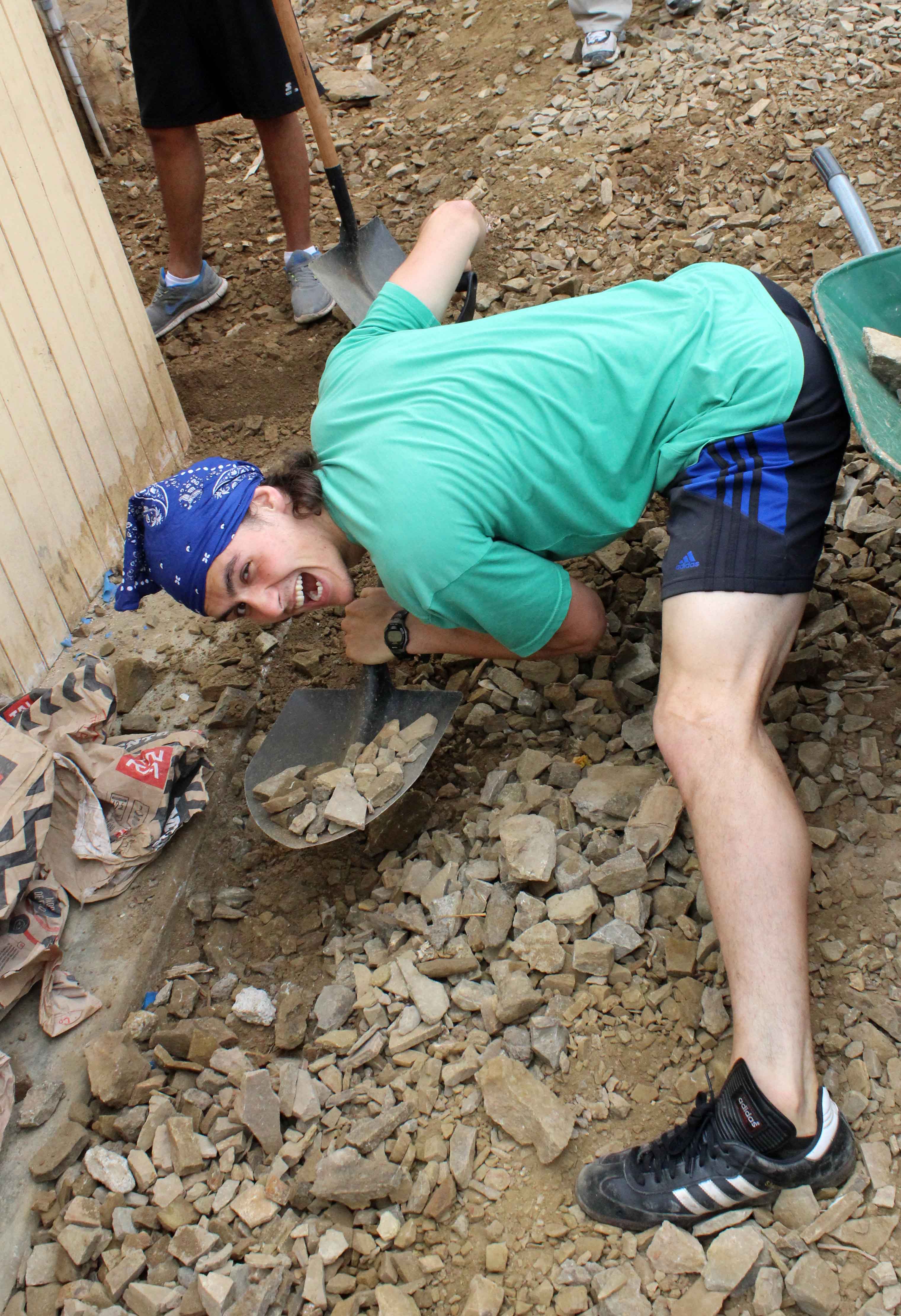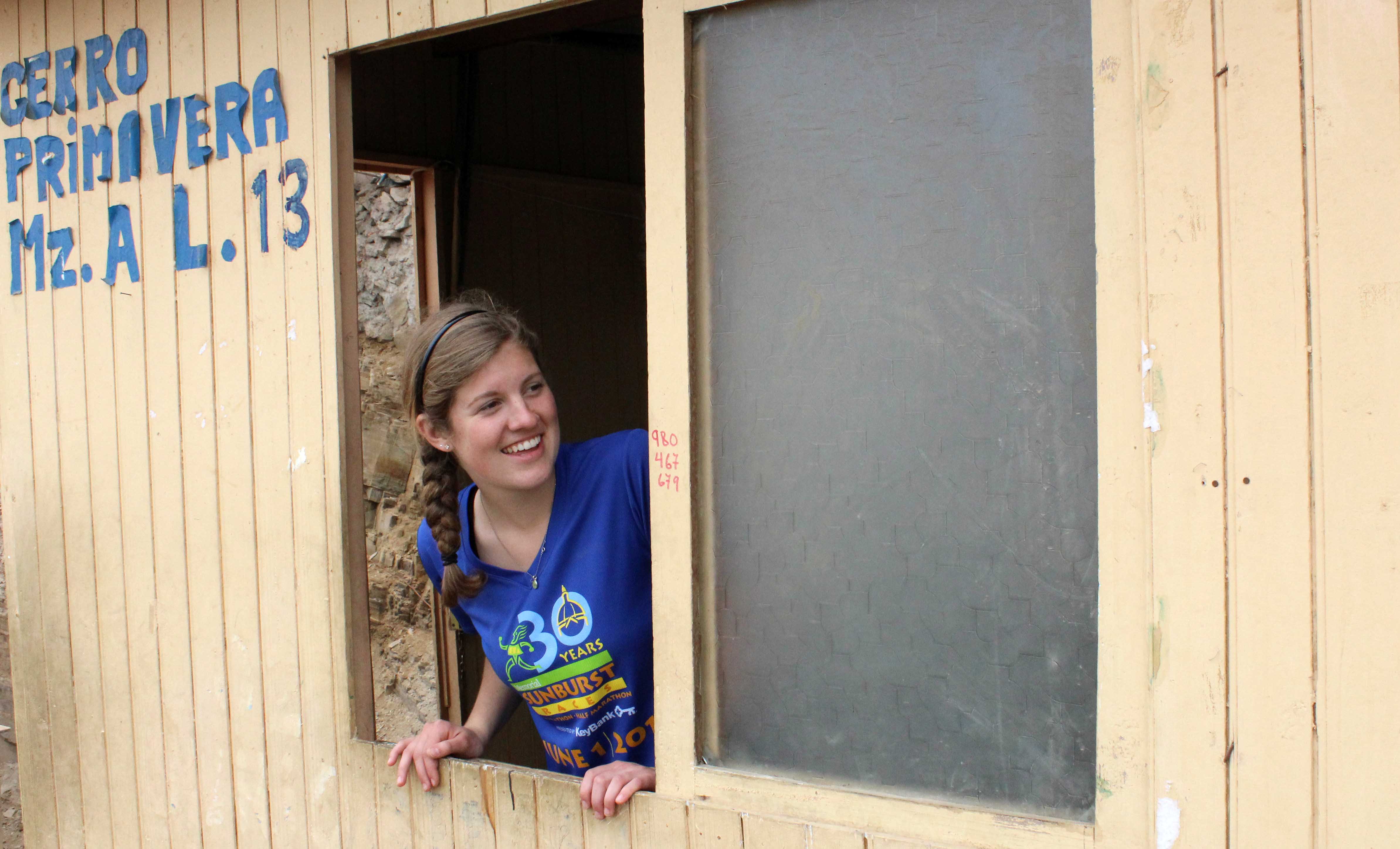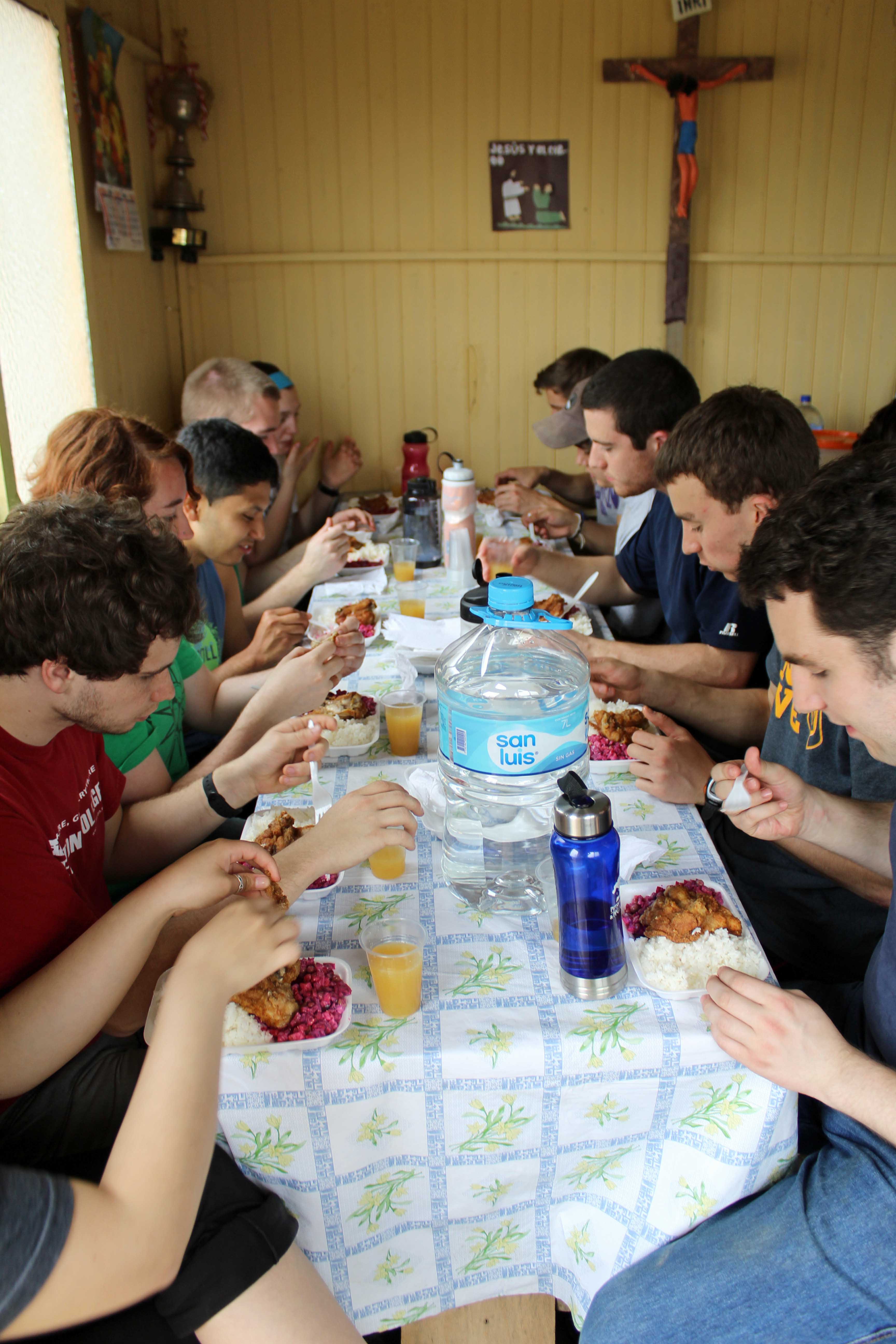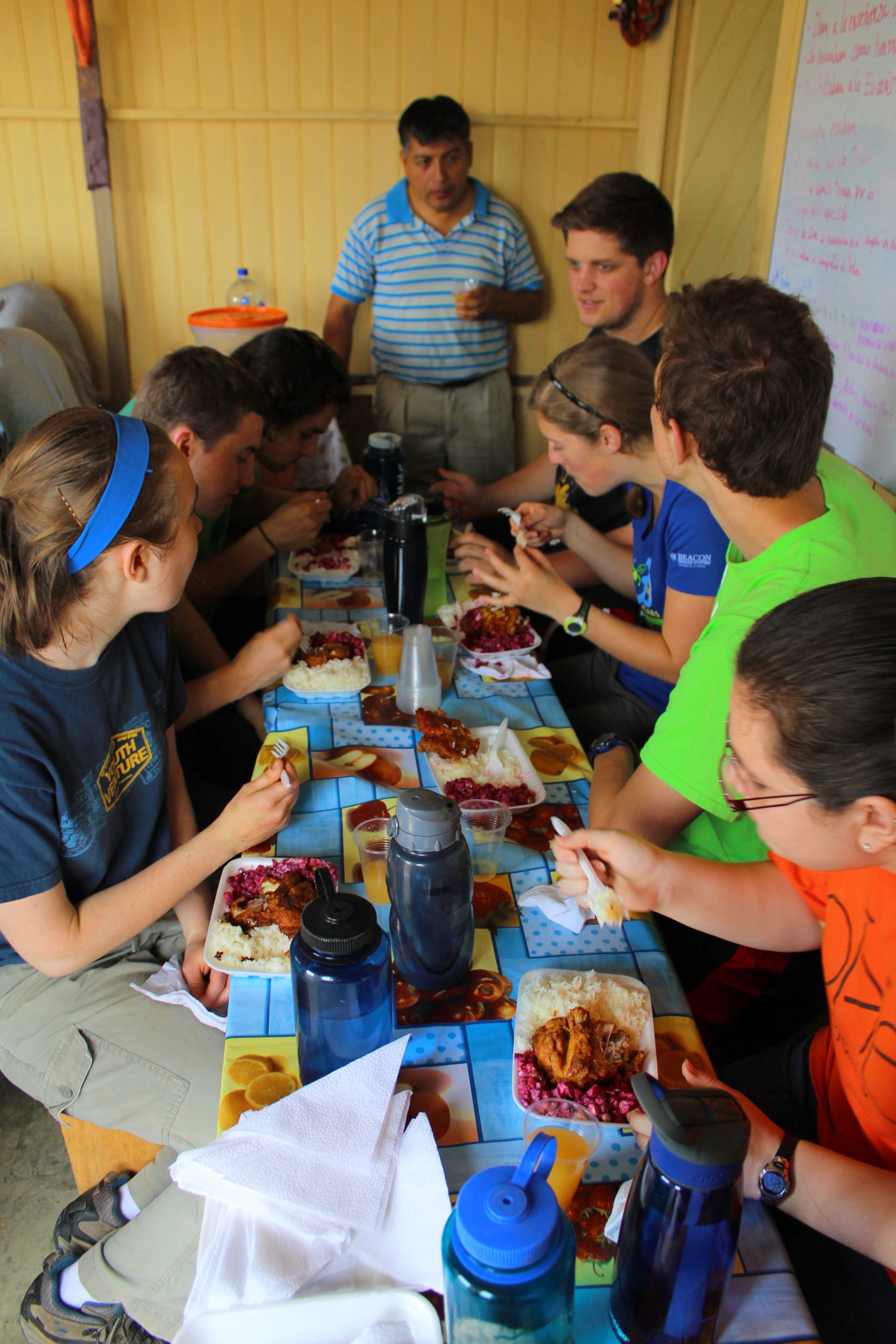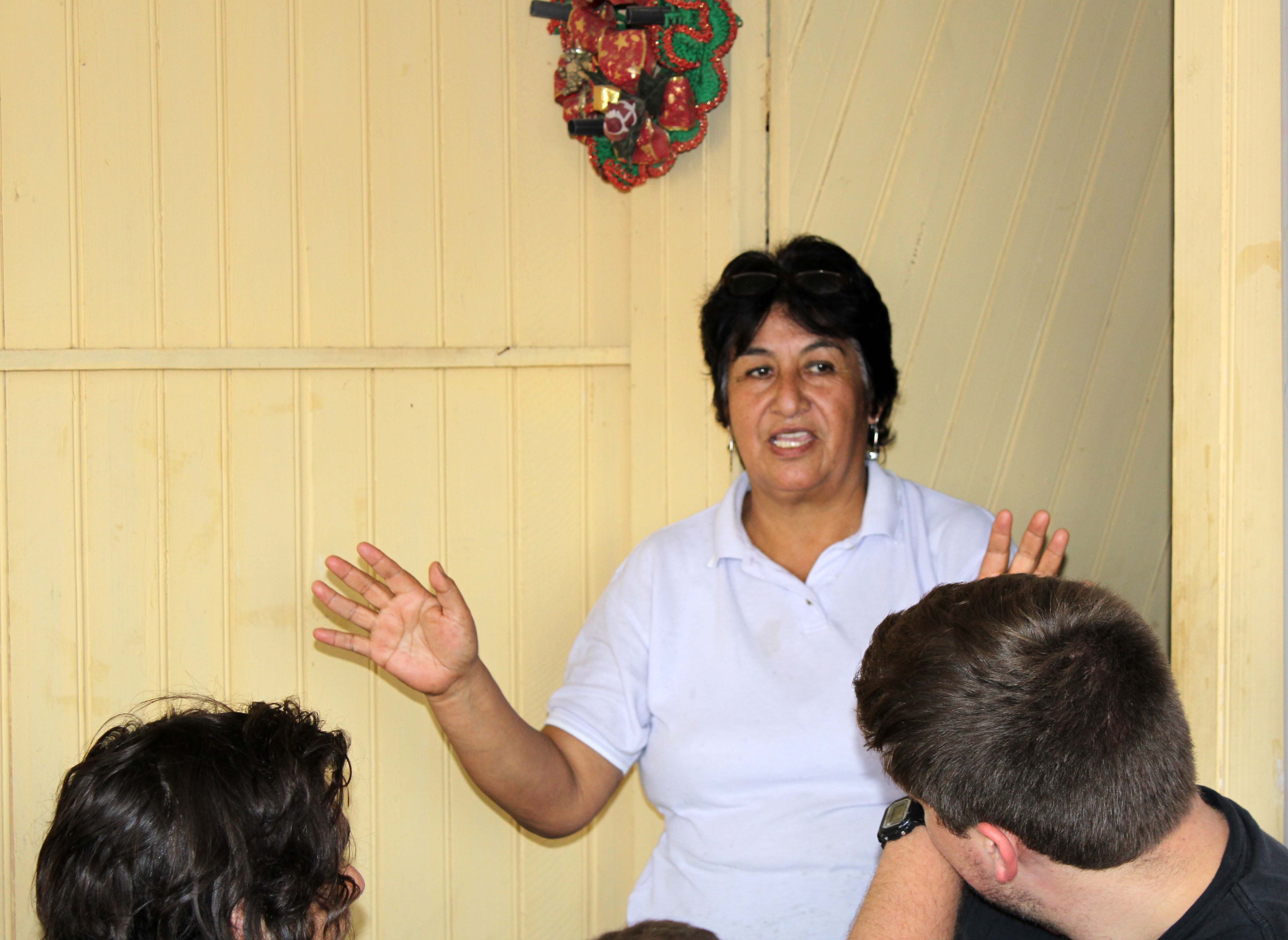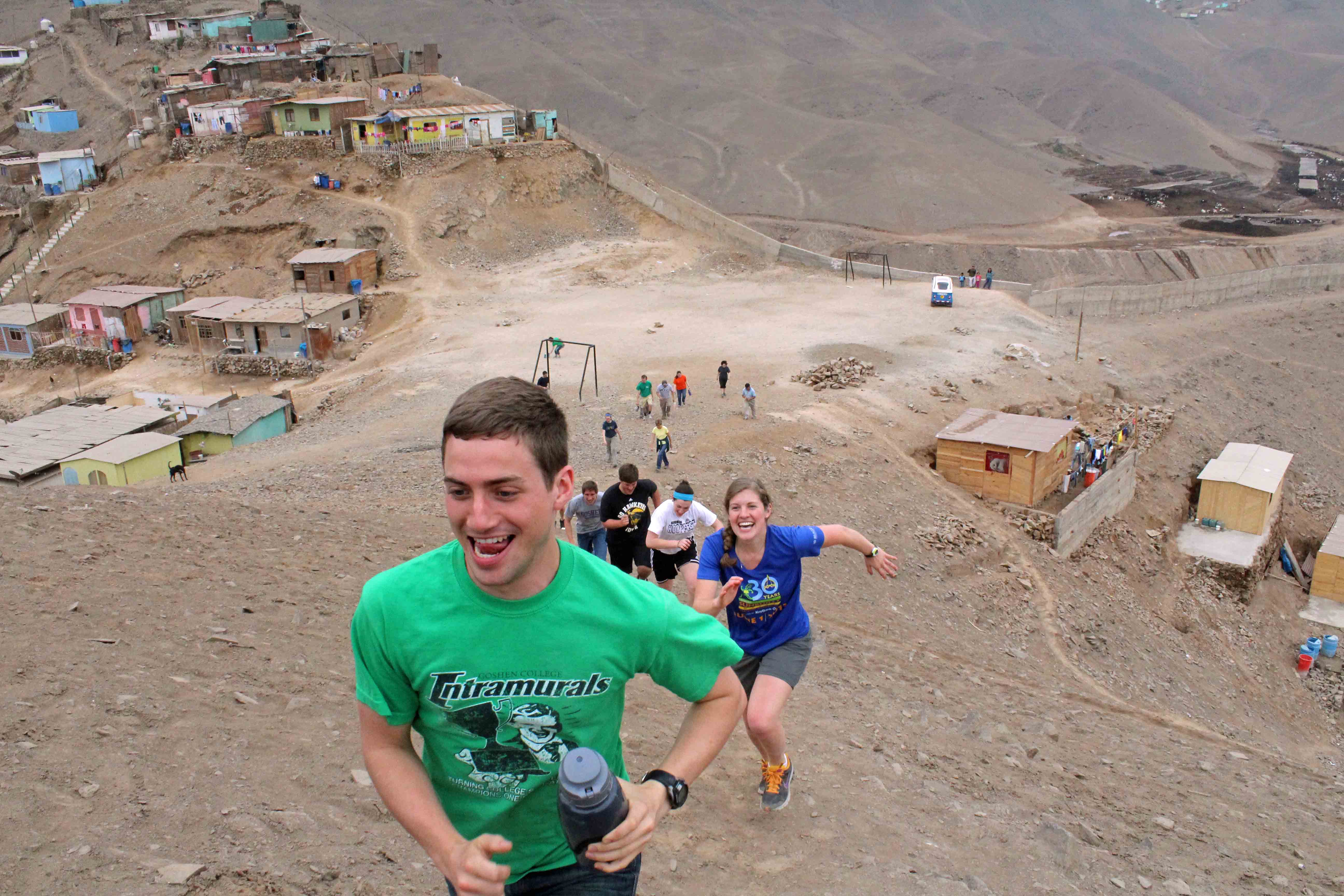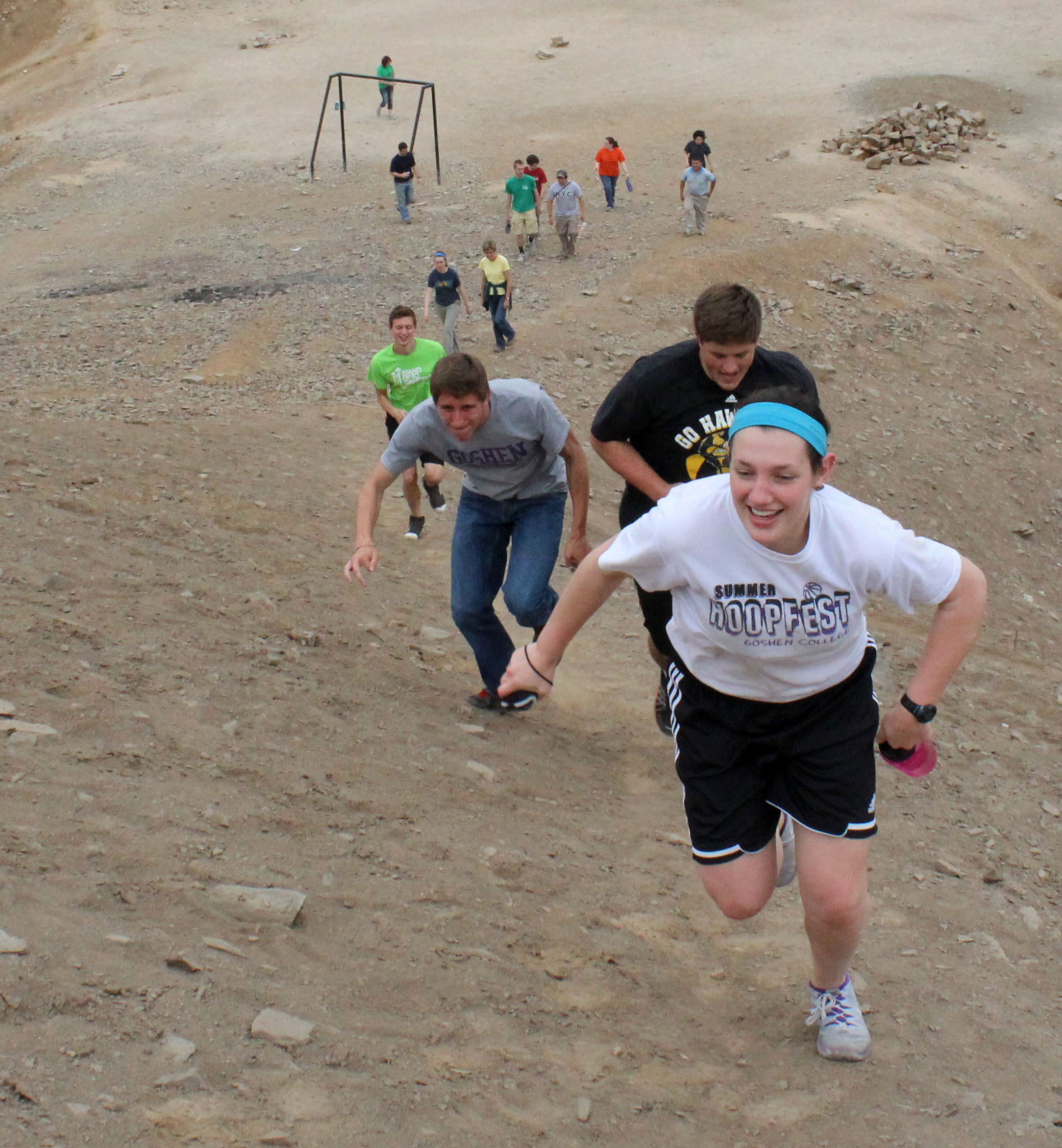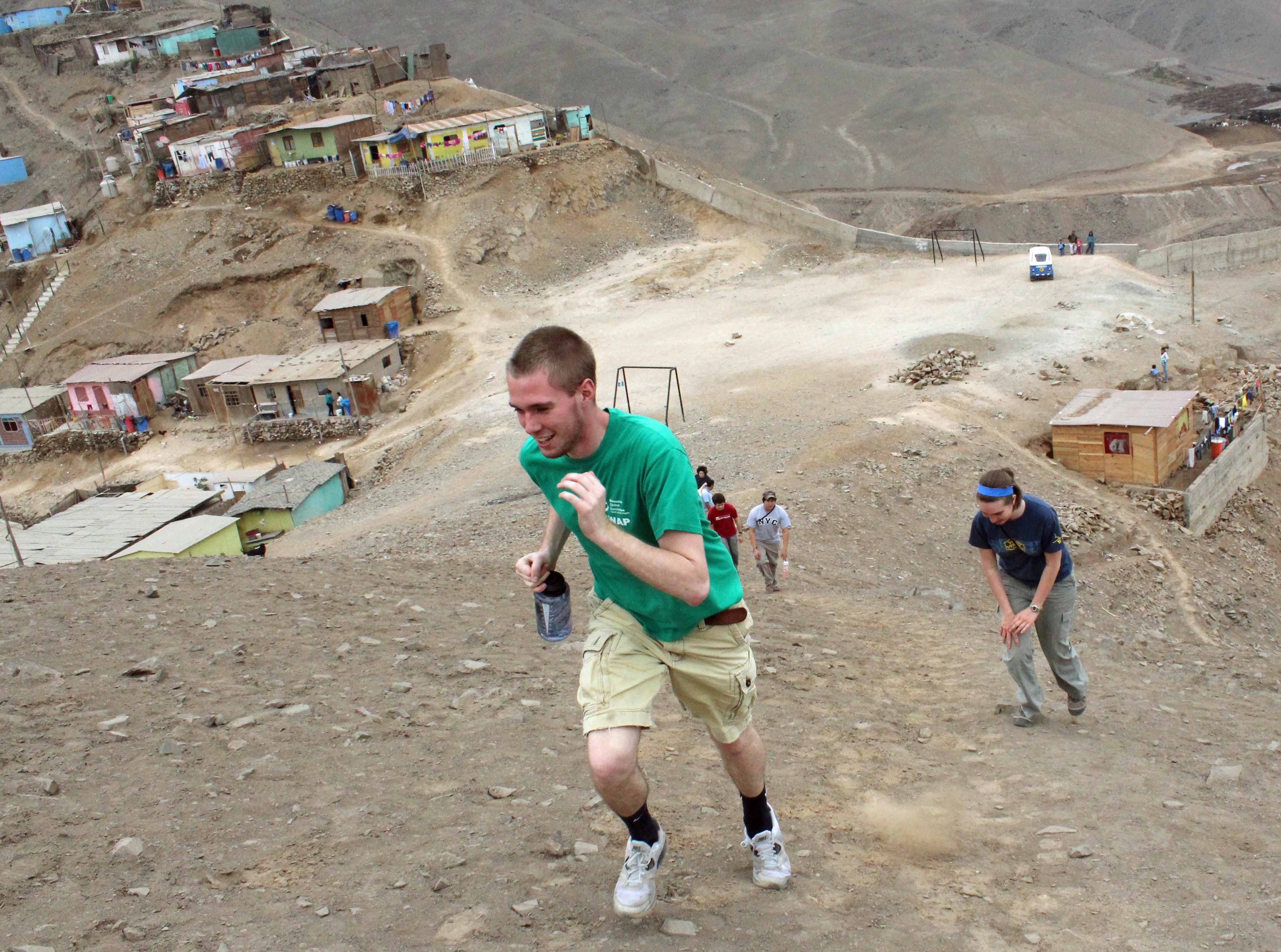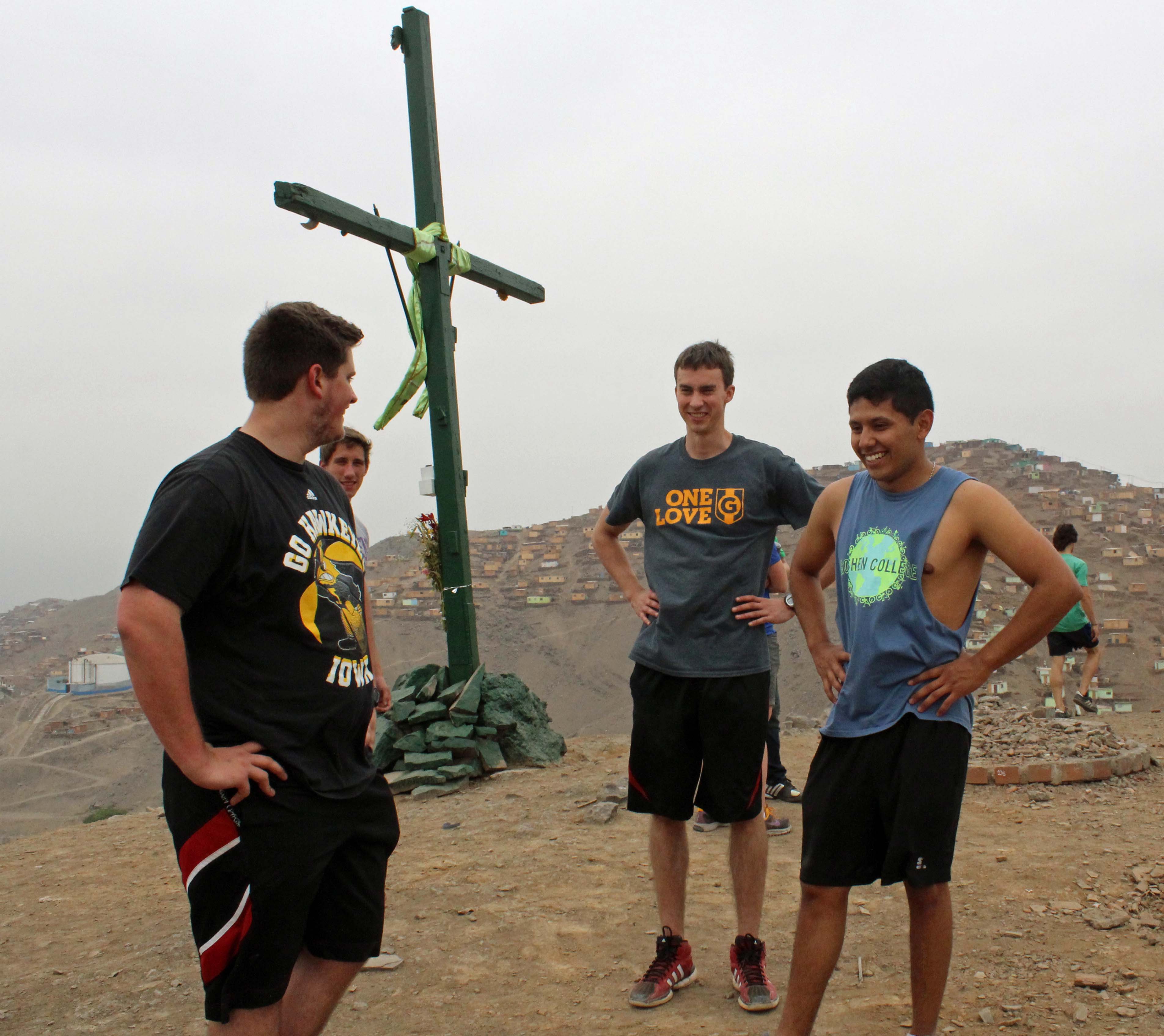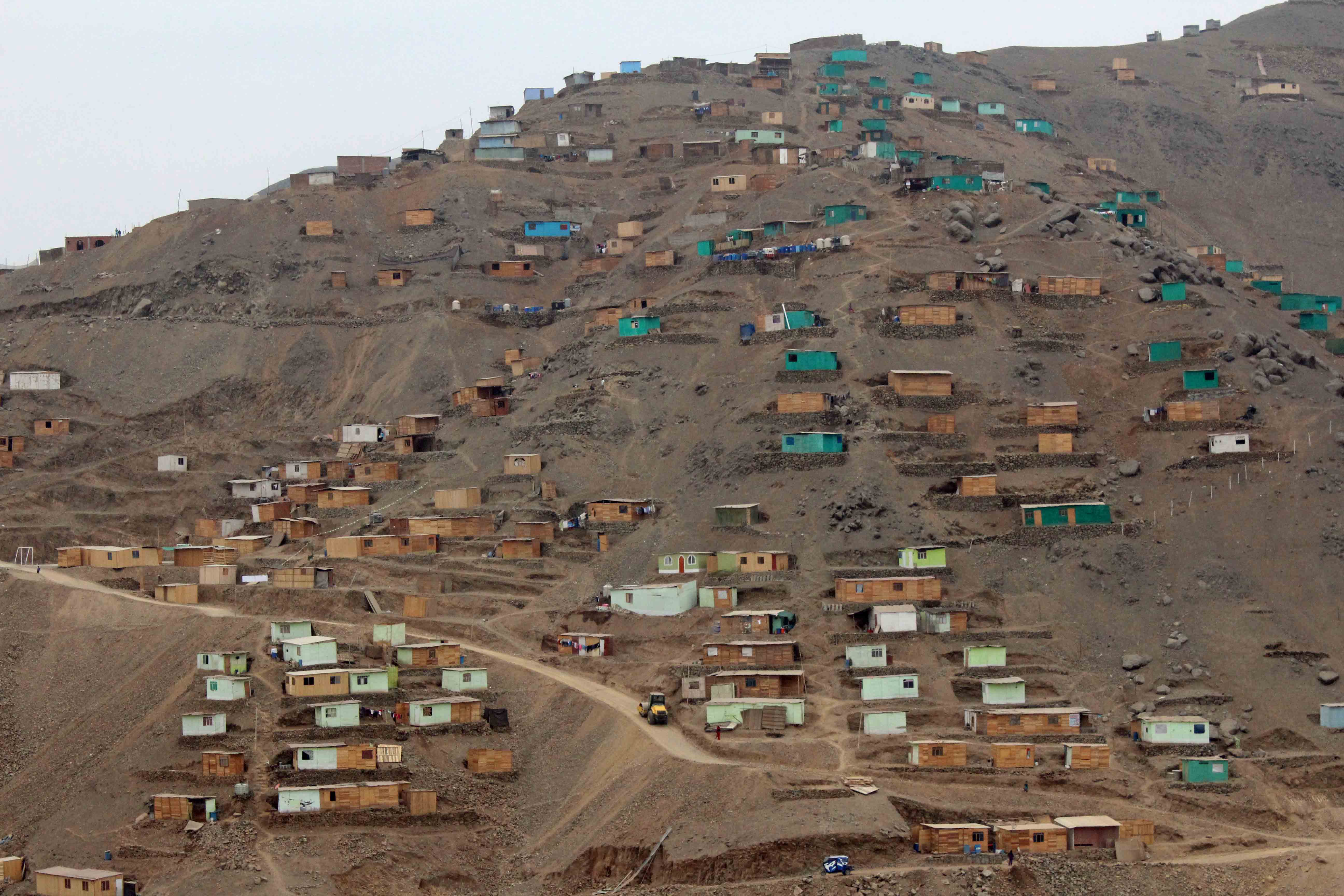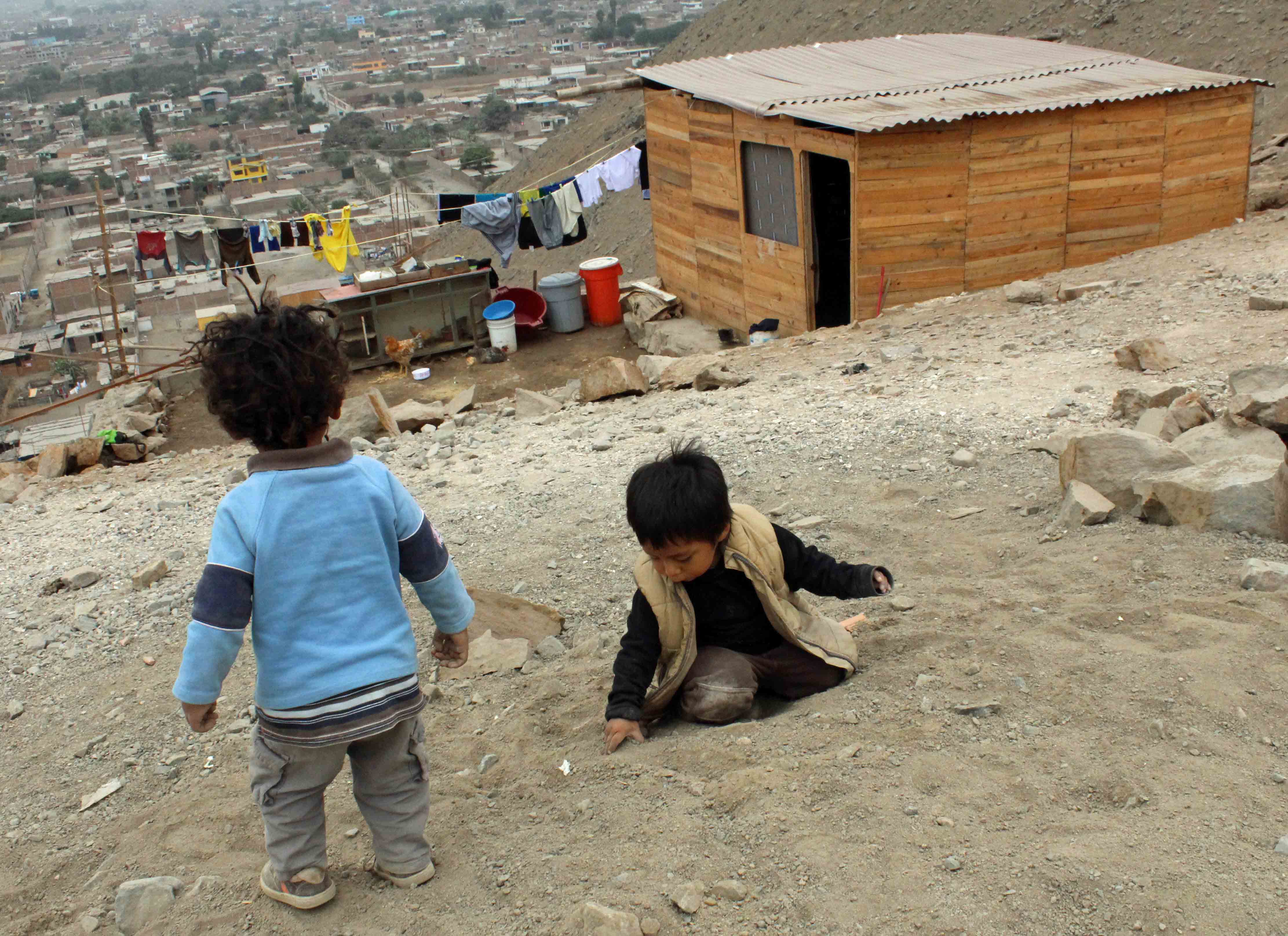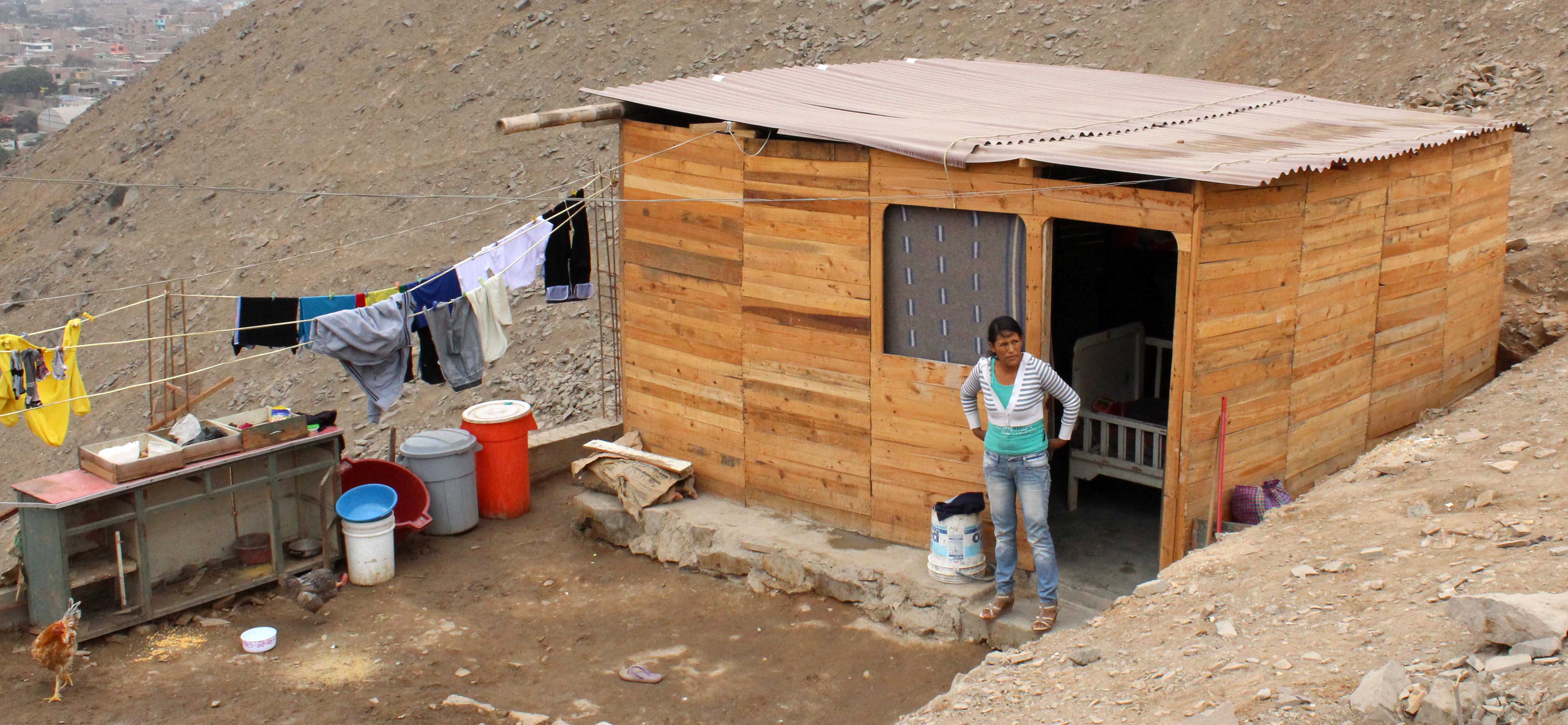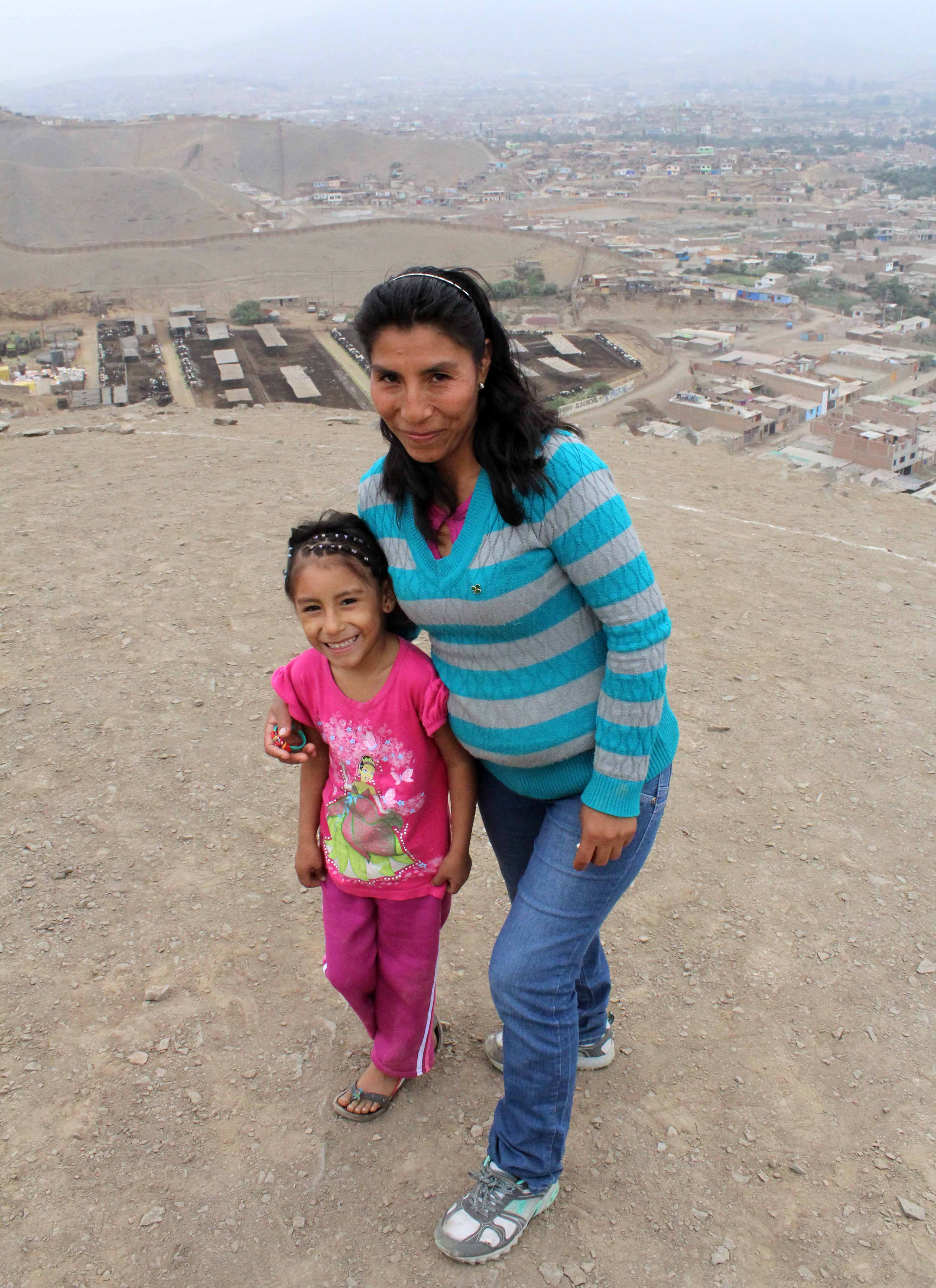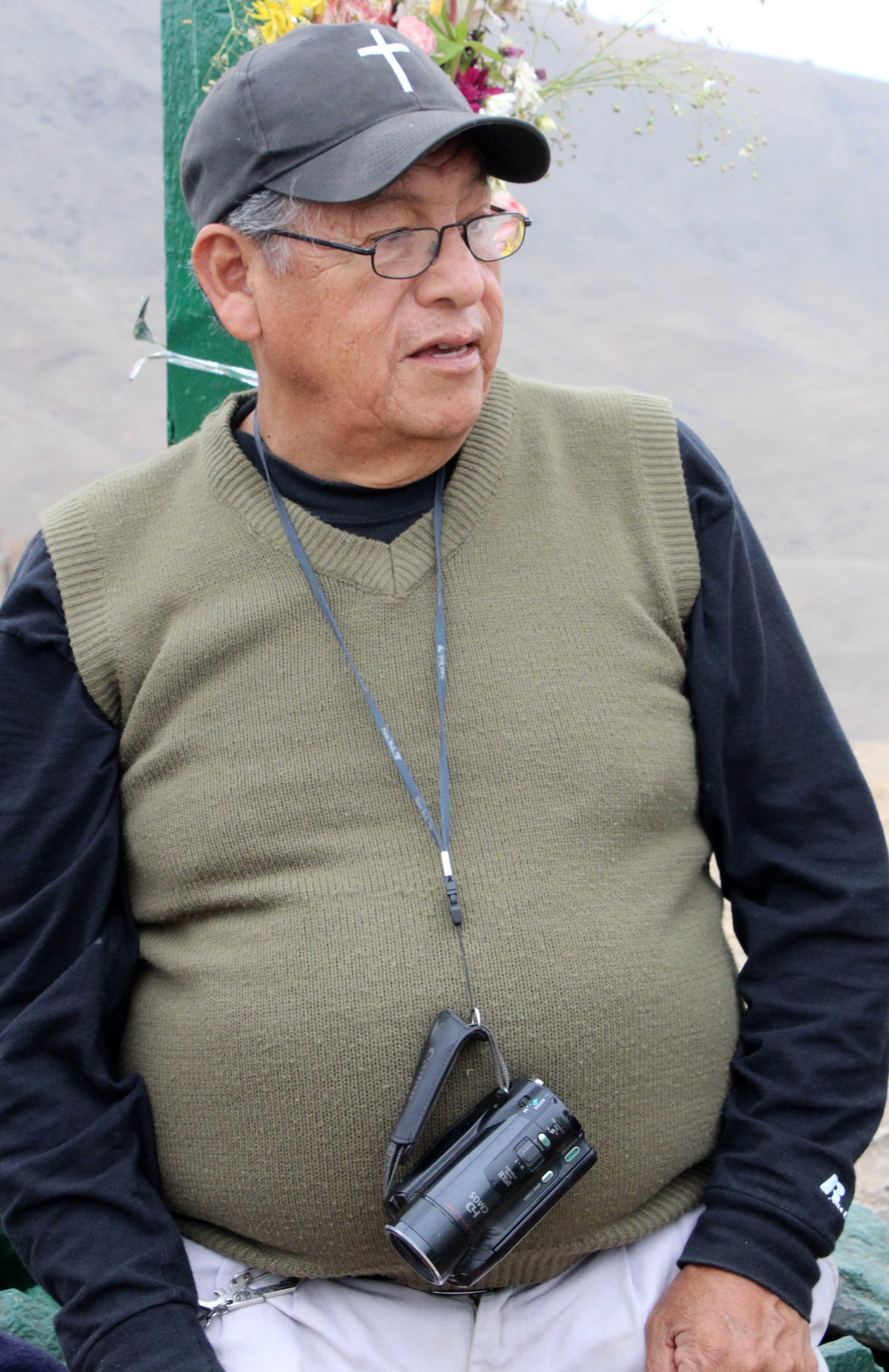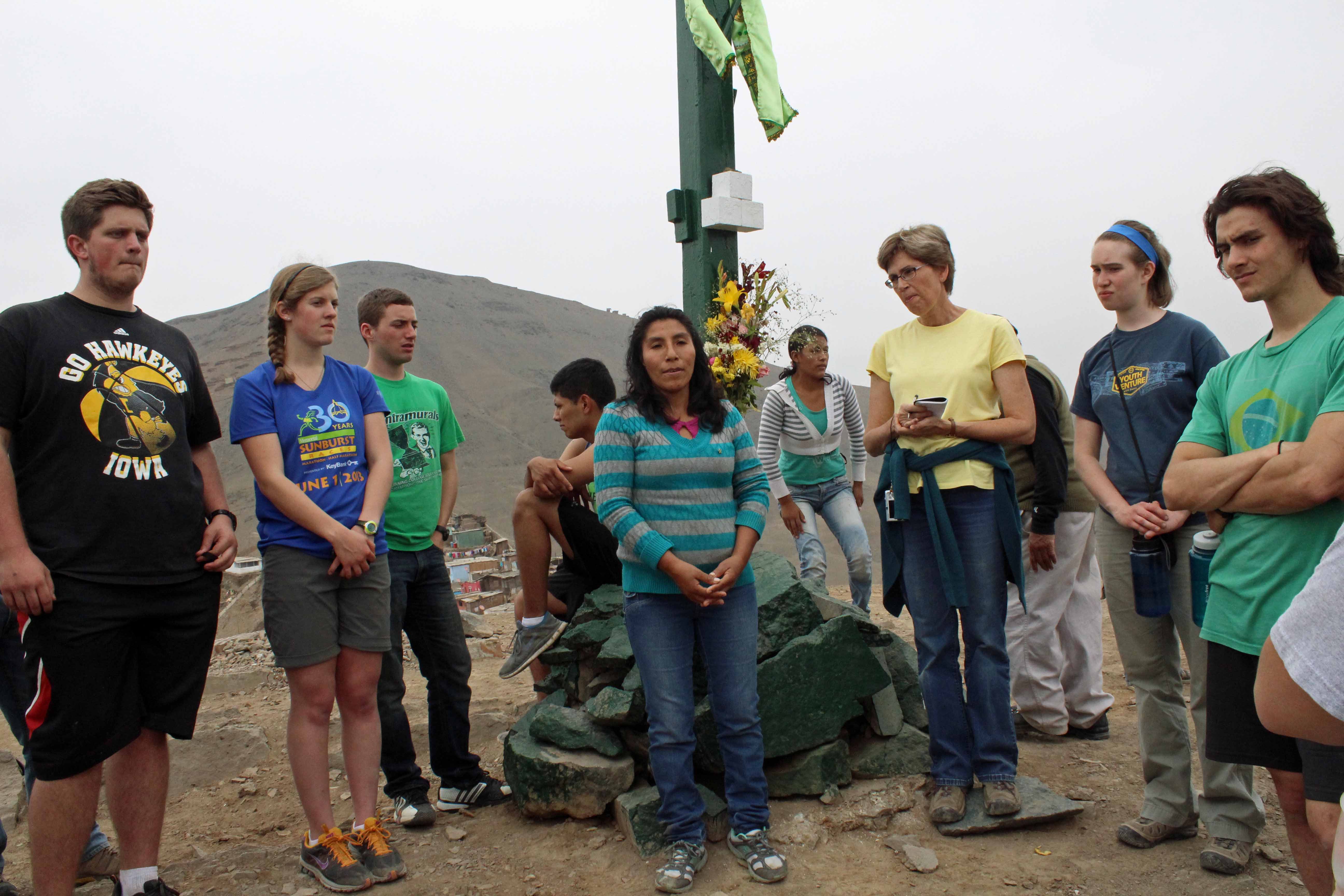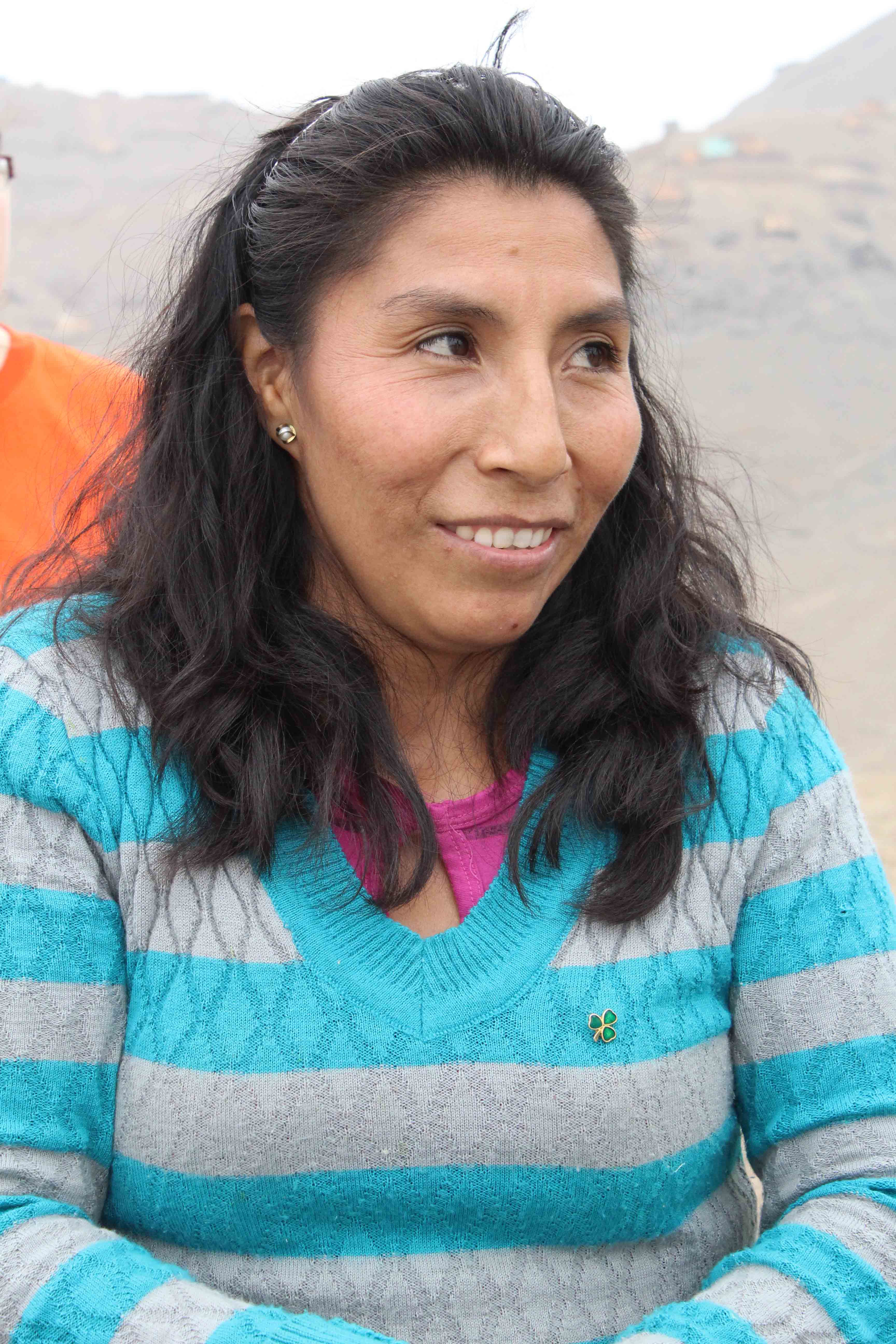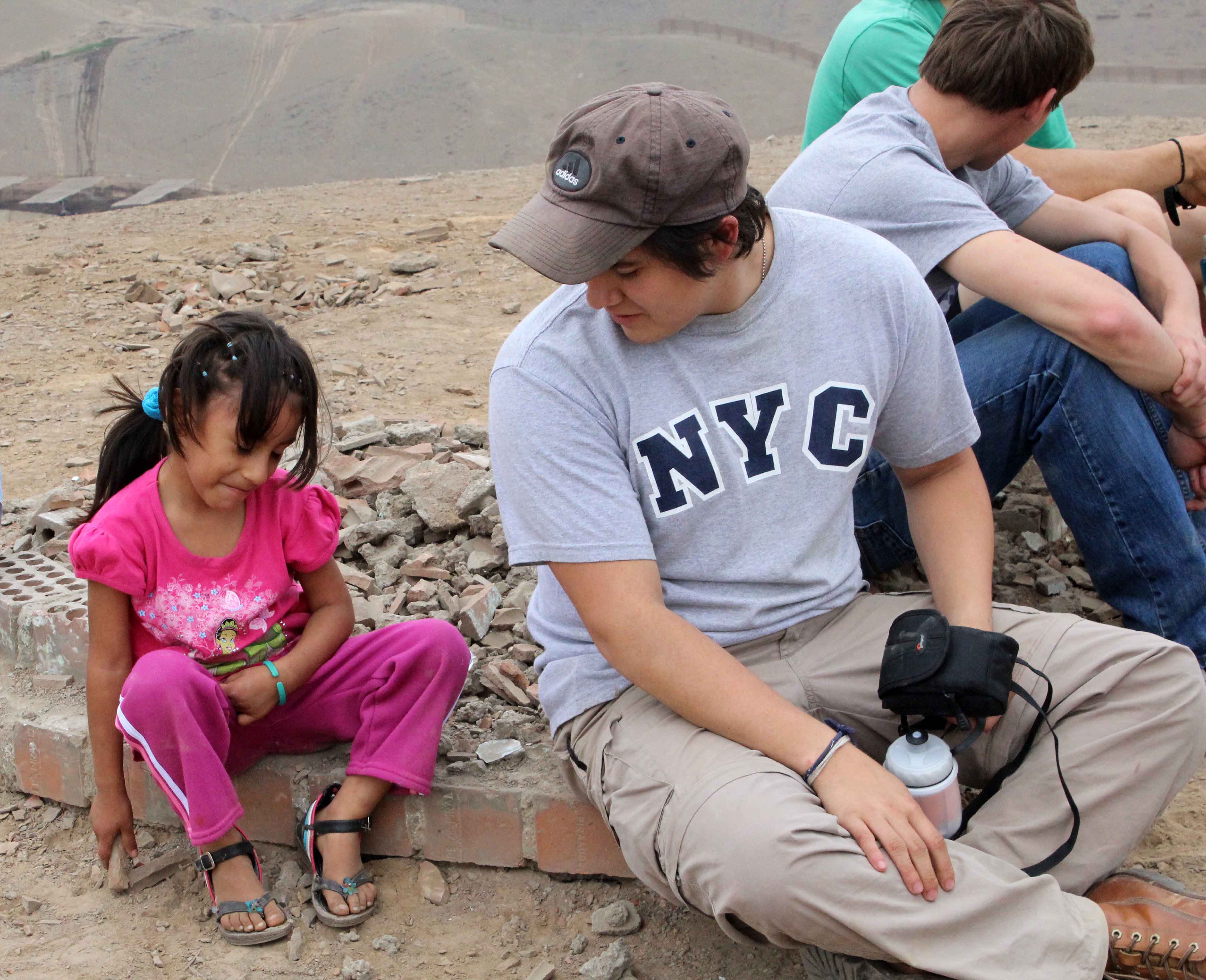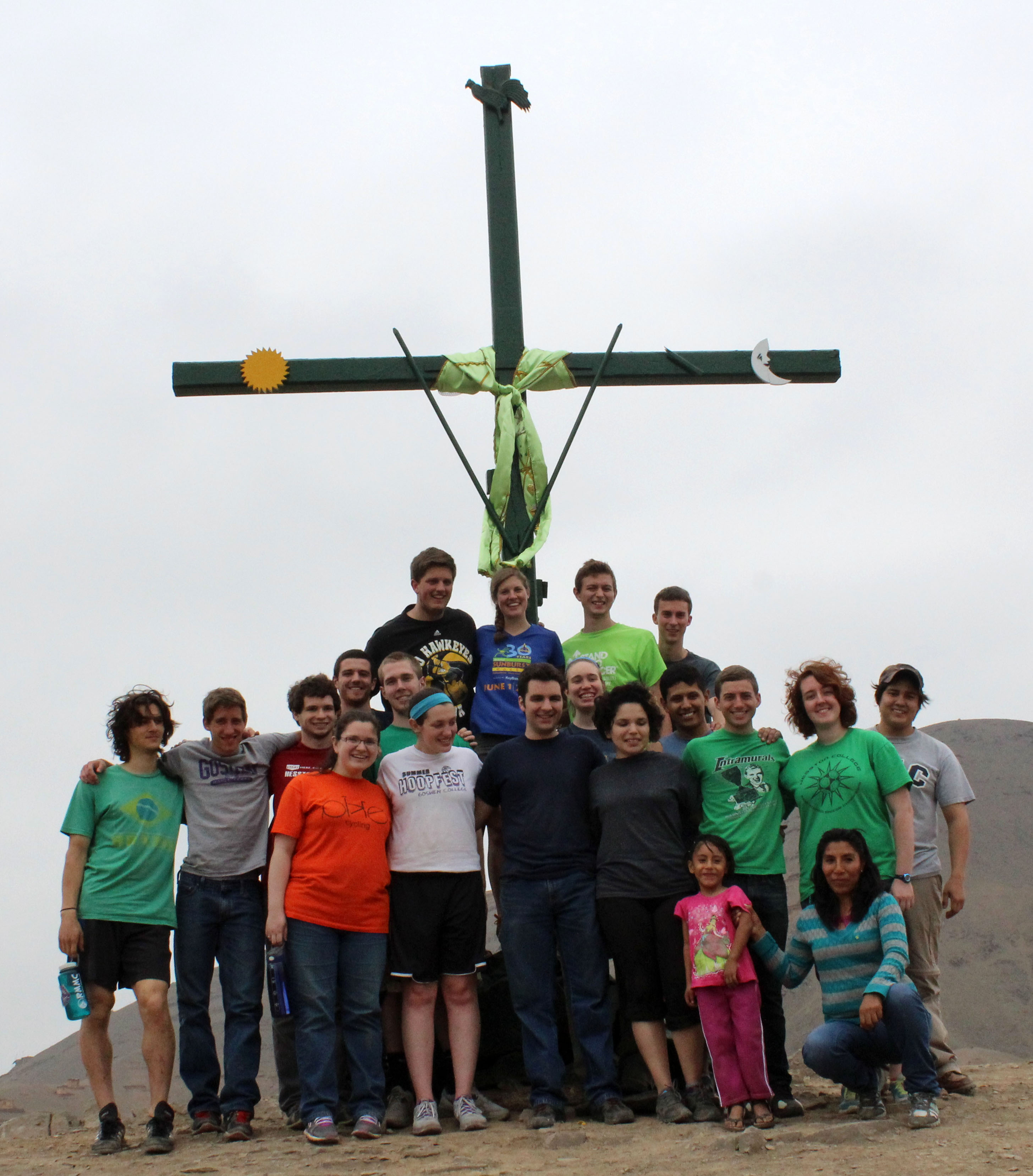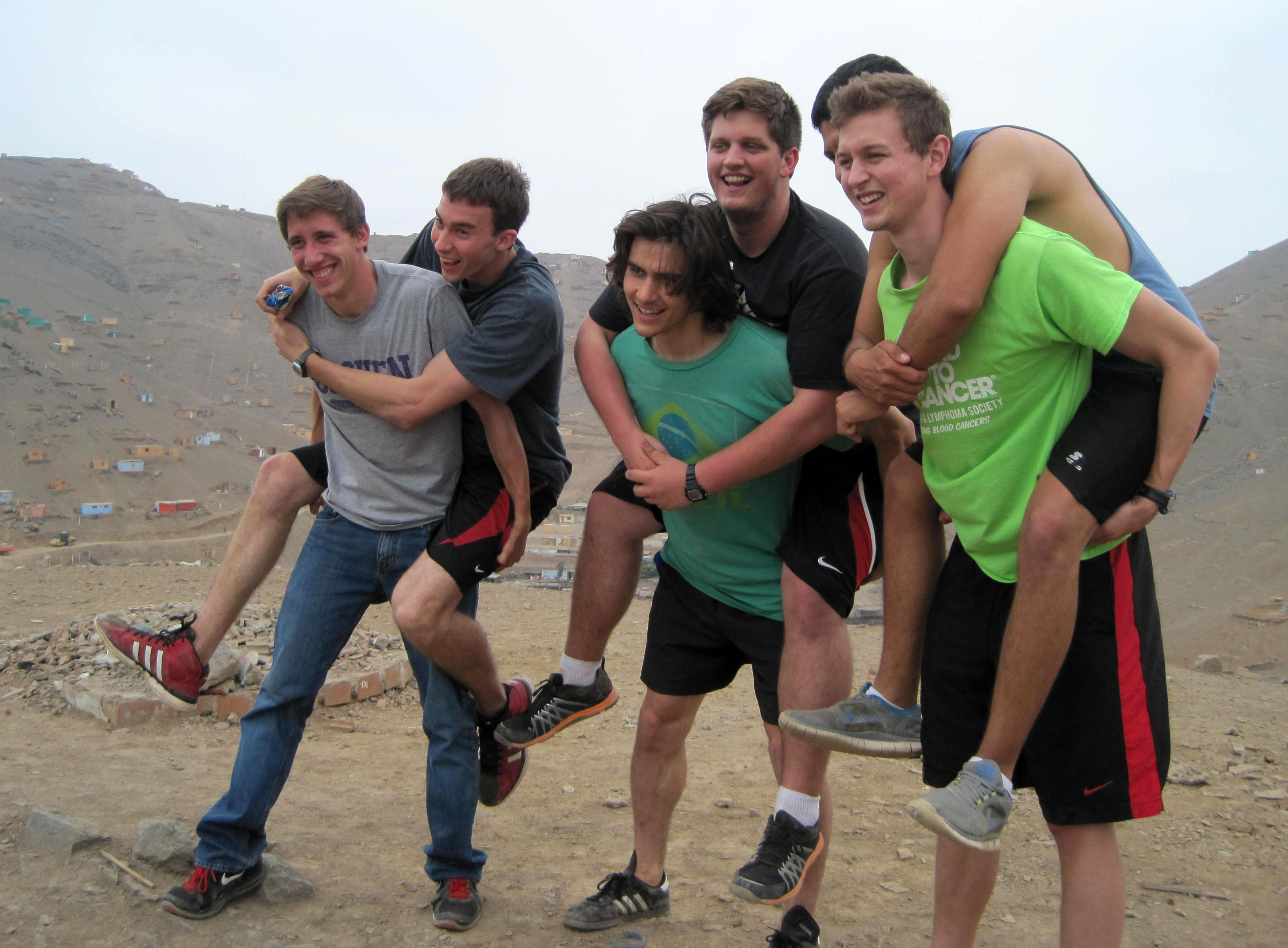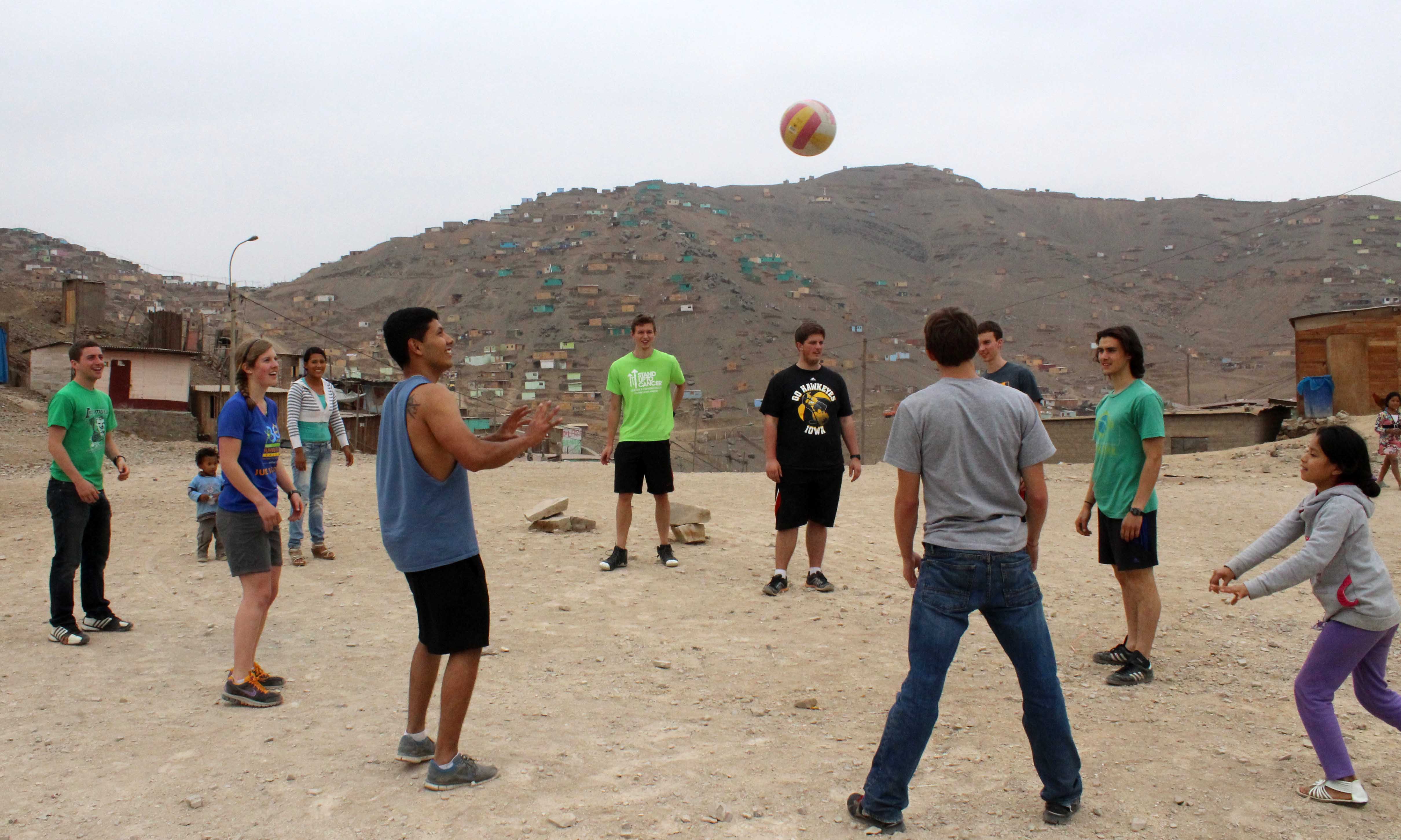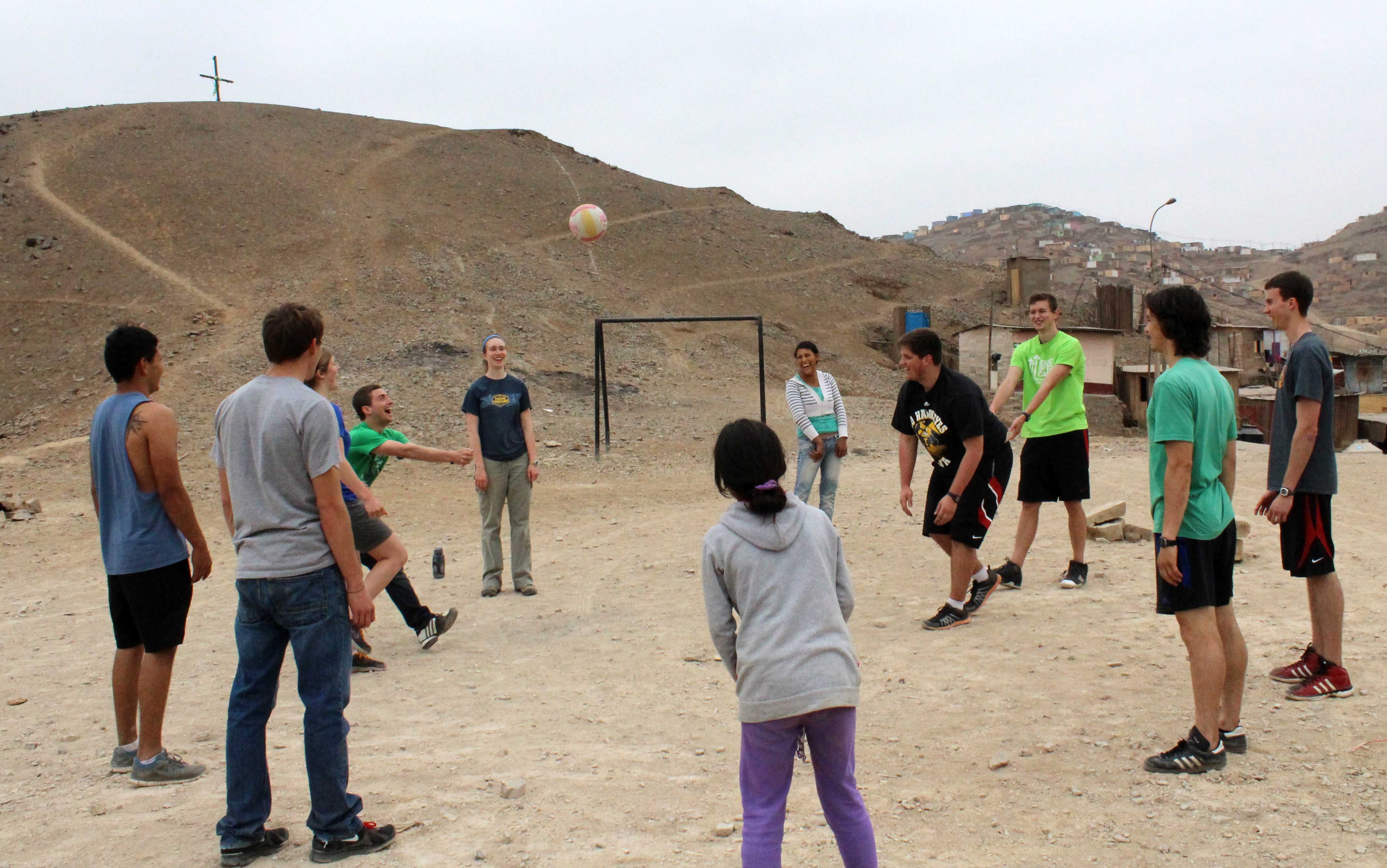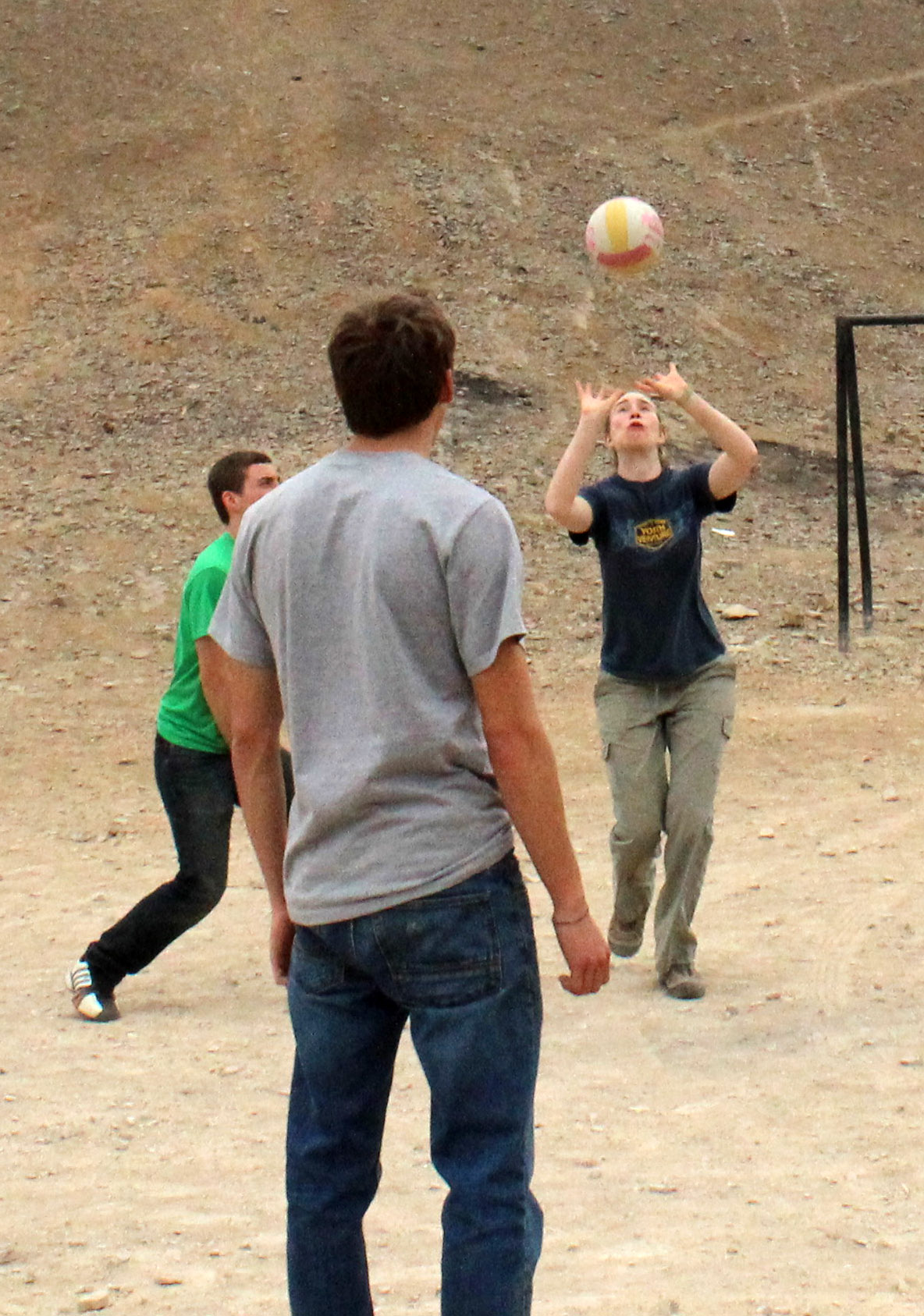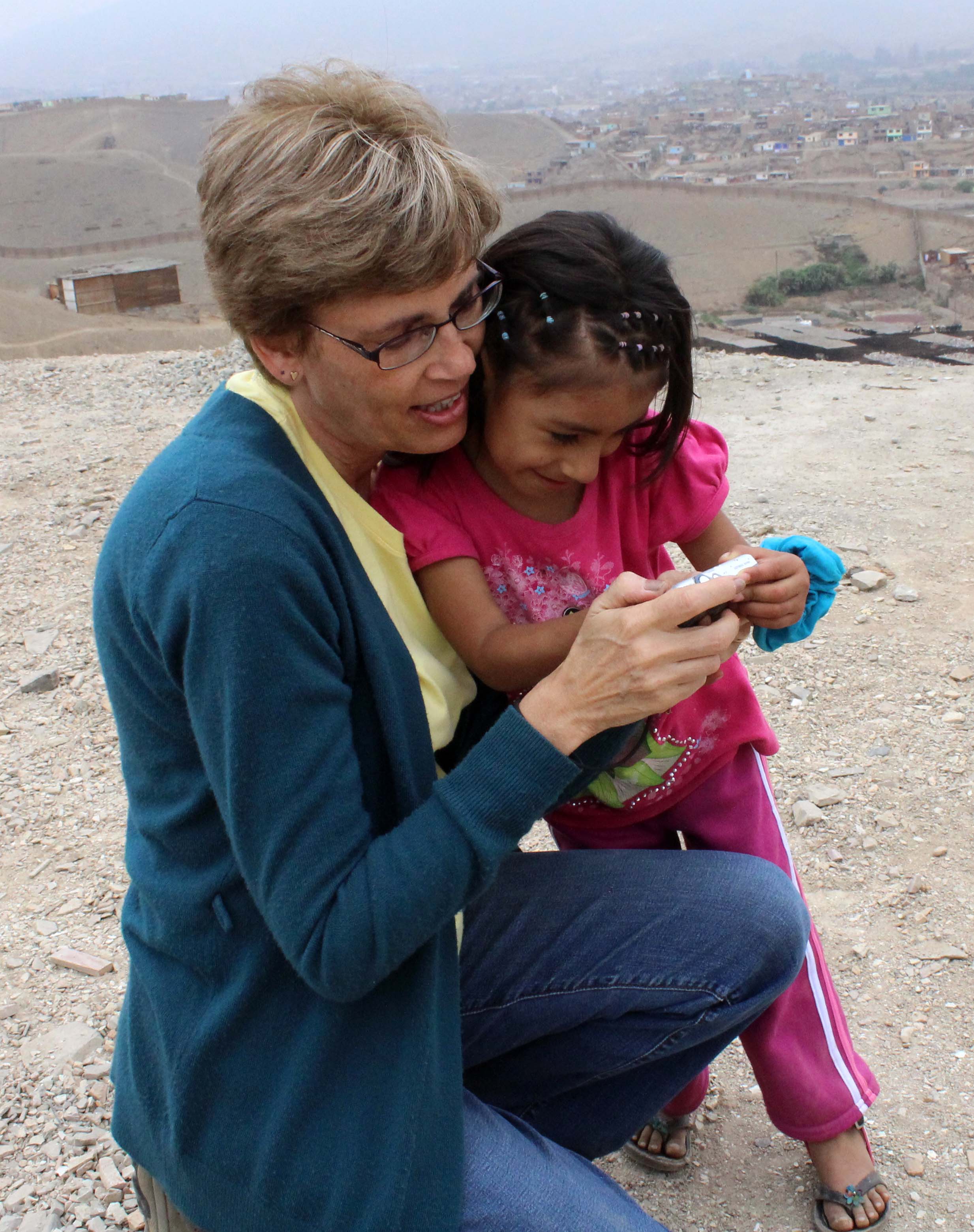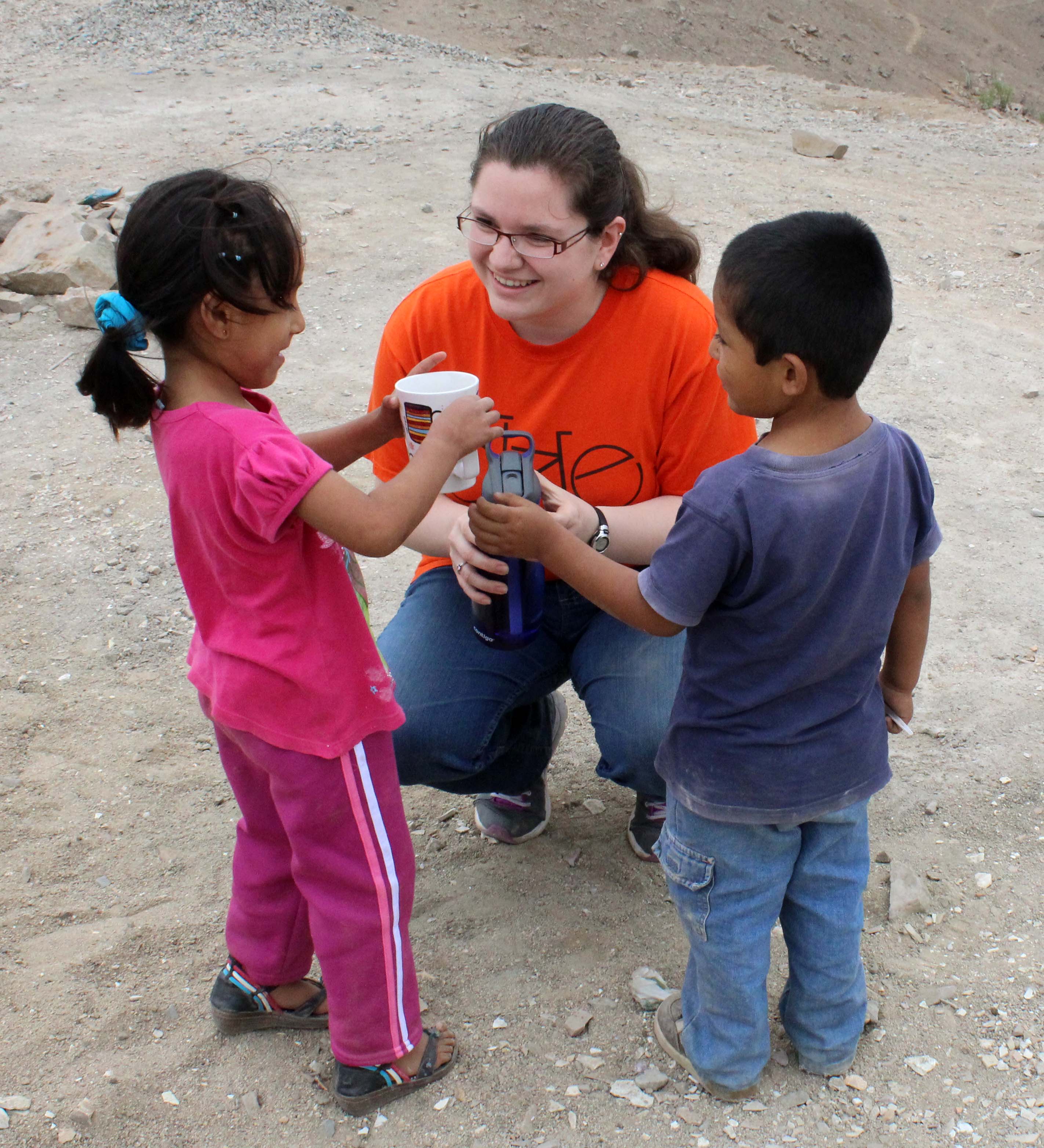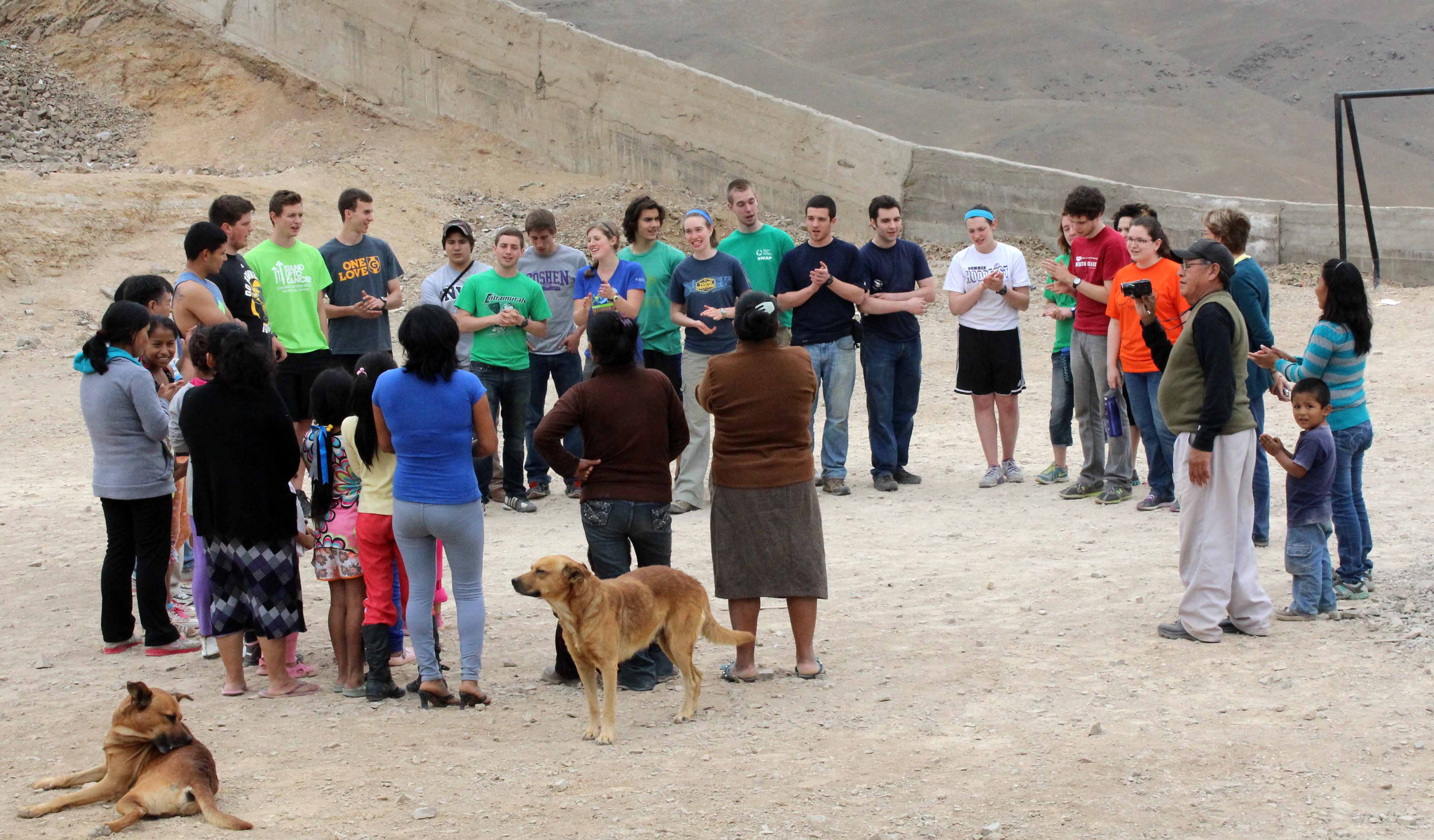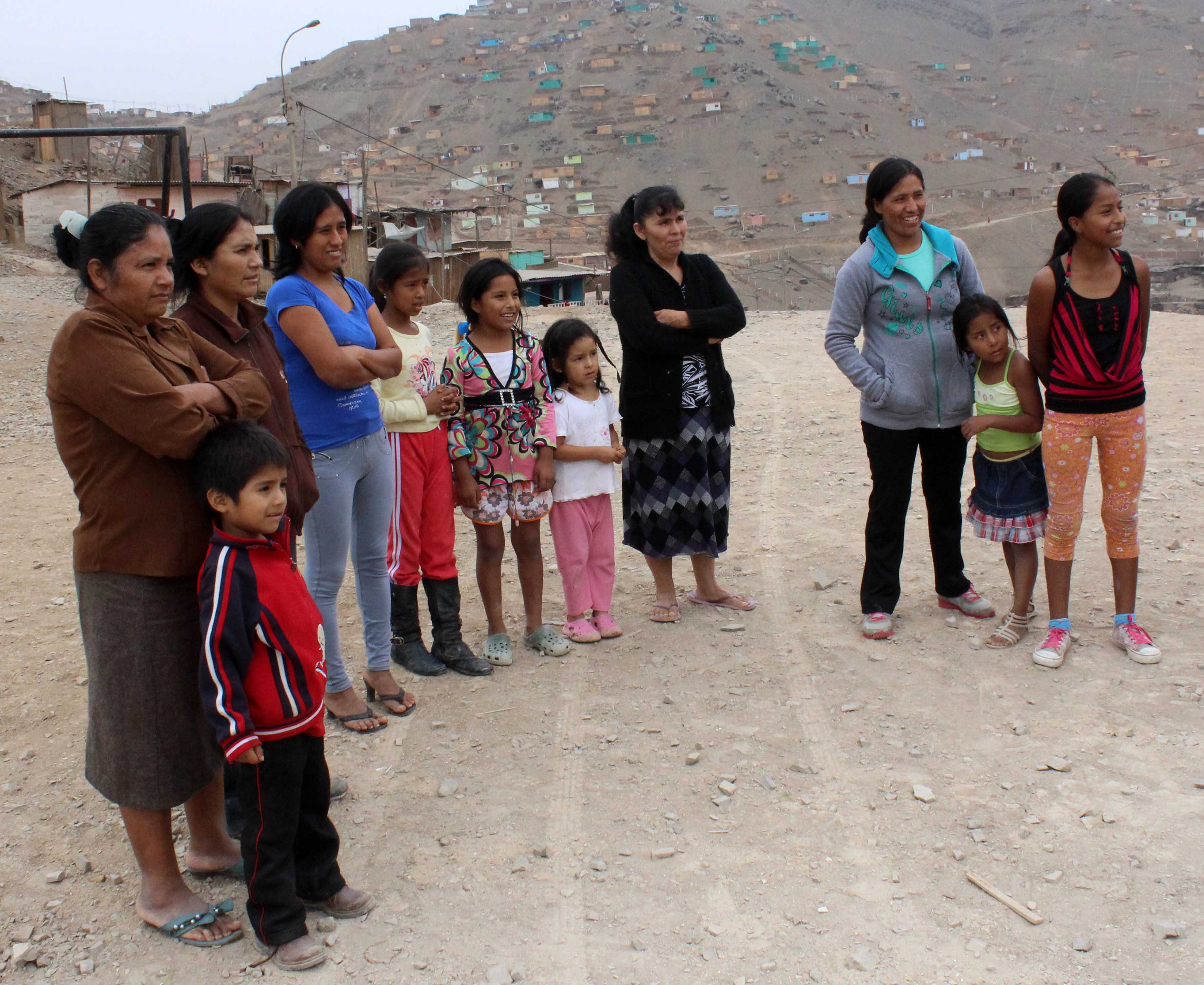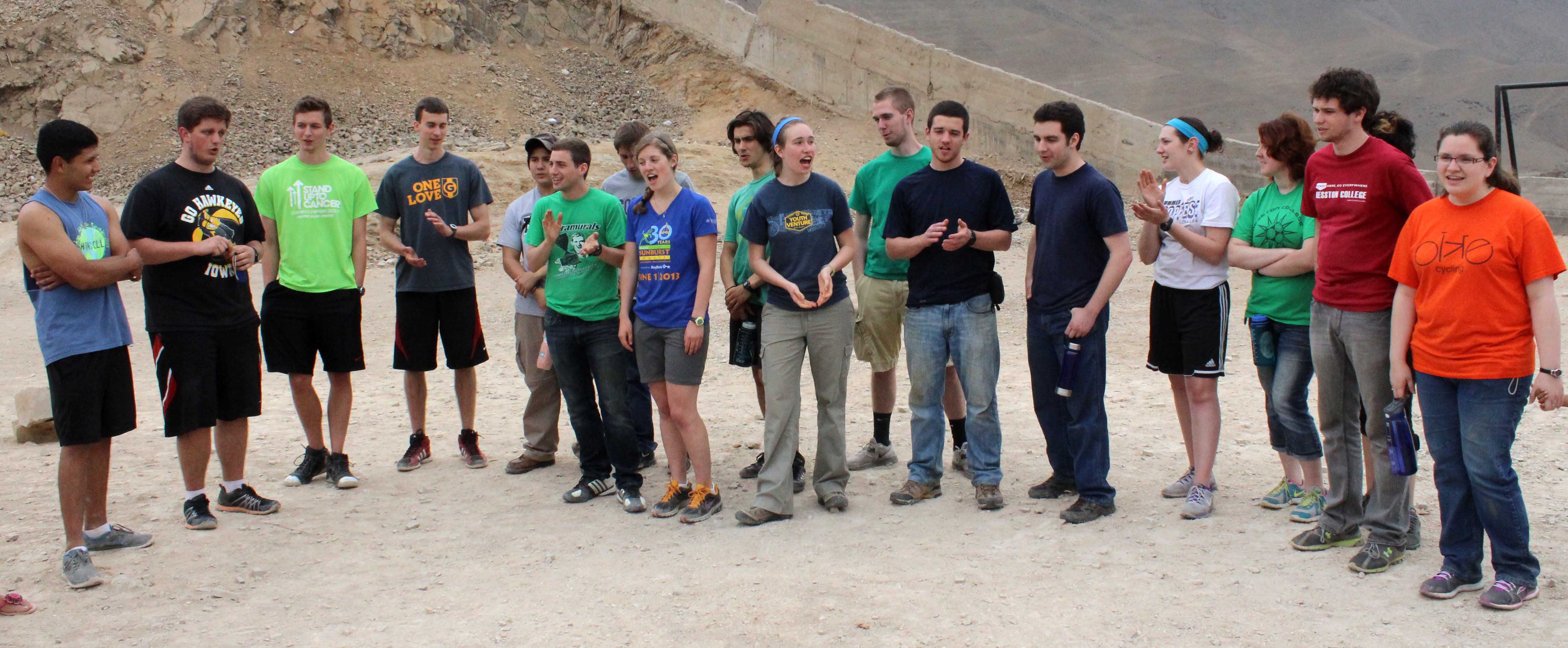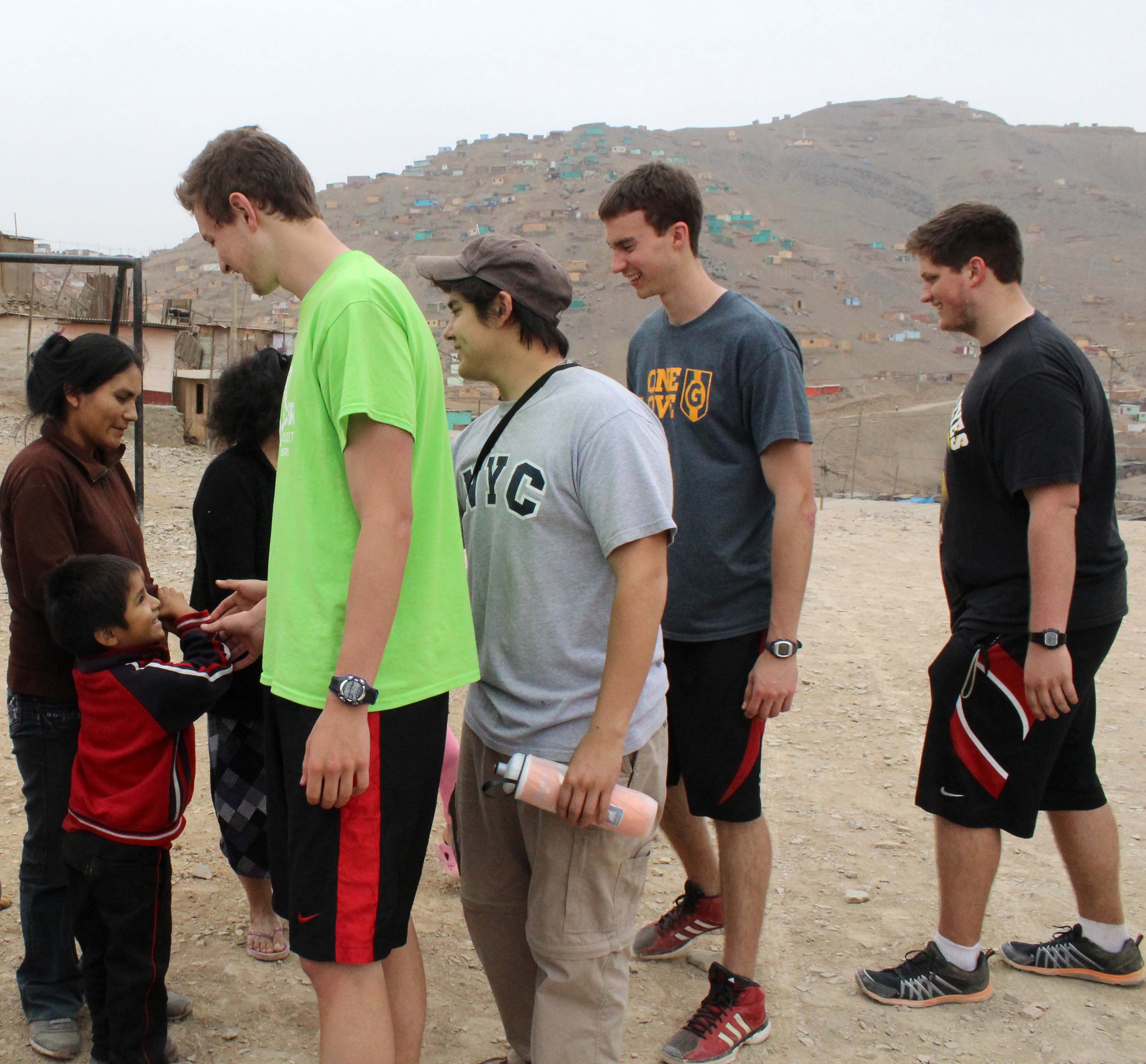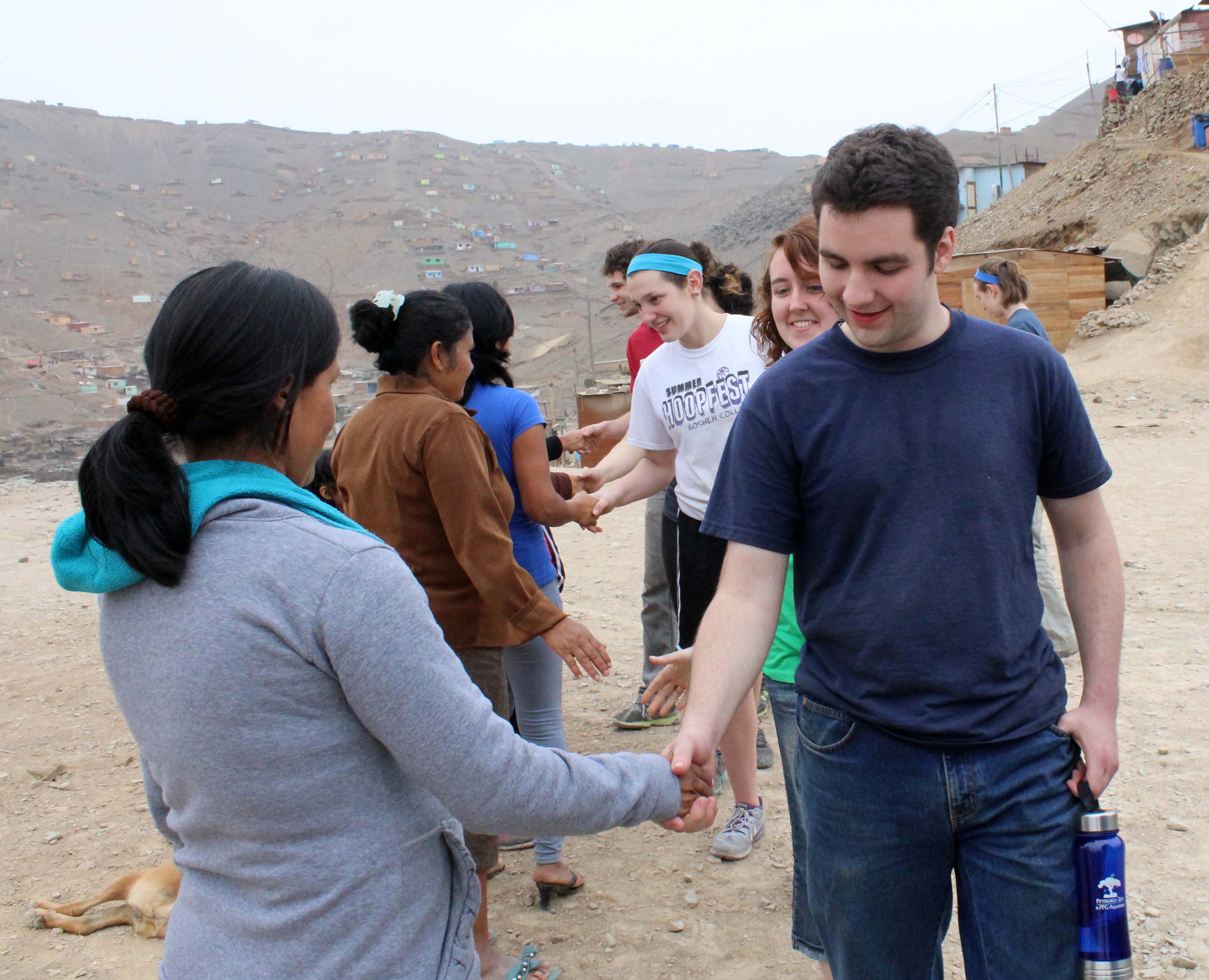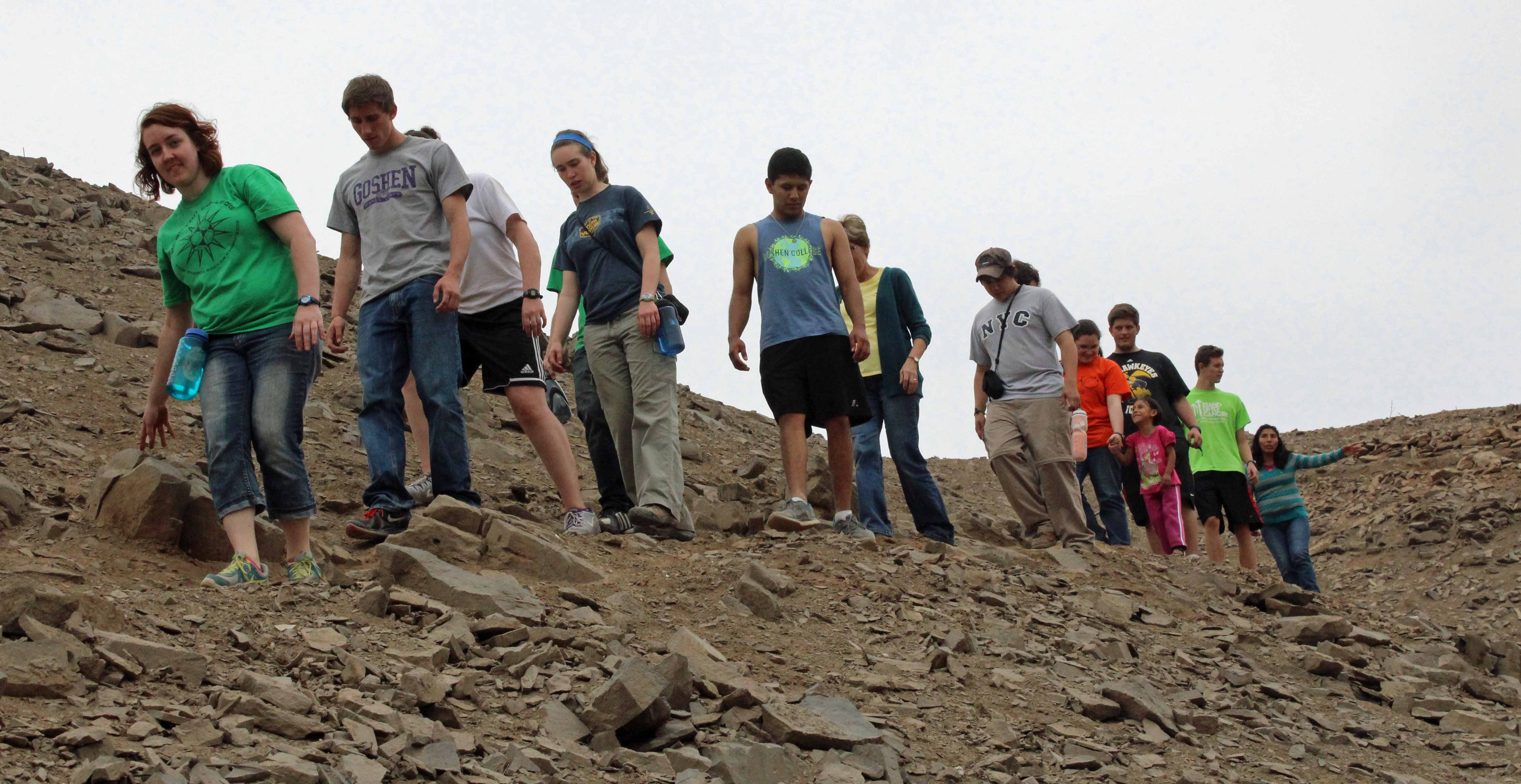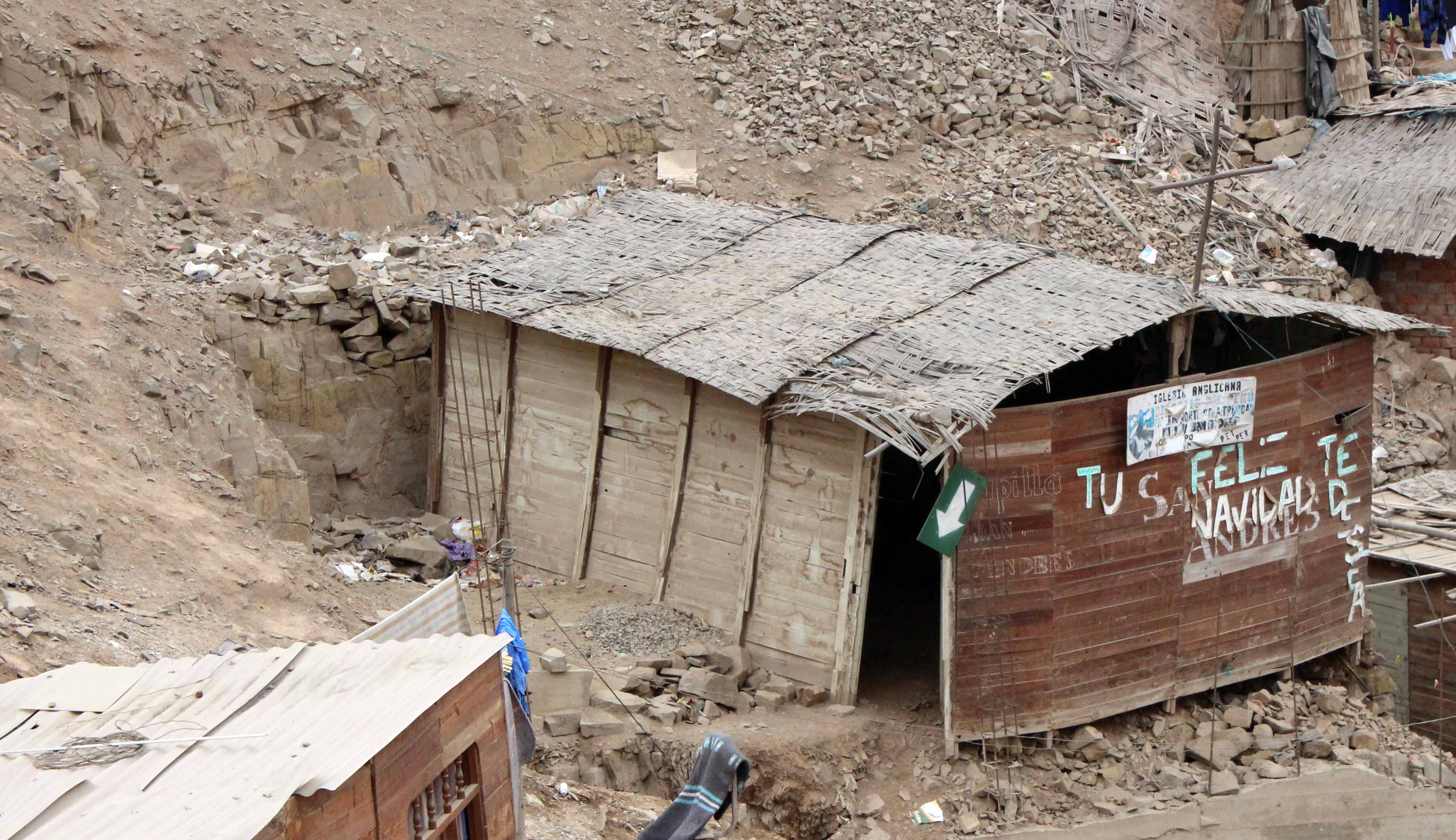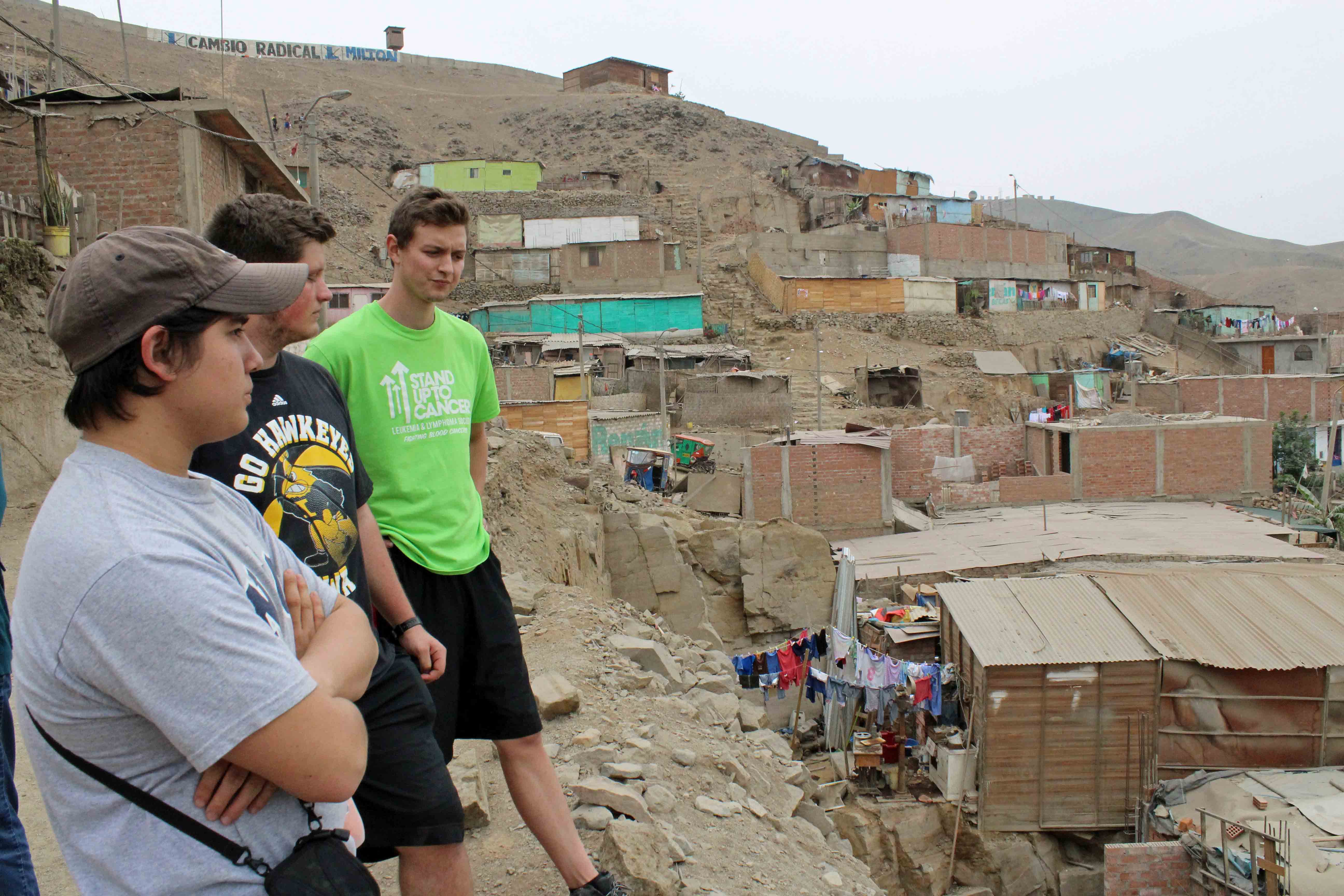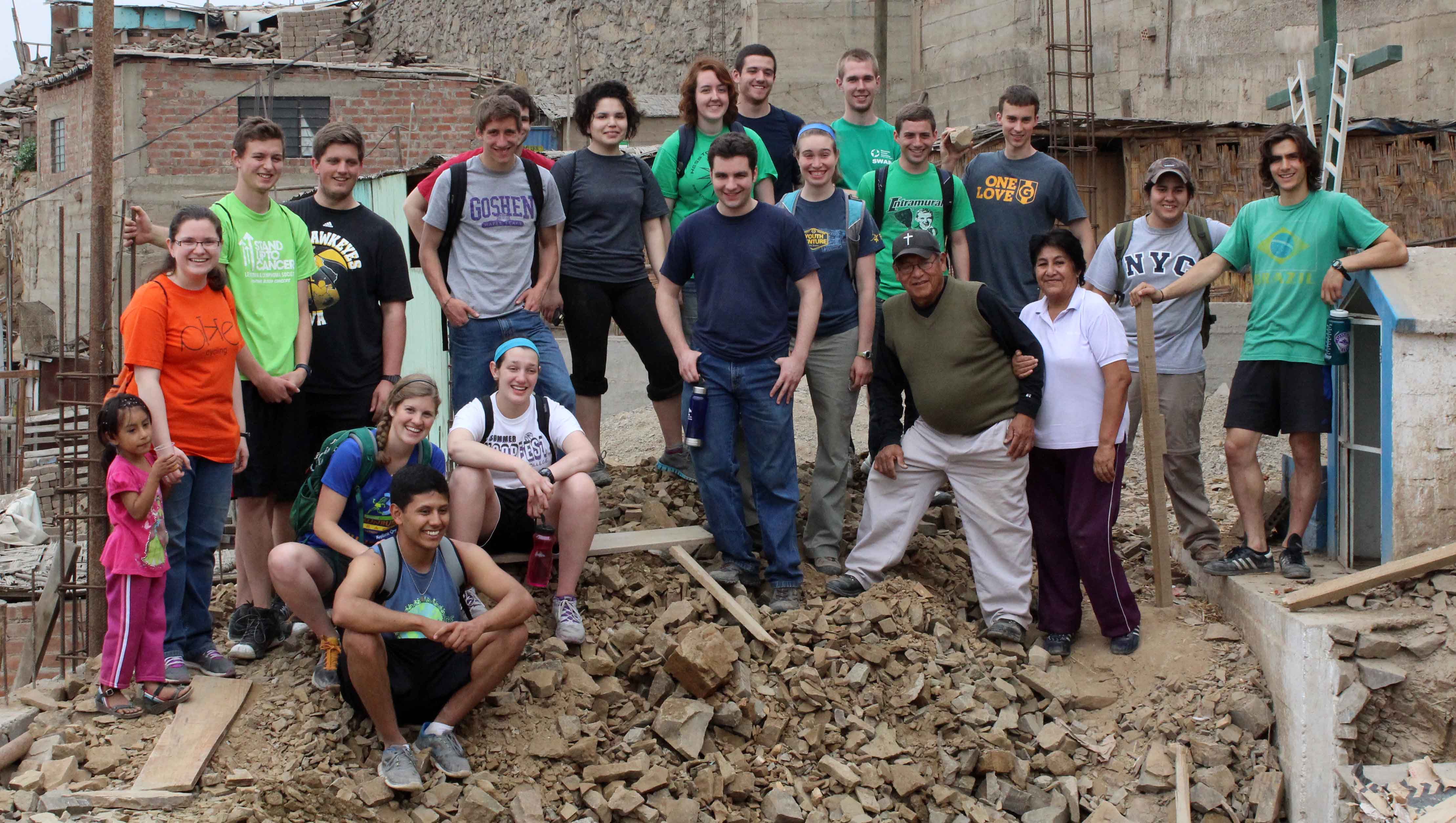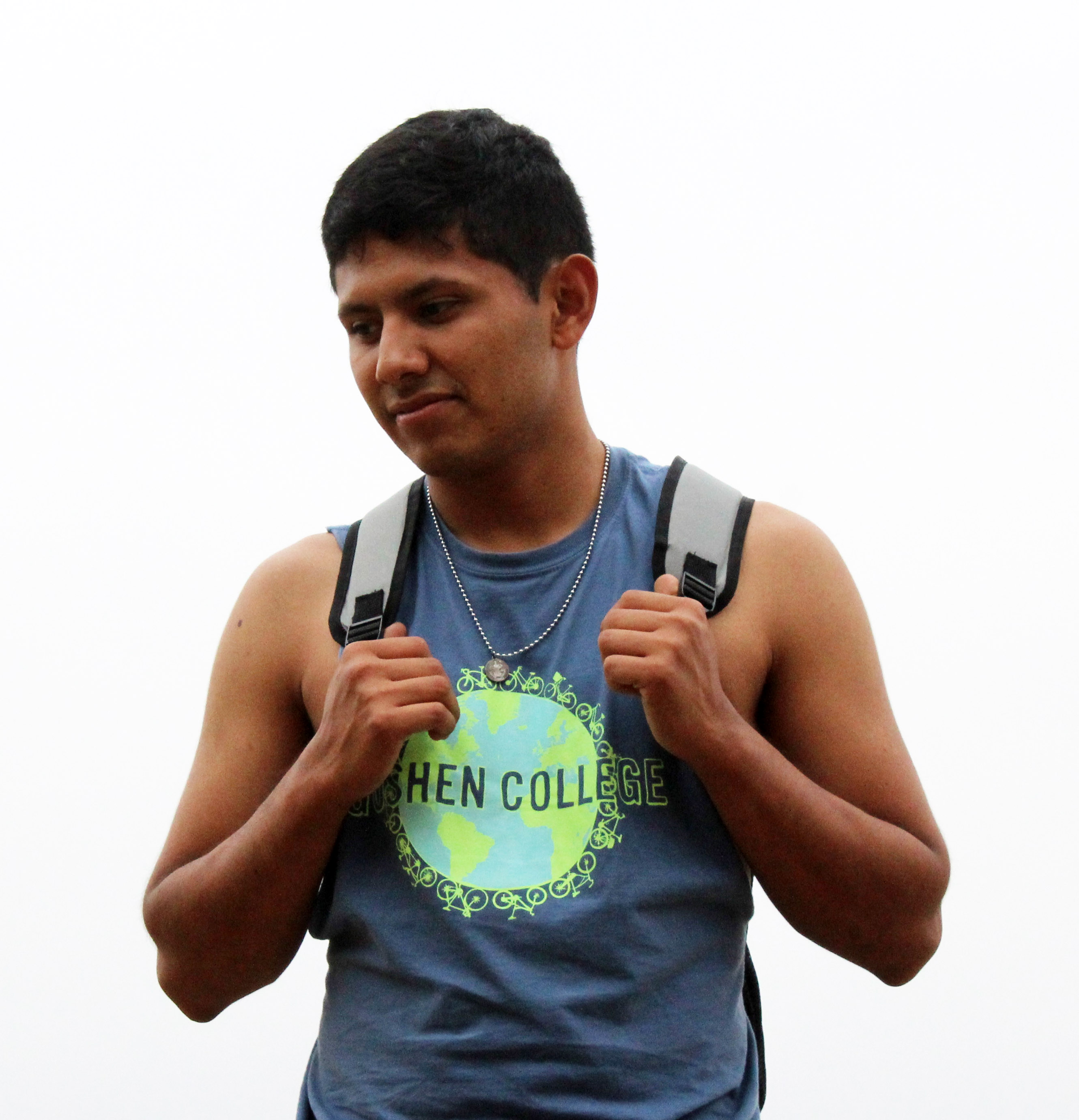Learning from the poor in Puente Piedra
On May 9, the Peru SST Summer unit visited Puente Piedra (Stone Bridge), a district of more than 230,000 people in the northern area of Lima. Although the district was founded in 1927, it also is home to tens of thousands of poor people who in recent decades have settled on rocky hillsides and live in wooden shacks with only basic services.
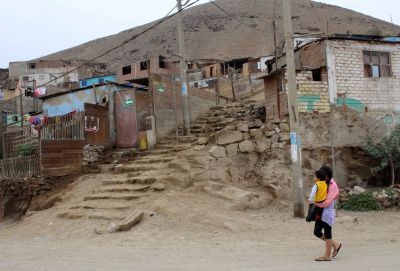
To learn about the lives of such people, we visited Misión San Andrés Santísima Cruz, an Anglican church mission founded and led by Pastor Benjamin Salas Aguirre and his spouse, Livia Achahuanco. Besides the difficult work clearing rocks from the church’s tiny property, students also hiked to the summit of a small mountain, heard the story of a woman who built a home in the neighborhood and met other area residents.
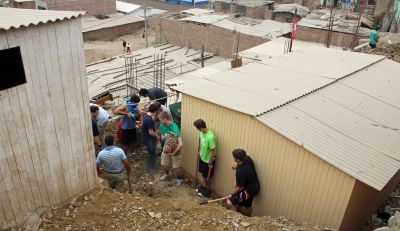
Alejandro Genis Garcia, a sophomore biology major, described the compelling experience in his journal. What follows is Alejandro’s account.
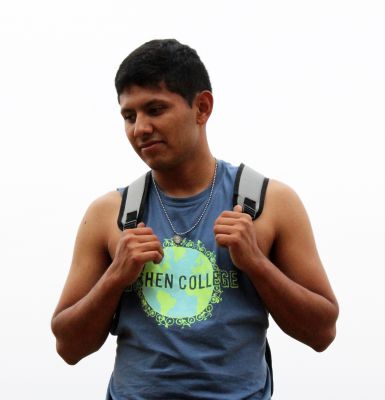
Today we visited Puente Piedra to help with construction work on an Anglican mission. Father Benjamin is in charge of the mission and he is actually my host father in Villa Maria del Triunfo in the southern part of Lima. We all met at the Buen Pastor (Anglican) Cathedral and made around an hour commute to Puente Piedra.
On the way there we saw several historic buildings that reminded me of the “Angel of Independence” in Mexico City. As we got closer, I started to notice more and more motor-taxis, which are little three-wheeled taxis. The businesses I also saw began to have dirt parking lots. These two things made me realize we were approaching a poorer part of Lima. I saw a lot of motor-taxis in the poorer areas where I live, so that is how I made that connection.
As we approached our destination, I definitely began to notice the terrible conditions that the roads were in, and they finally turned into dirt roads. Our combi parked at the bottom of a “cerro,” a small mountain. We all got out and I saw how poor and underdeveloped the area that we were in was. I have never seen anything like it in person.
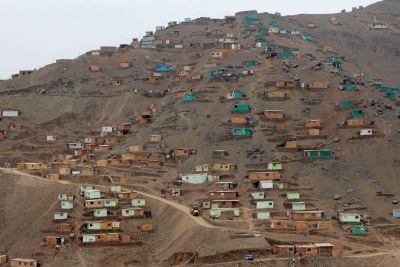
Houses were all over the place and ran up all along the cerros. The houses were like shacks and there was little to no space in between them. I noticed that some doors to houses were uneven pieces of wood held together by wire.
Father Benjamin and my host mother, Livia, walked down some stairs that looked severely damaged and they received us. Father Benjamin said a prayer for all of us and we followed them up the rock steps until we reached the mission. The mission is small building with three rooms and another smaller room separate from it that is a bathroom. I was extremely surprised to see that the bathroom had running water. I could not and still do not understand how places like that can have sewer systems when they are built on the edge of a very rocky slope.
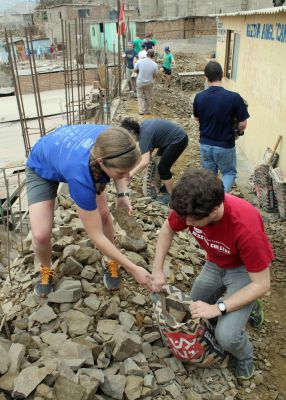
There are a lot of loose rocks spread all over and the land is very uneven. Our duty was to clear as many rocks as possible and level the area with shovels and pick-axes. We worked well as a team, but the task of leveling so much rock is so large that at some point everyone felt helpless. We still made a good amount of progress and thanks to a neighbor, we were able to have two wheel barrels to clear so much rubble.
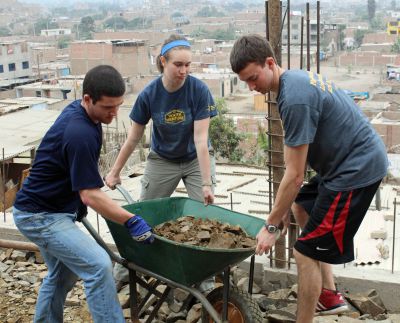
I felt happy to know I was helping toward such a good cause, but I still wish we could have gotten much further than we did. While we were working my mom had been preparing some sort of baked chicken, rice and Russian salad. We had a delicious lunch.
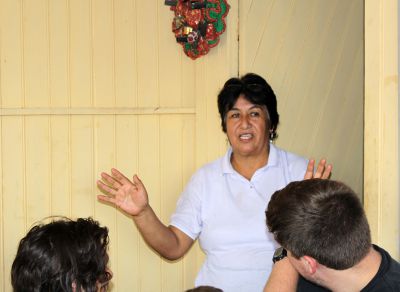
After lunch we began to climb up the cerro through neighborhoods so that we could get to the top. It made me uncomfortable to see the climb as a hike because I know the people living in that area have to make that “hike” every day just to get home!
When I had been told about that area and how poor it was, I did not imagine it being this poor. I don’t want to sound so negative, but it was filthy. Even the stray dogs seemed in worse shape than those in my neighborhood; and I haven’t seen so many stray dogs around Miraflores, if I’m going to compare.
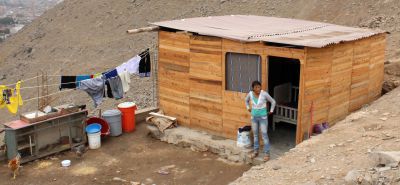
As we made our way up the rock slope, we could look down at the neighborhoods that make up Puente Piedra. Many of the homes looked like they were falling apart, including the old Anglican church that had been damaged by an earthquake. When we made it to the top, we all stood by a large cross that was supported by large rocks at its base that were painted green.
While we were there, a 38-year-old woman that had been living in Puente Piedra since 1996, along with Father Benjamin, gave us some history of the area. Father Benjamin showed us how the cerro next to that one had newer wooden houses and had grown a population in just a year and a half. The houses looked in better shape since they were new, too.
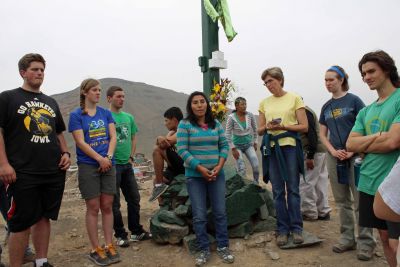
The 38-year-old woman named Jesusa then let us know about her time living on that cerro. It sounds cliché but her talk really made me appreciate what I have back home. She explained how she would do similar labor to what we did earlier that day, but with a baby on her back. That alone amazed me.
She also explained how it took several years of her selling food as a street vendor and working hard to finally have running water and then a sewer system in her home.
What she said next also amazed me. She said that when she finally had those services, she and her family were happy. Another woman standing next to her chuckled and muttered, “Si, estamos alegres (Yes, we are happy).” She ended with telling us how thankful she was for having the word of God make its way into the lives of those on the cerro thanks to Father Benjamin and politely asked for help, in other words, donations. At that moment, I wished I had a million dollars to donate.
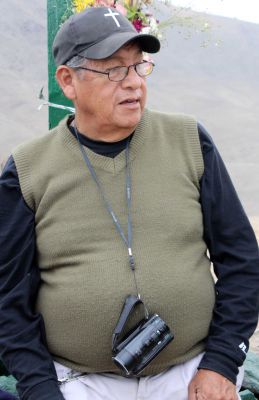
We walked down to where there was a dirt soccer field and a little child ran and got us a volleyball to play with. We eventually got a large number of people from the neighborhood as an audience and several children joined our circle, too. (SST Co-Director) Richard (Aguirre) got us to introduce ourselves and they introduced themselves to us. That was nice.
Soon after, we left and climbed back down to the mission. We took a quick picture in formation and walked back down to where our bus was. It felt weird to leave that place; it often does when you leave a place where you have helped with something and know you will most likely never go back.
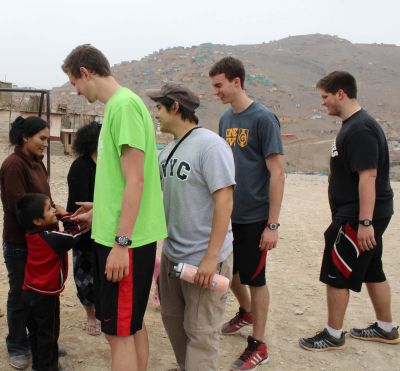
I knew that when we left, the struggle for life for those people that live there will persist. What amazed/inspired me most about this experience was how Jesusa and the other lady had said they were happy when they got running water. It made me think, “Do you not think that even though that’s true, you still live in a shack?”
It sounds terrible, I know, but the more I thought about it, the more I realized that that is how I should think. Often I get pissed off when my phone dies or when I’m low on gas or when the temperature in my house is too cold or too hot. I realize I need to be thankful I have a phone I can charge. I have a CAR! My own car! And most of all, I have a comfortable house where my bed is not a mat on the floor, where I can go to my refrigerator and find something to fill my belly.
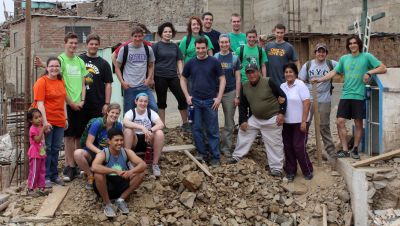
I have seen documentaries on National Geographic or similar channels about poor places similar to this one, but there is nothing like seeing it in person. I am definitely glad this trip was a part of my experience on SST.
